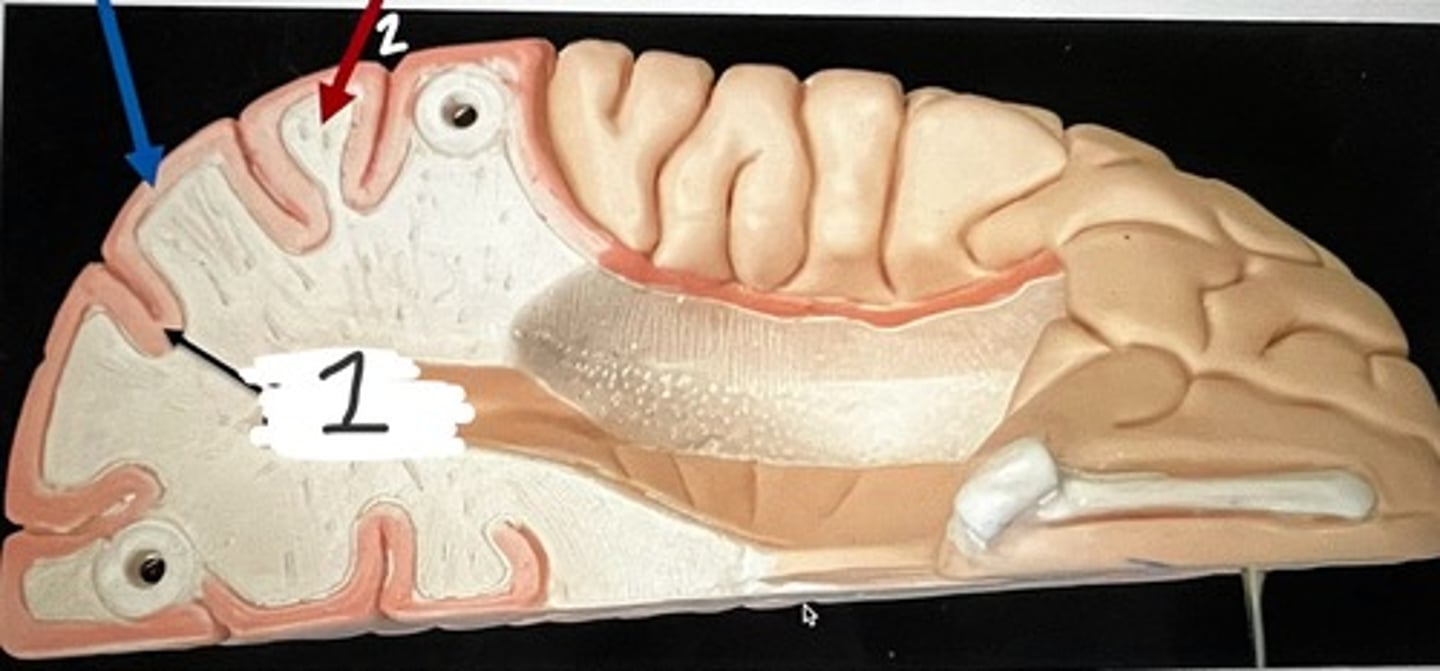Anatomy and Physiology 201 Unit 5 Lab Exam (final)
1/121
There's no tags or description
Looks like no tags are added yet.
Name | Mastery | Learn | Test | Matching | Spaced |
|---|
No study sessions yet.
122 Terms
cell body
According to the model, what does #1 represent?
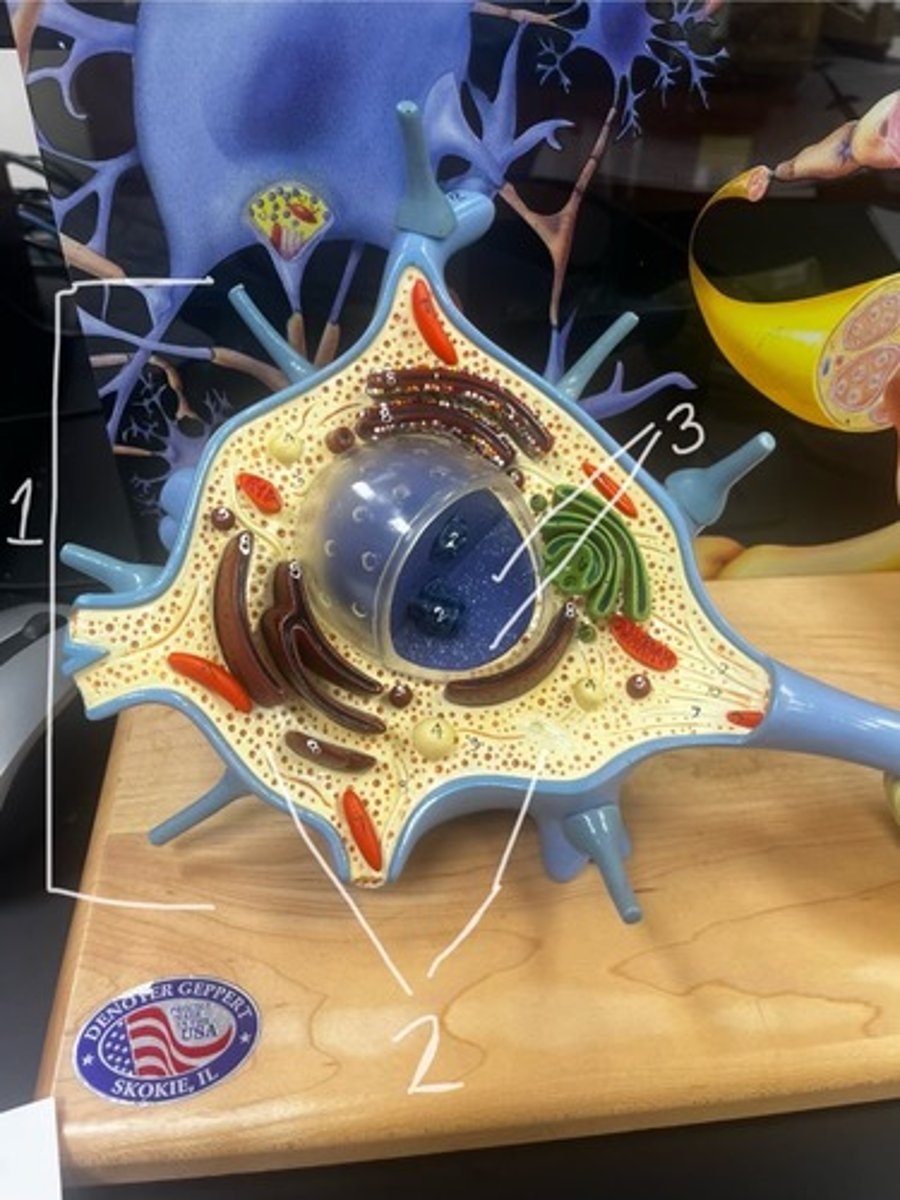
soma
What is another word for cell body?
cytoplasm
According to the model, what does #2 represent?
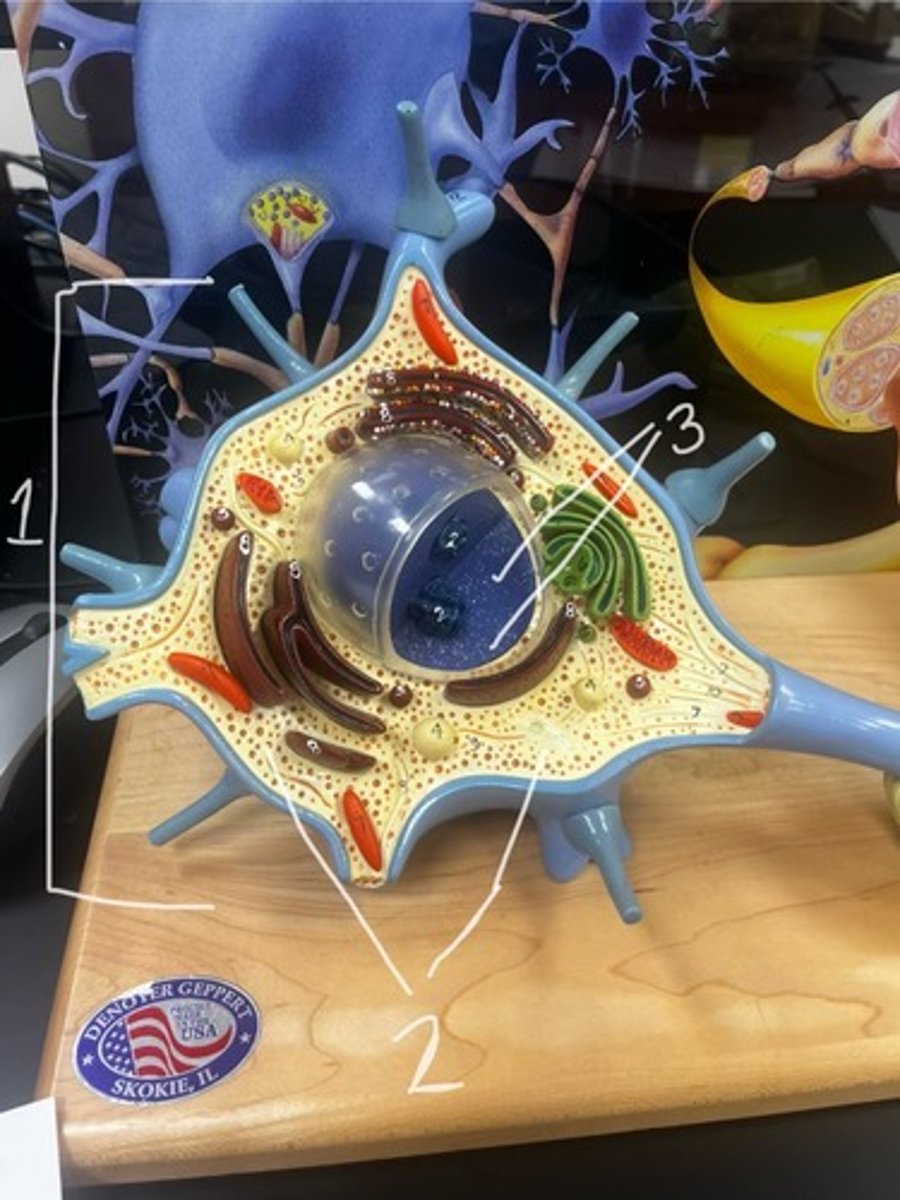
nucleus
According to the model, what does #3 represent?
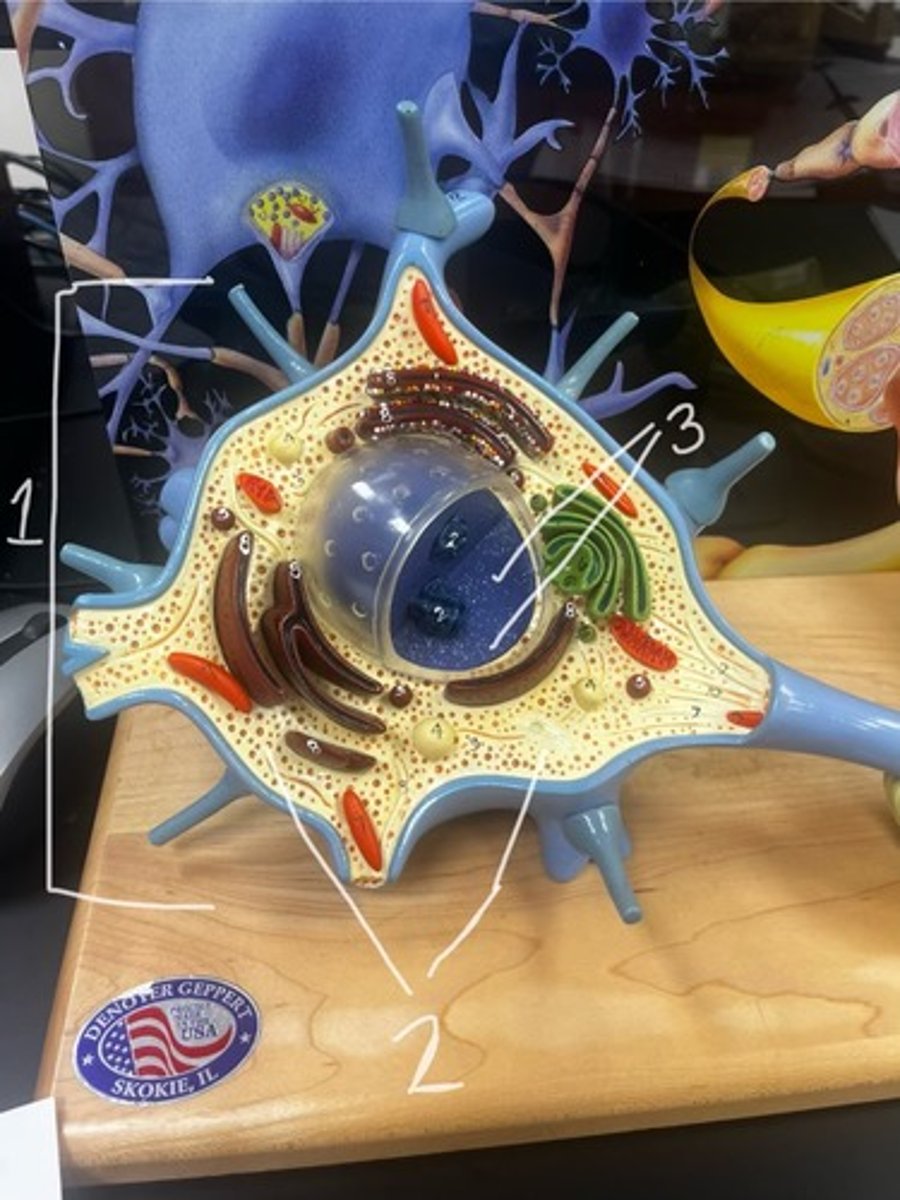
dendrites
According to the model, what does #2 represent?
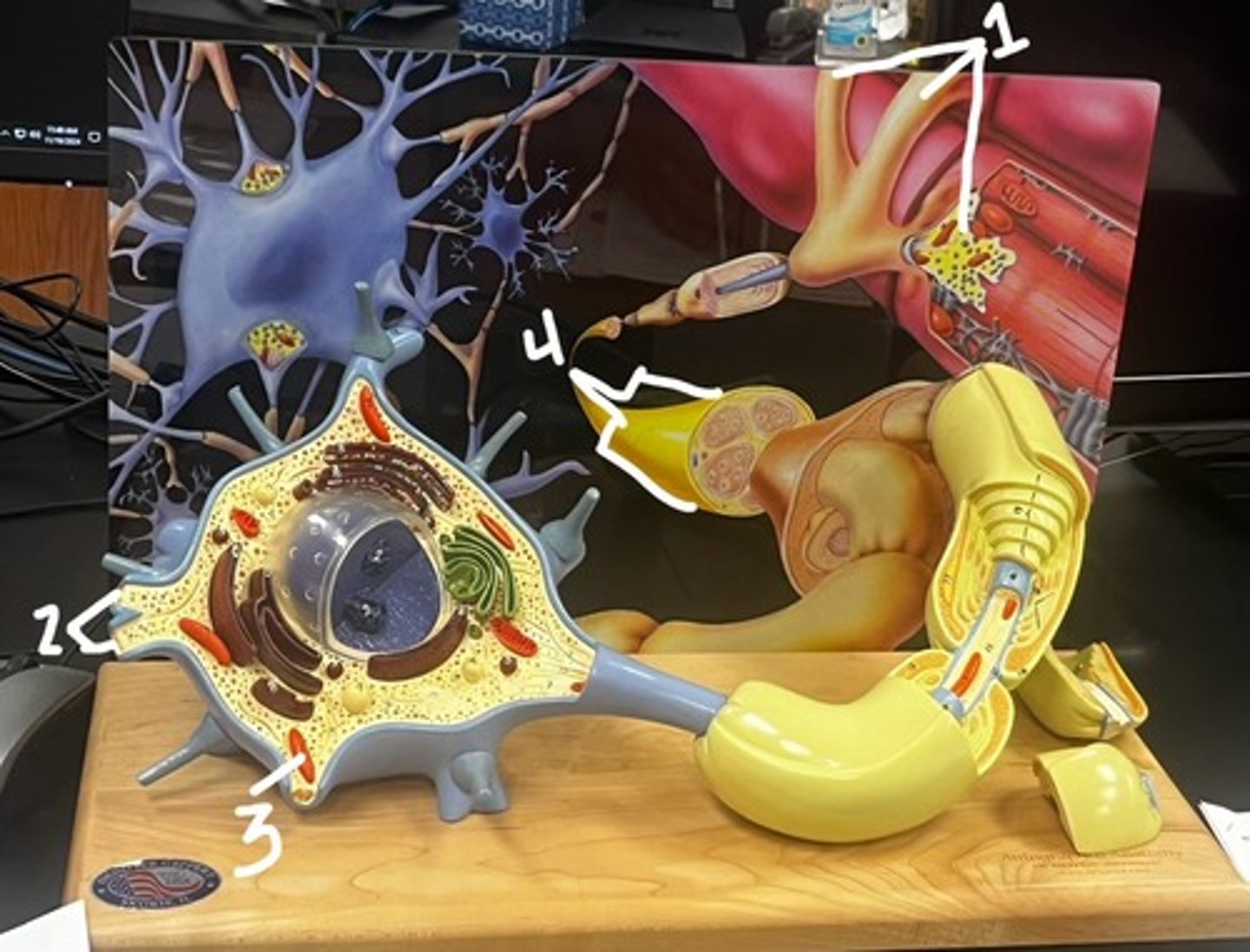
axon
According to the model, what does #1 represent?
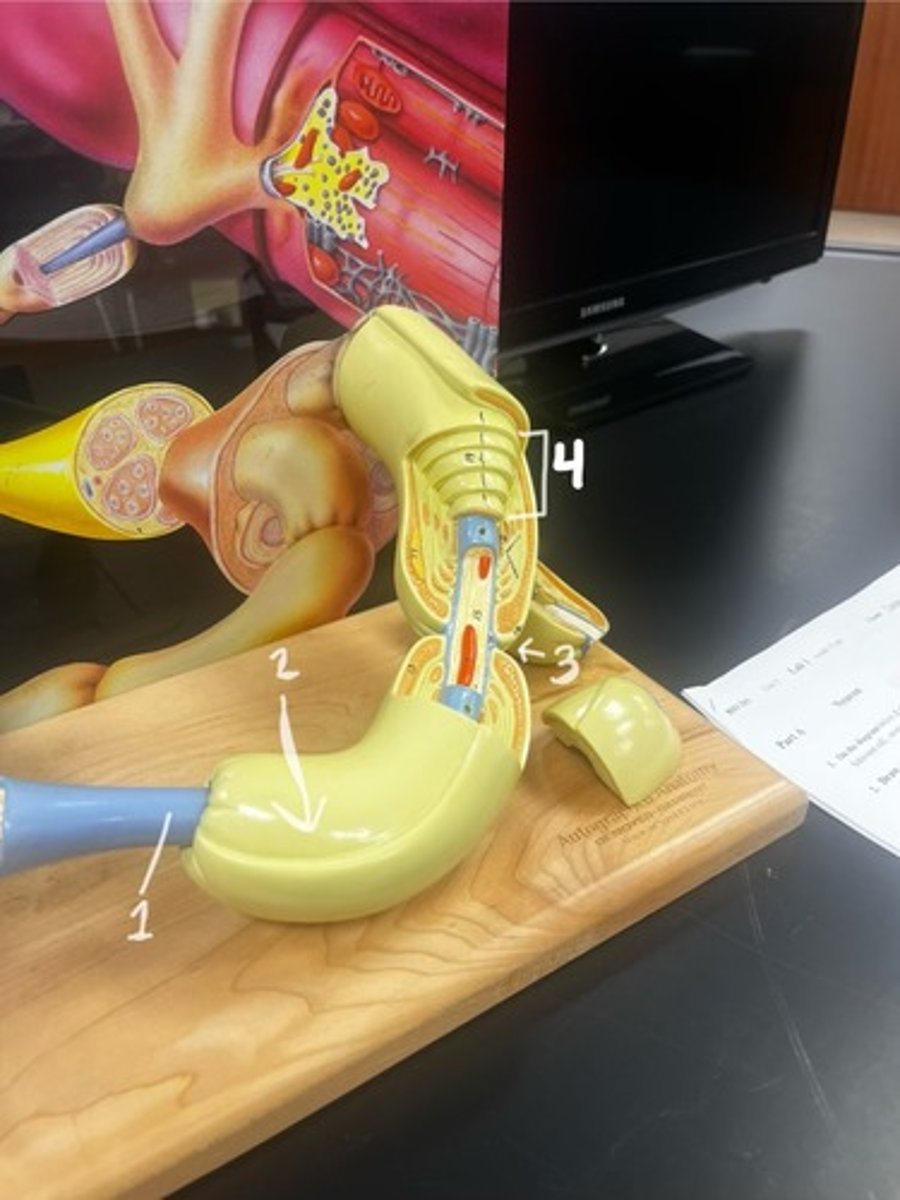
Schwann cell
According to the model, what does #2 represent?

node of ranvier
According to the model, what does #3 represent?
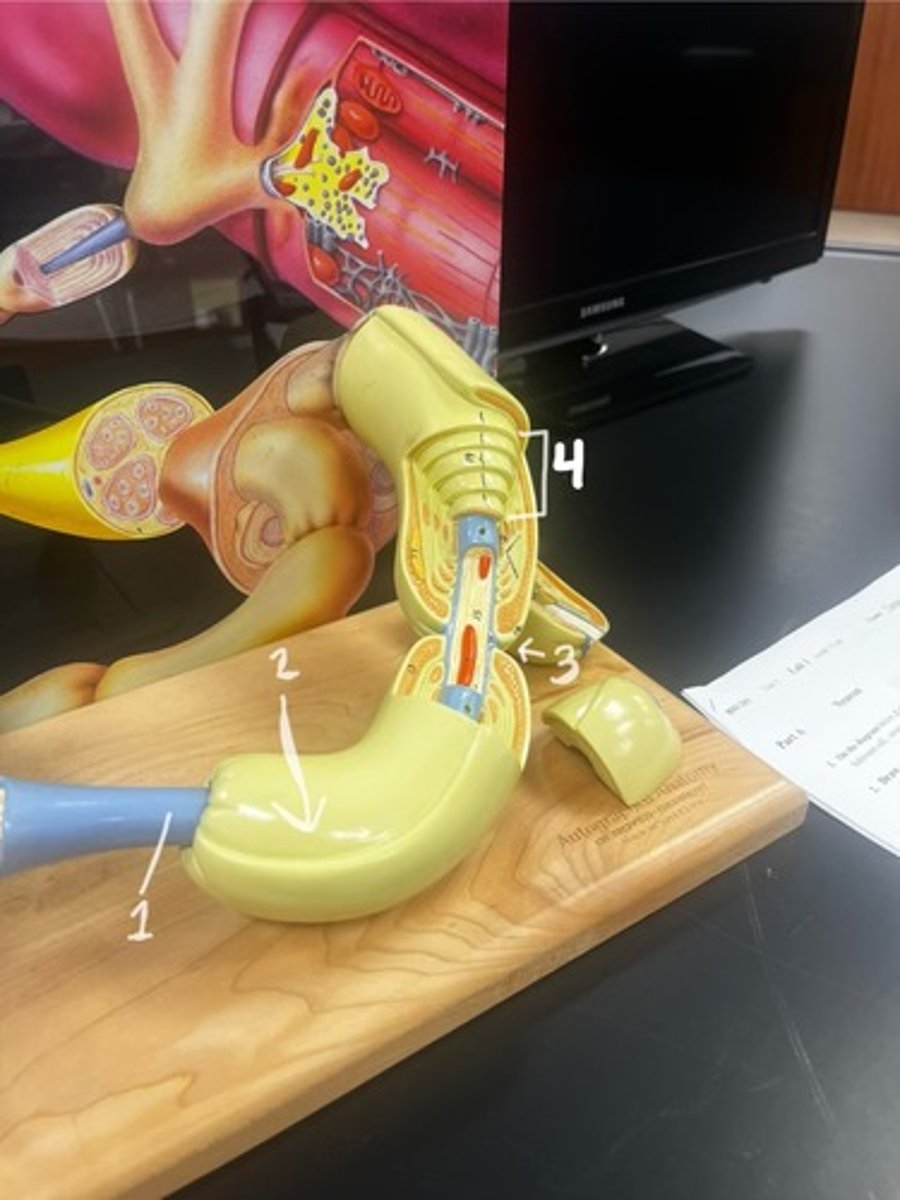
myelin sheath
According to the model, what does #4 represent?
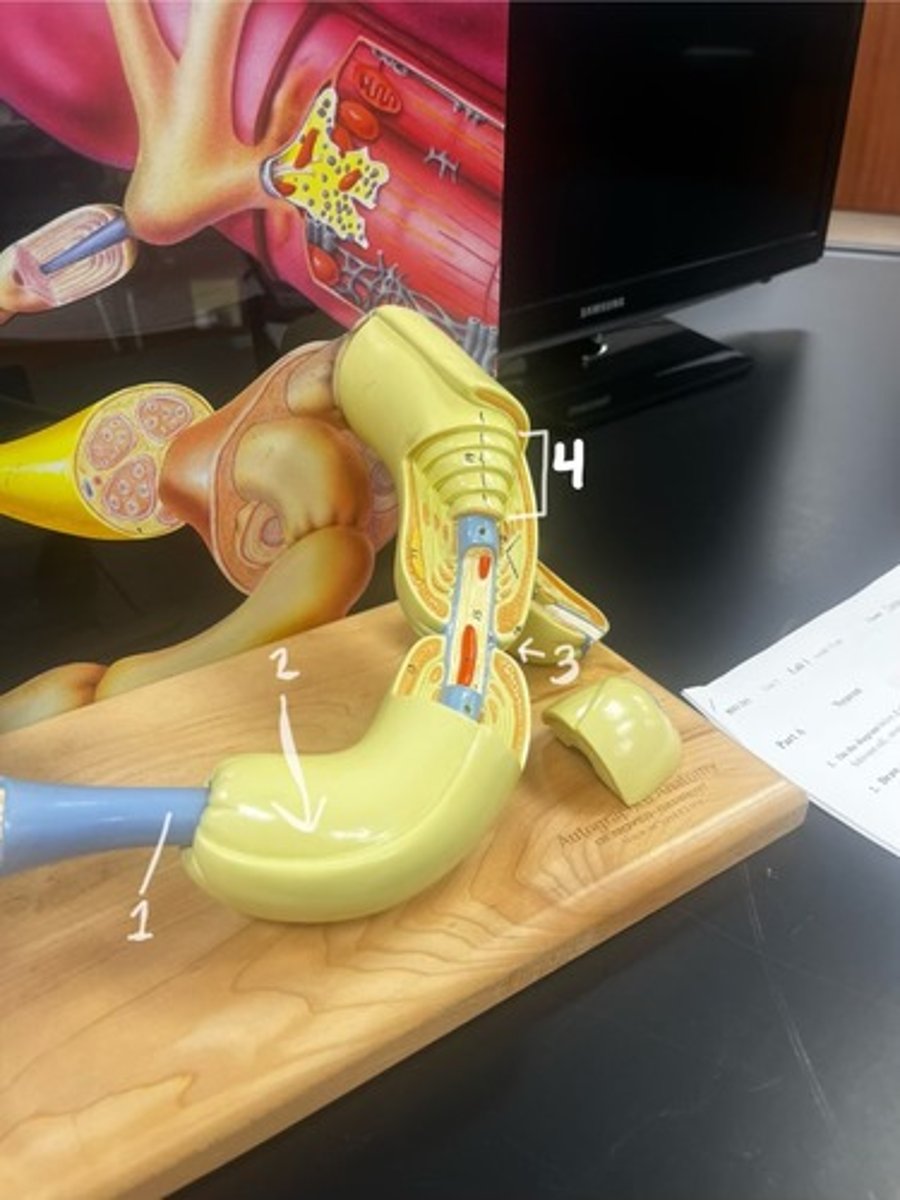
axon terminals
According to the model, what does #1 represent?
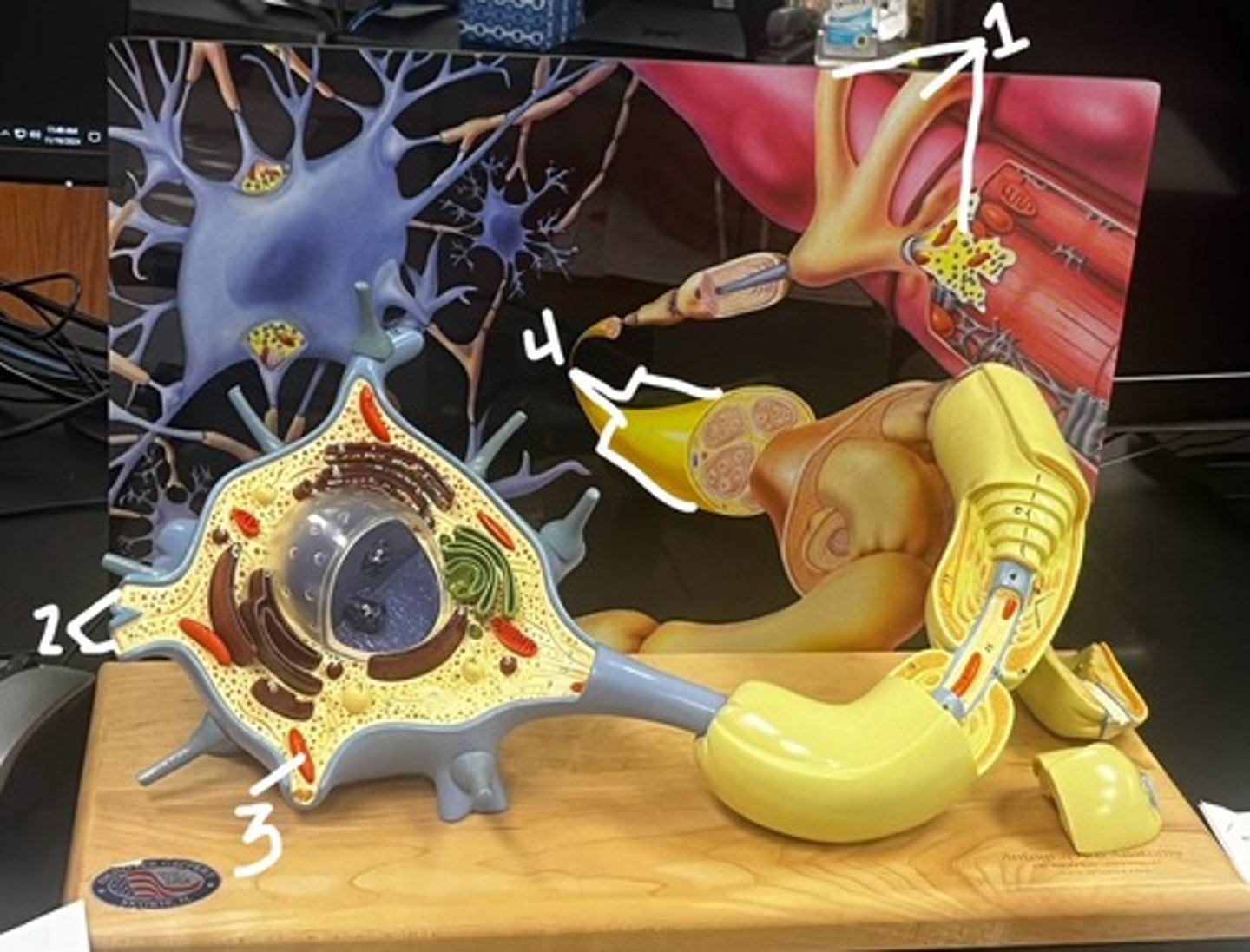
synaptic knobs
What is another word for axon terminals?
mitochondria
According to the model, what does #3 represent?
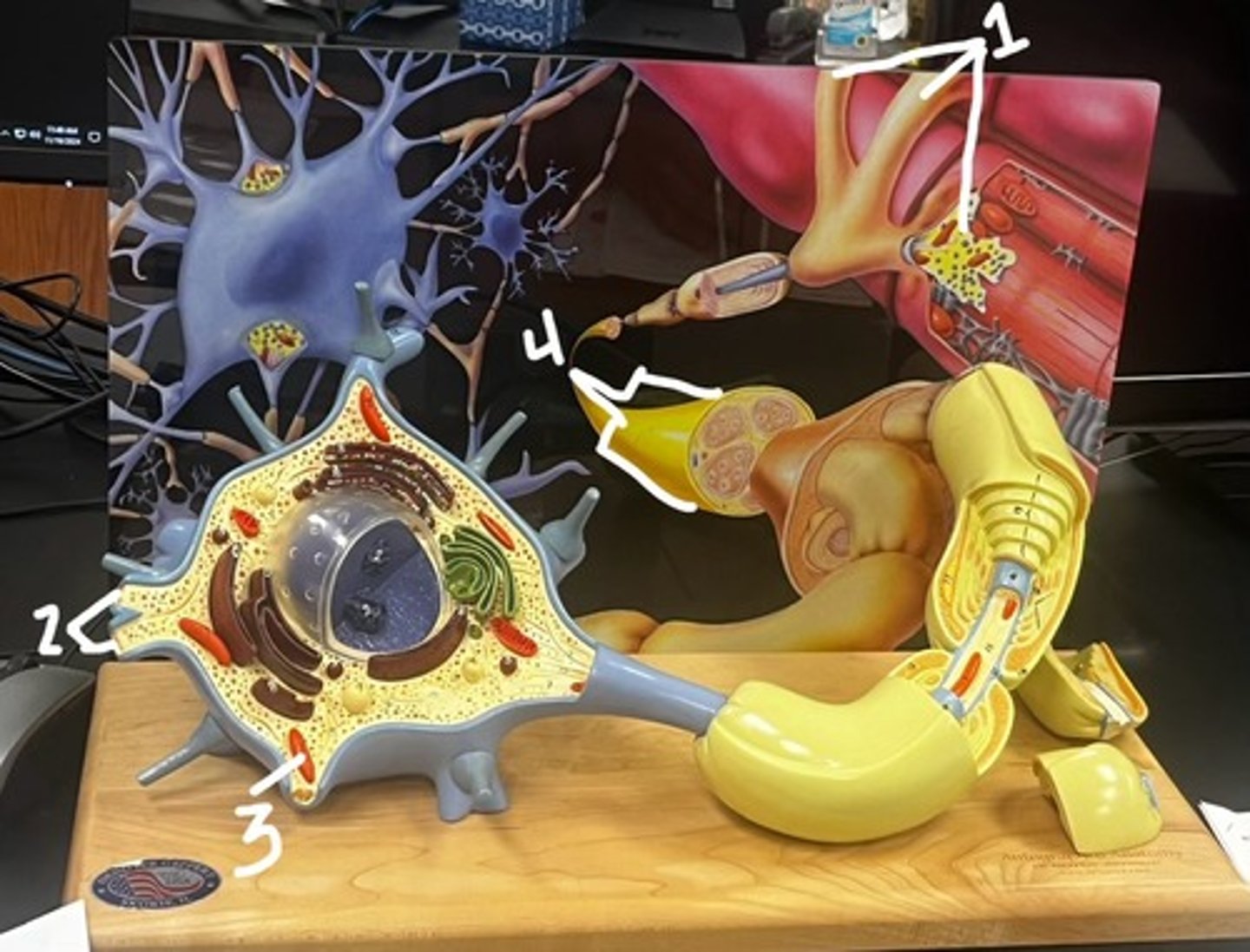
nerve
According to the model, what does #4 represent?
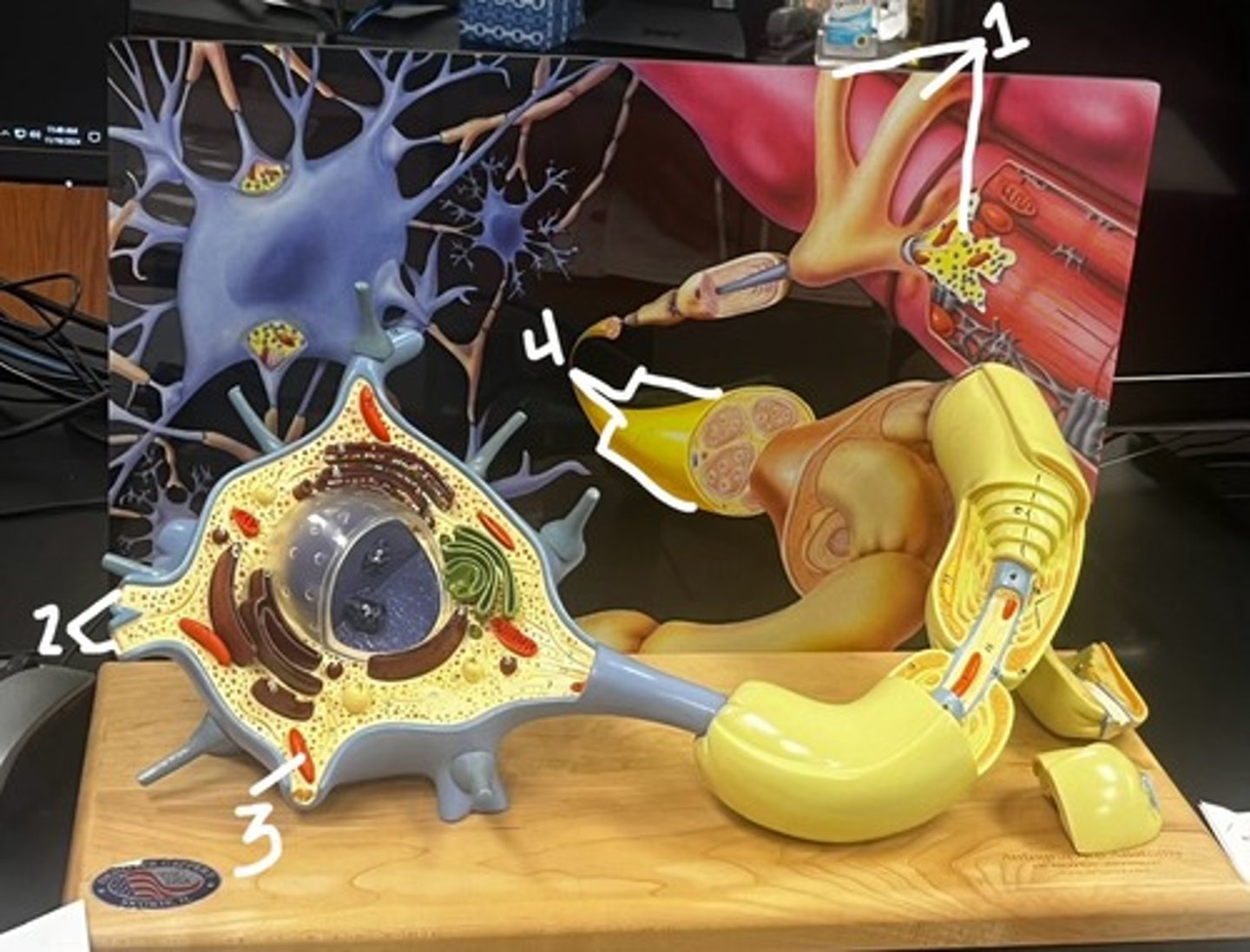
corpus callosum
According to the model, what does #1 represent?
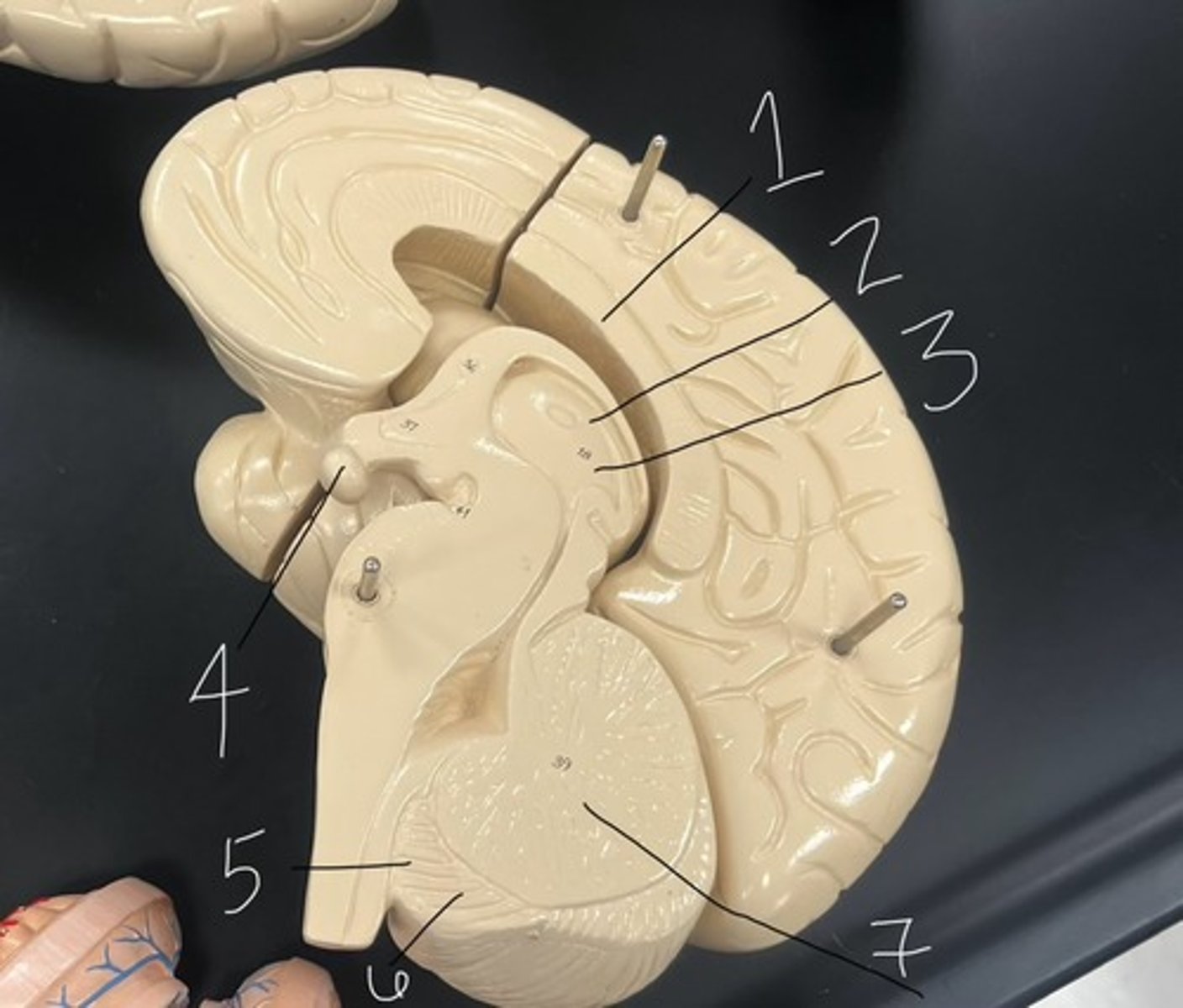
thalamus
According to the model, what does #2 represent?

thalami
What is the plural spelling of thalamus? (more then one)
hypothalamus
According to the model, what does #3 represent?
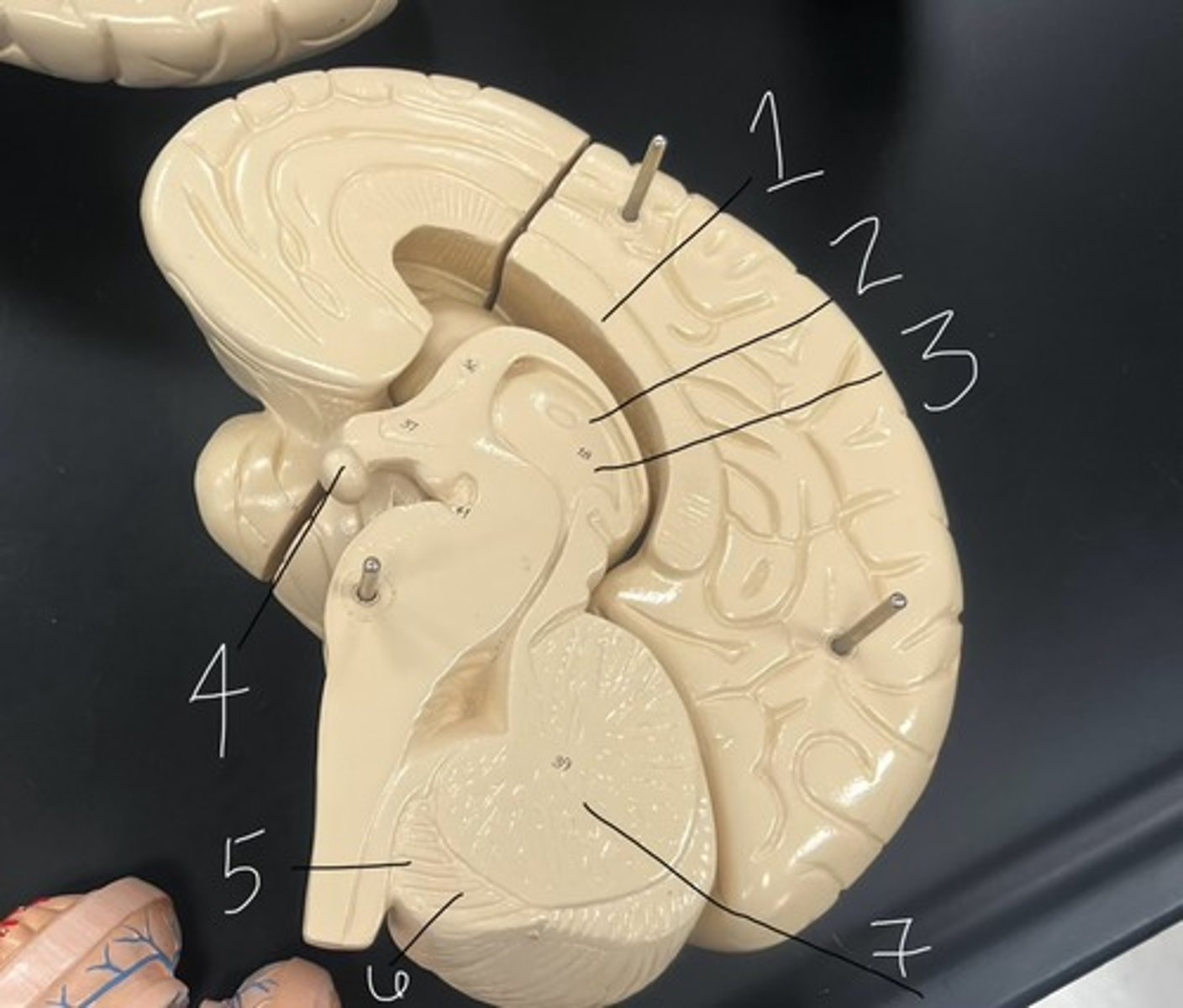
pituitary gland
According to the model, what does #4 represent?
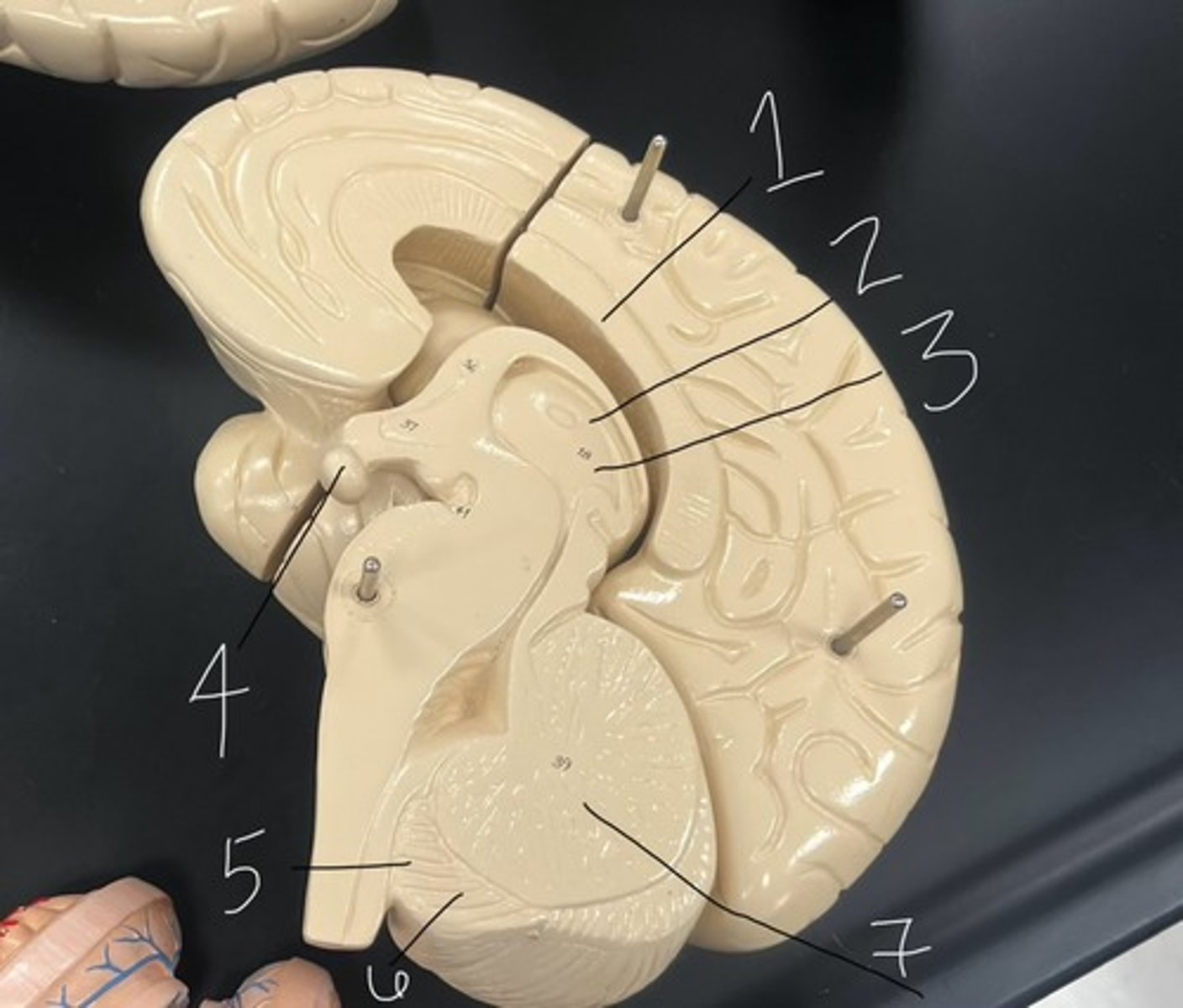
cerebellum
According to the model, what does #5 represent?
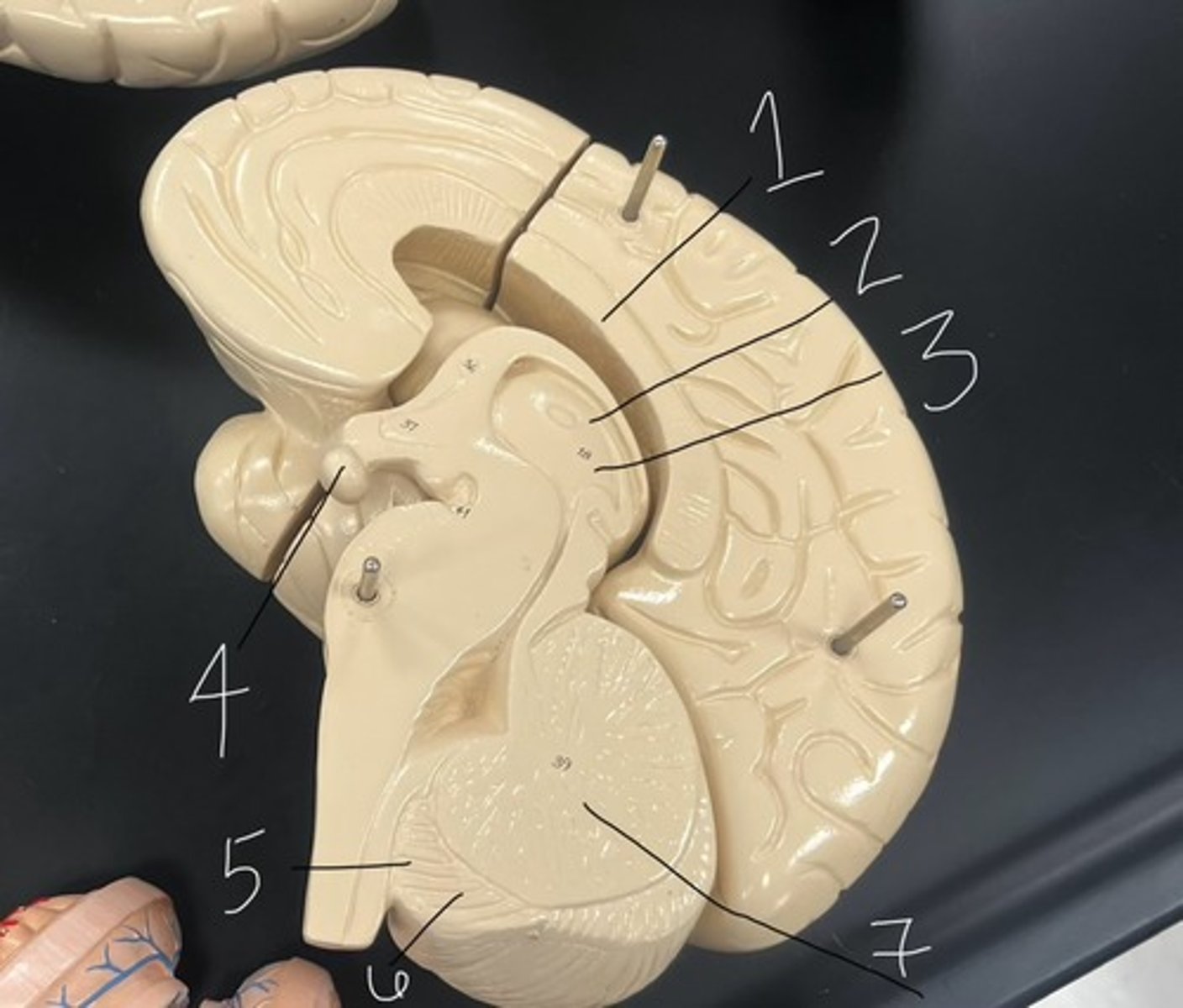
folia
According to the model, what does #6 represent?
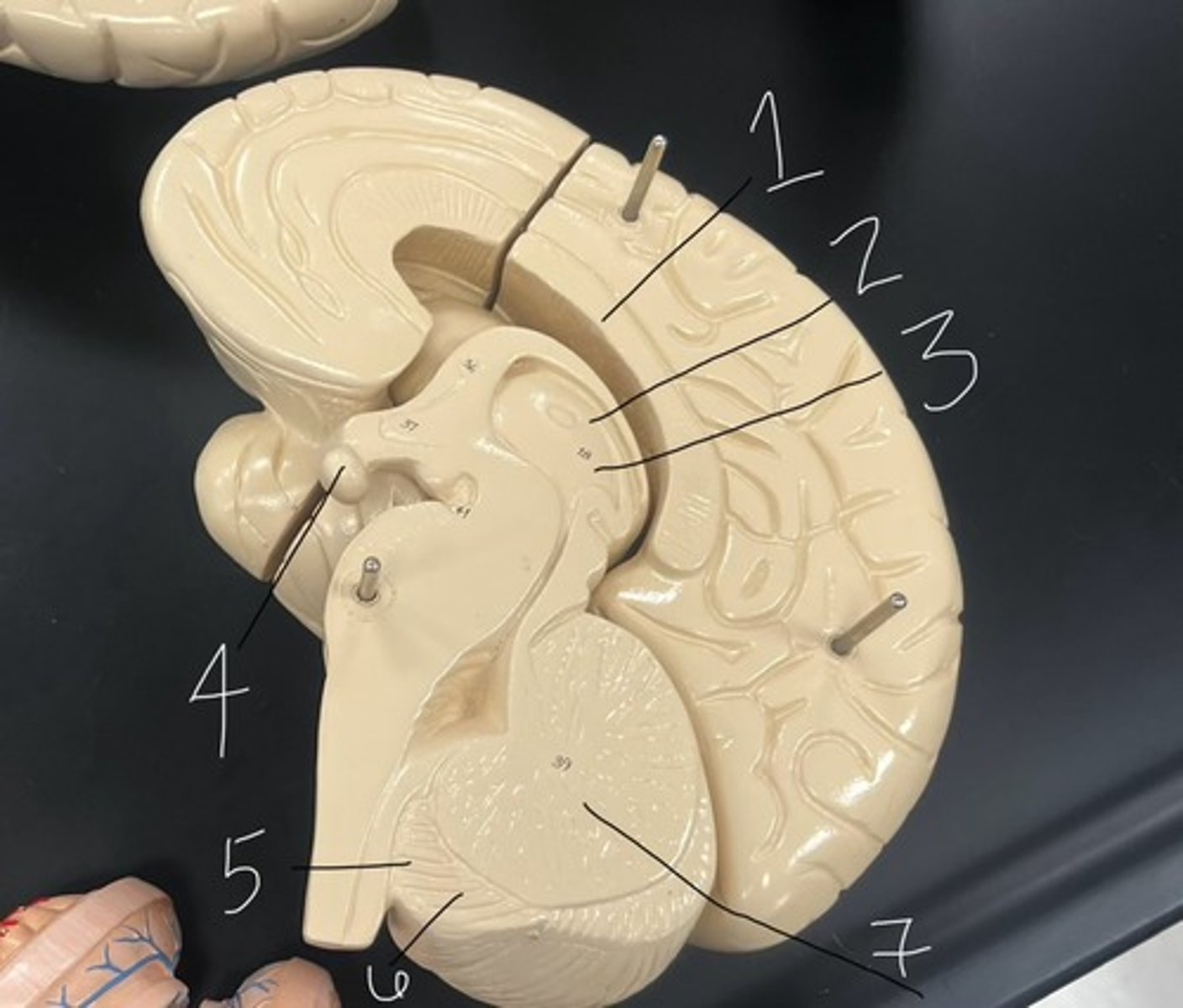
arbor vitae
According to the model, what does #7 represent?
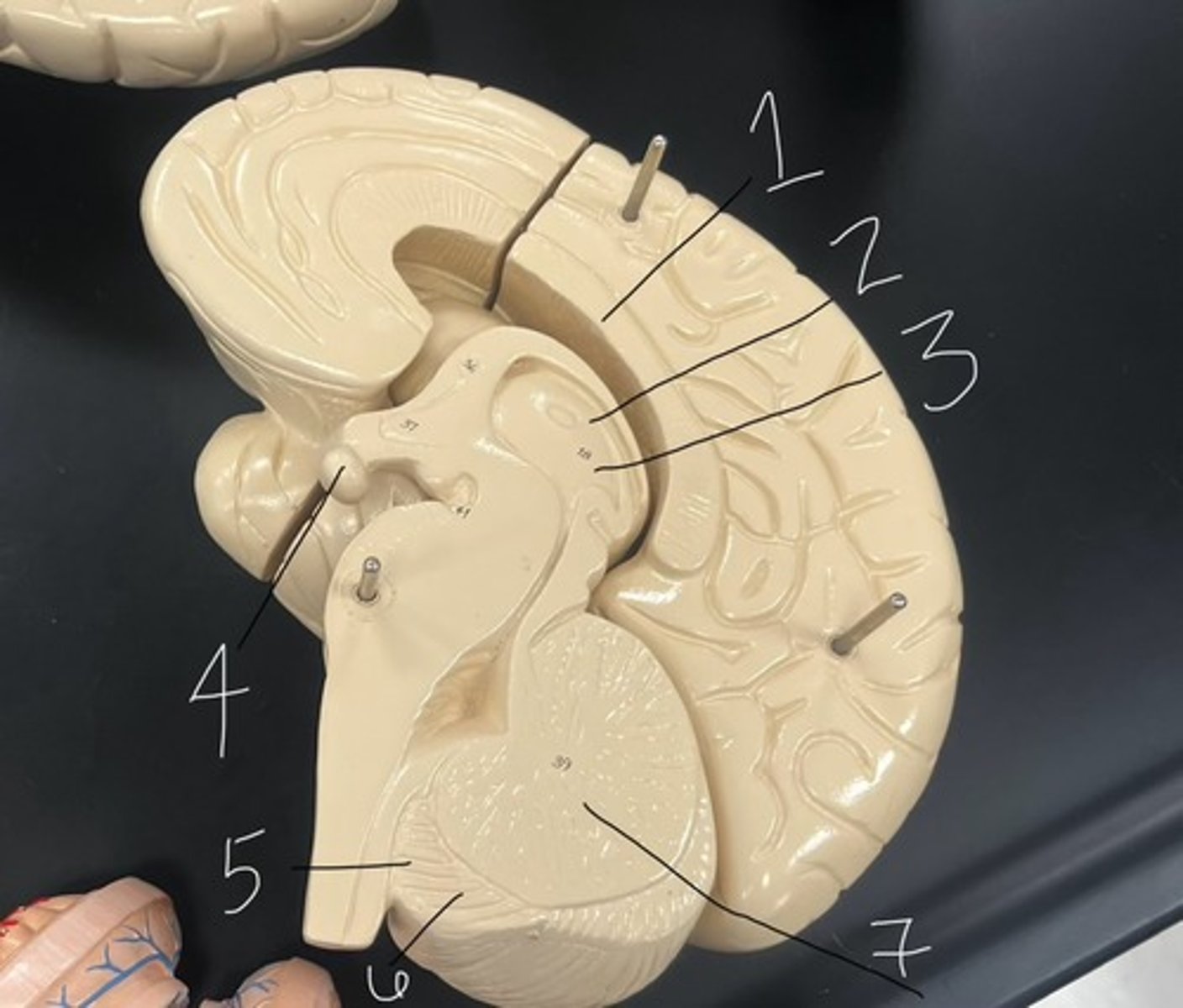
Thalamus
According to the model, what does #1 represent?
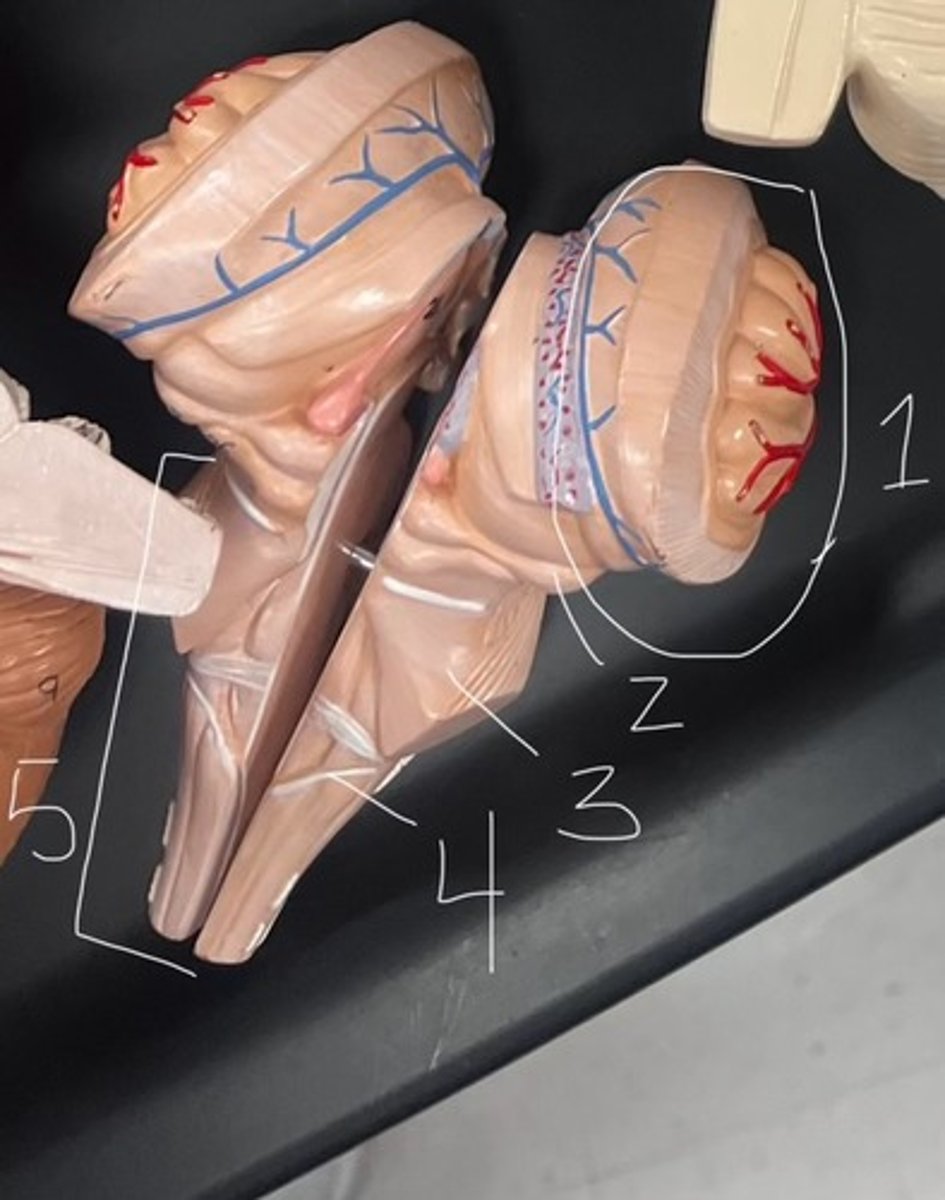
midbrain
According to the model, what does #2 represent
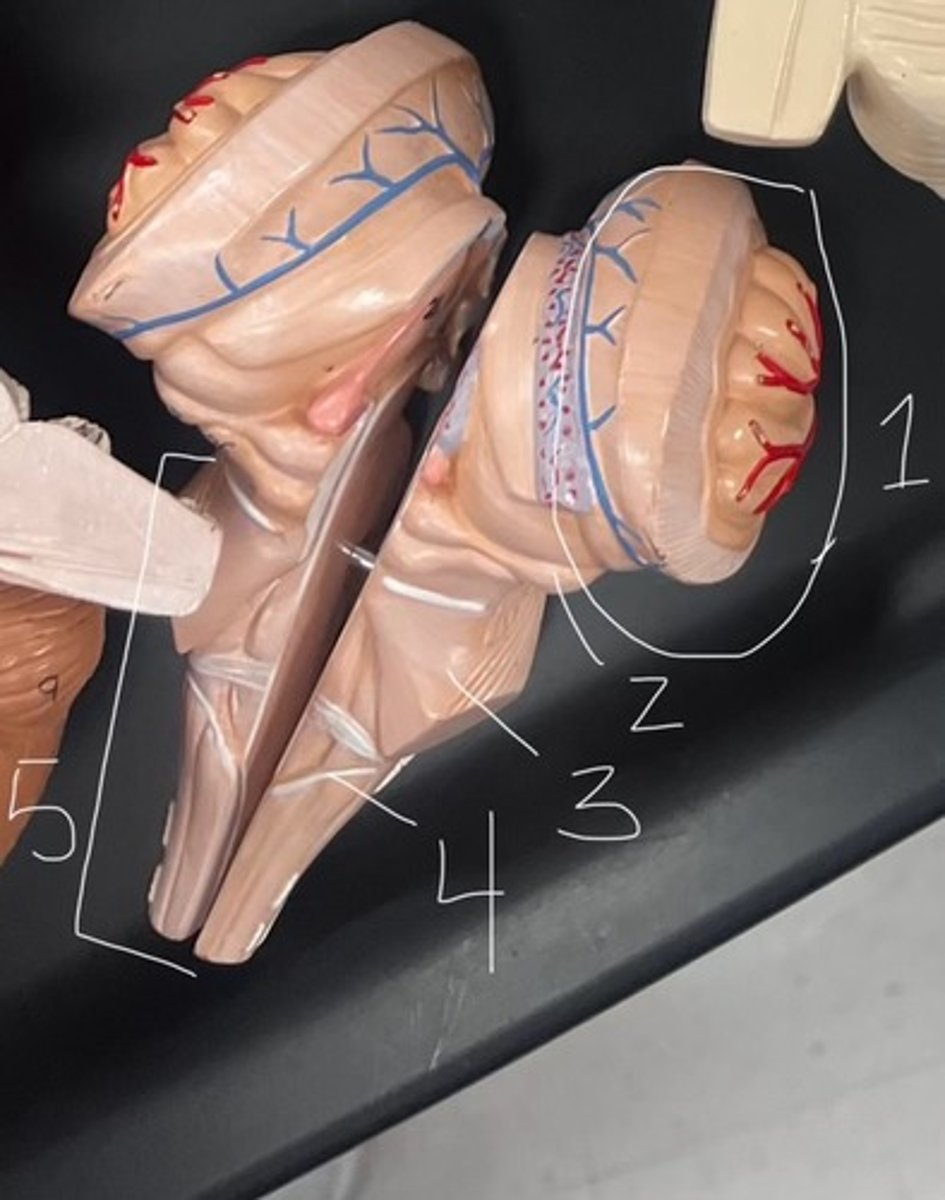
pons
According to the model, what does #3 represent?
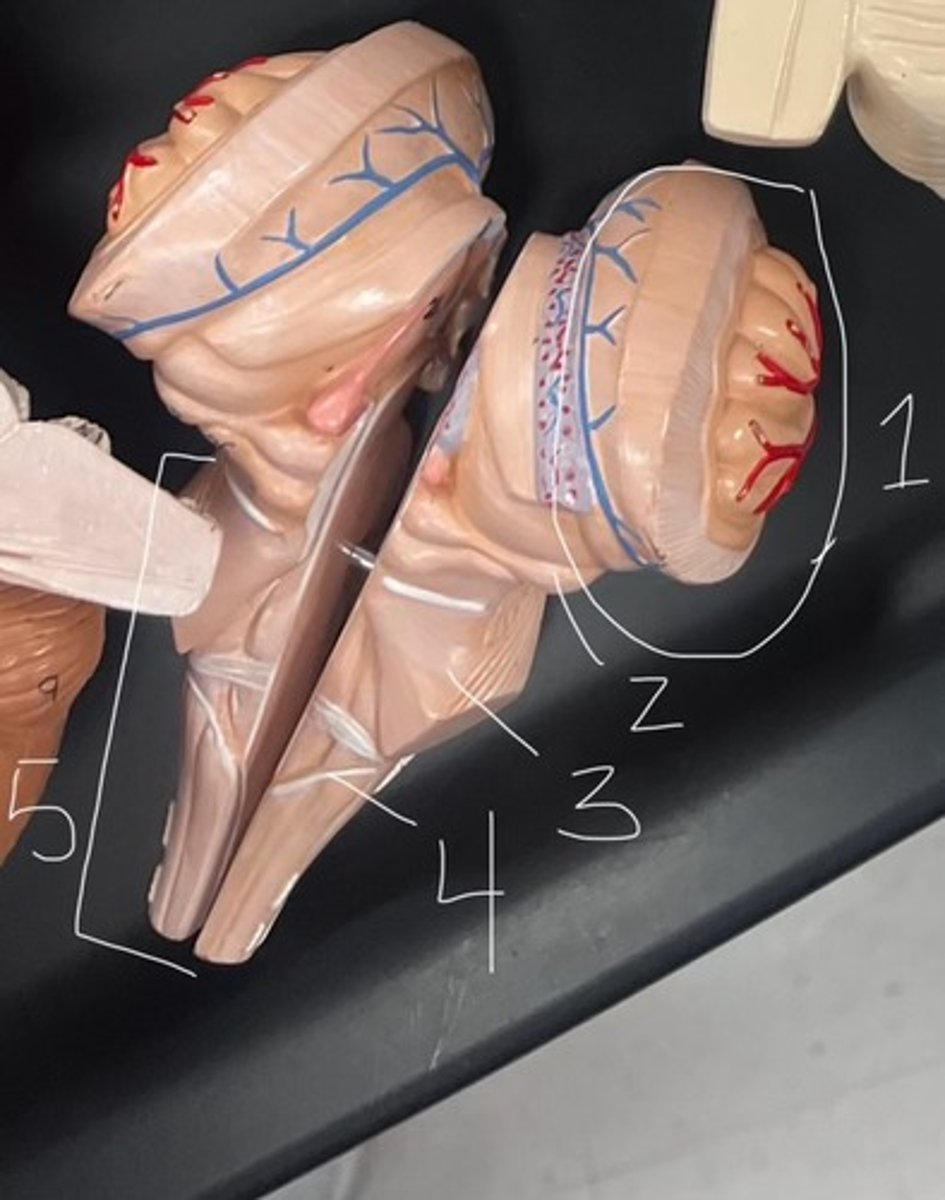
medulla oblongata
According to the model, what does #4 represent?
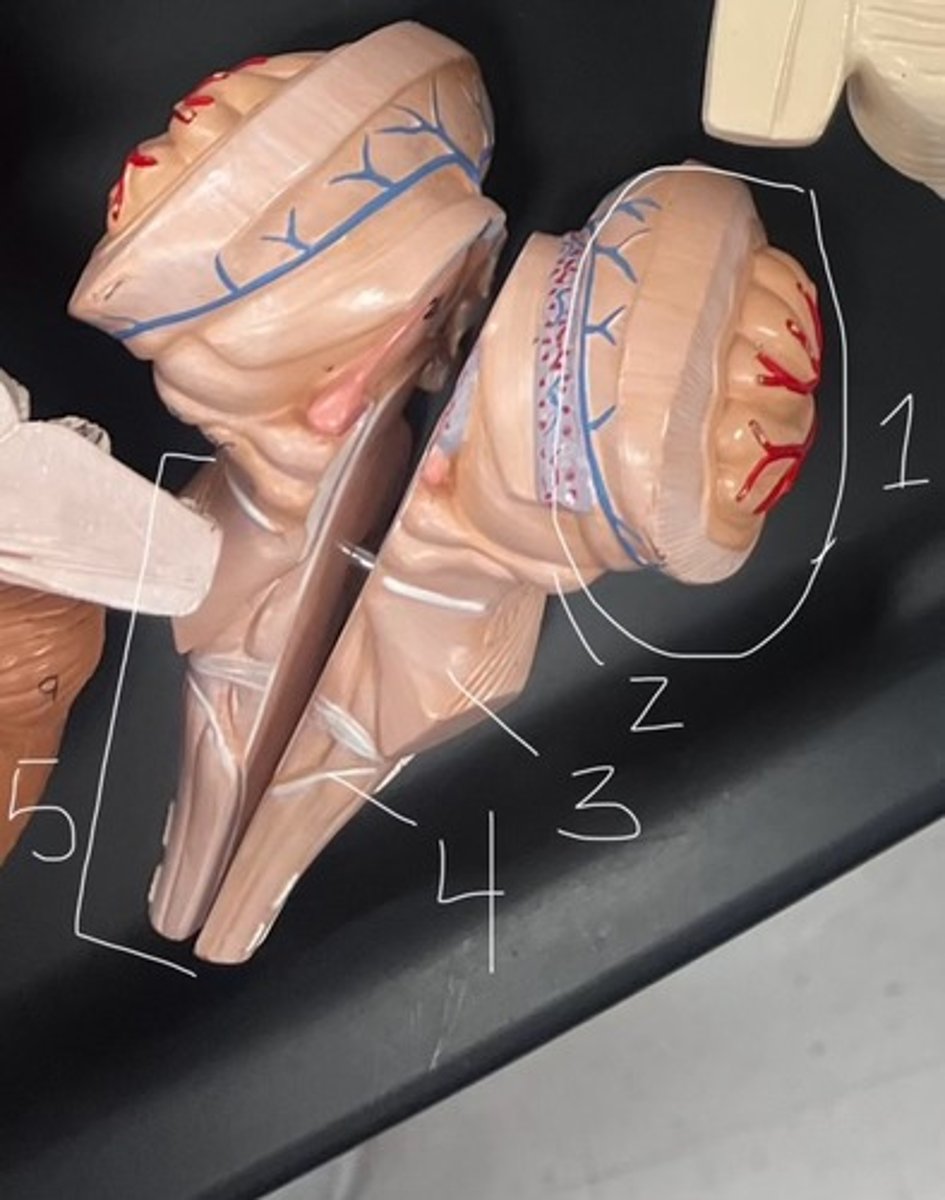
brainstem
According to the model, what does #5 represent?
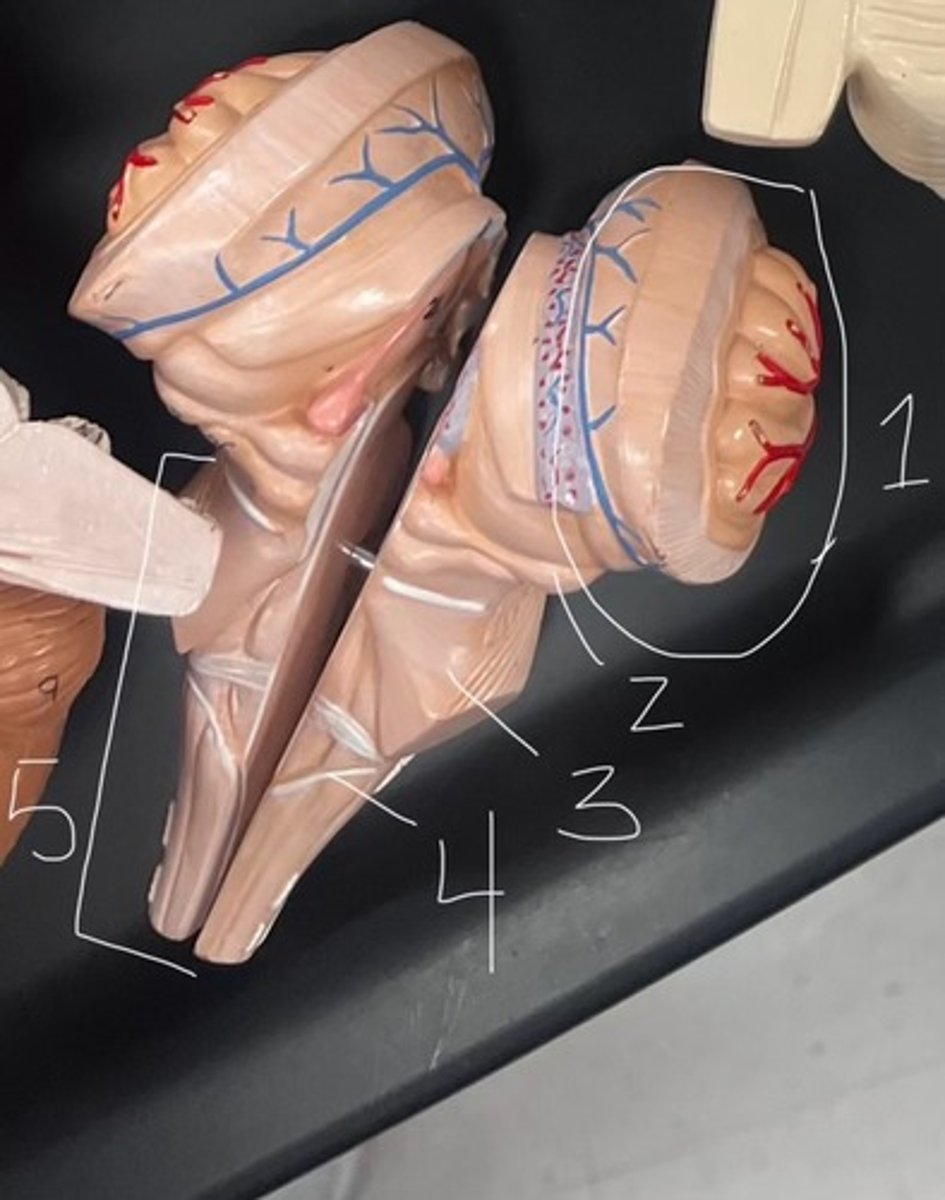
brainstem
According to the model, what does #1 represent?

medulla oblongata
According to the model, what does #5 represent?
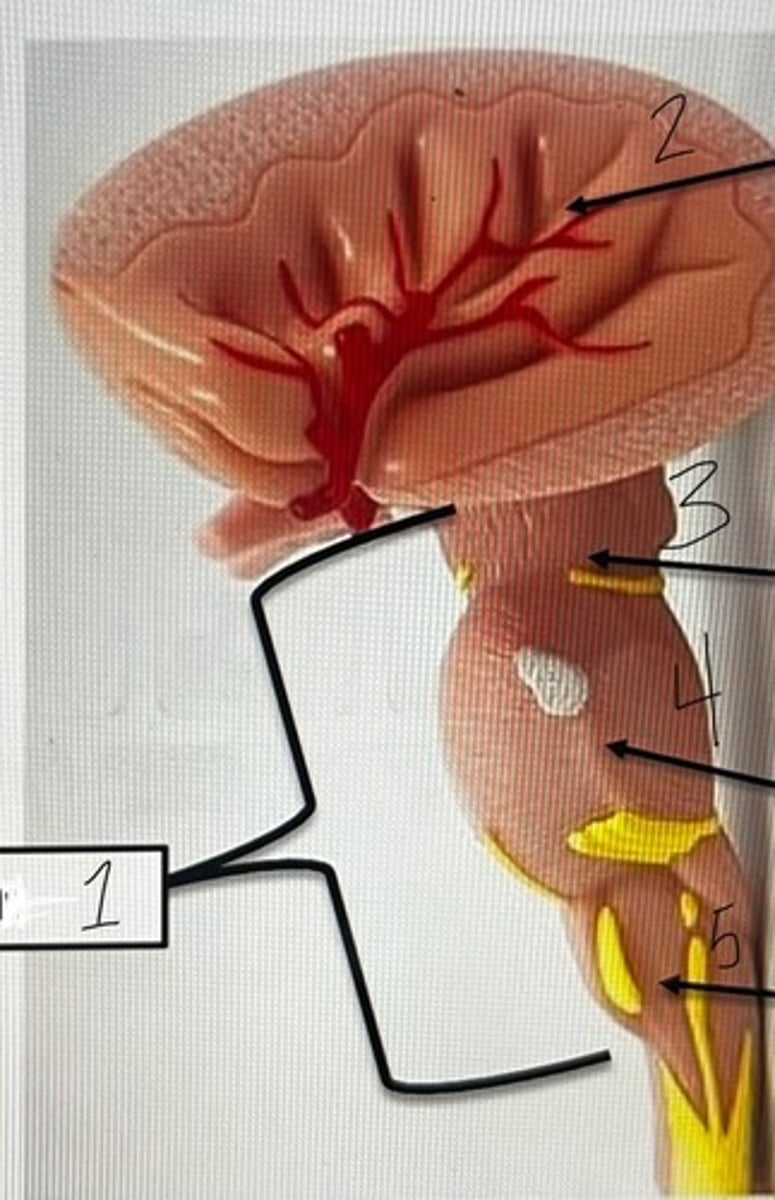
pons
According to the model, what does #4 represent?
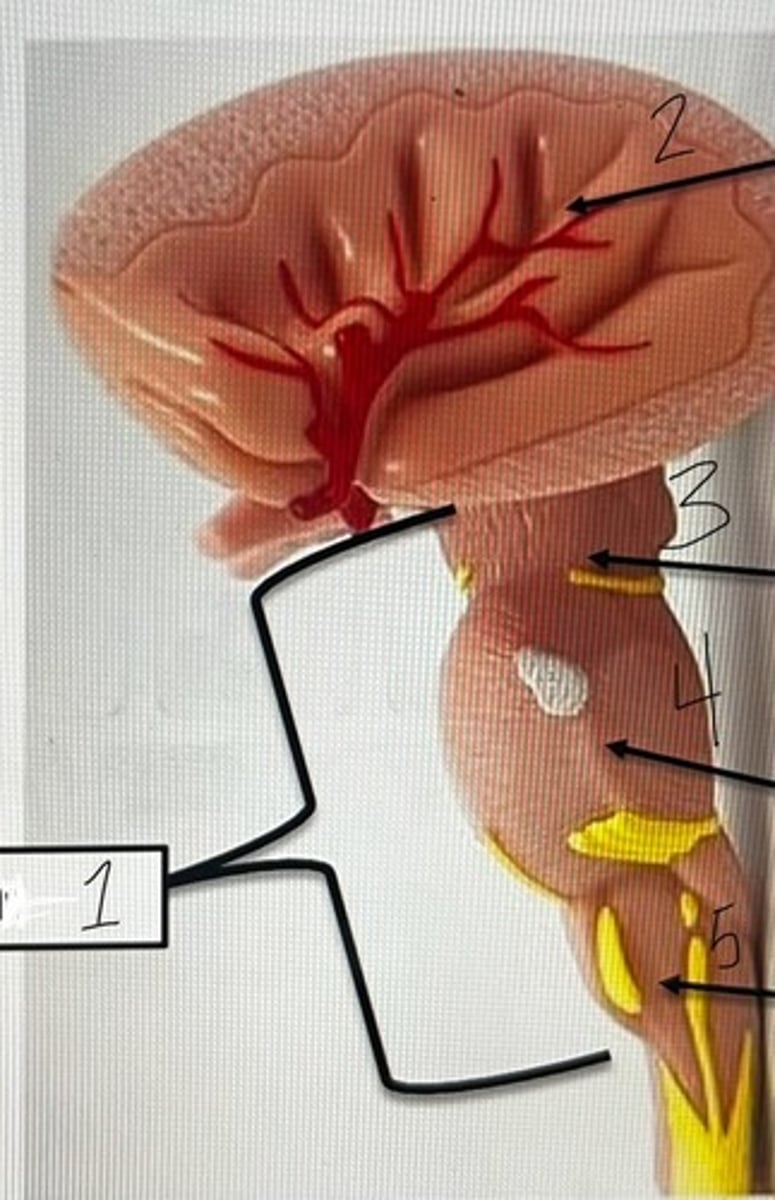
midbrain
According to the model, what does #3 represent?
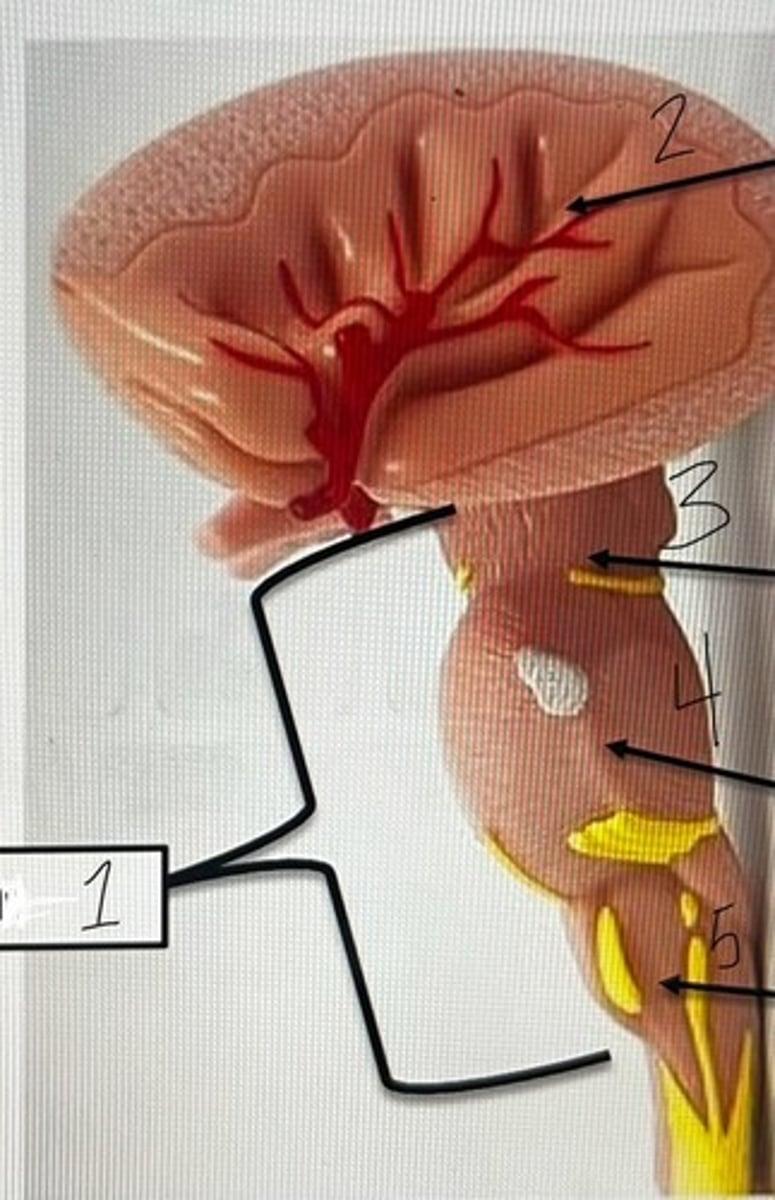
thalamus
According to the model, what does #2 represent?
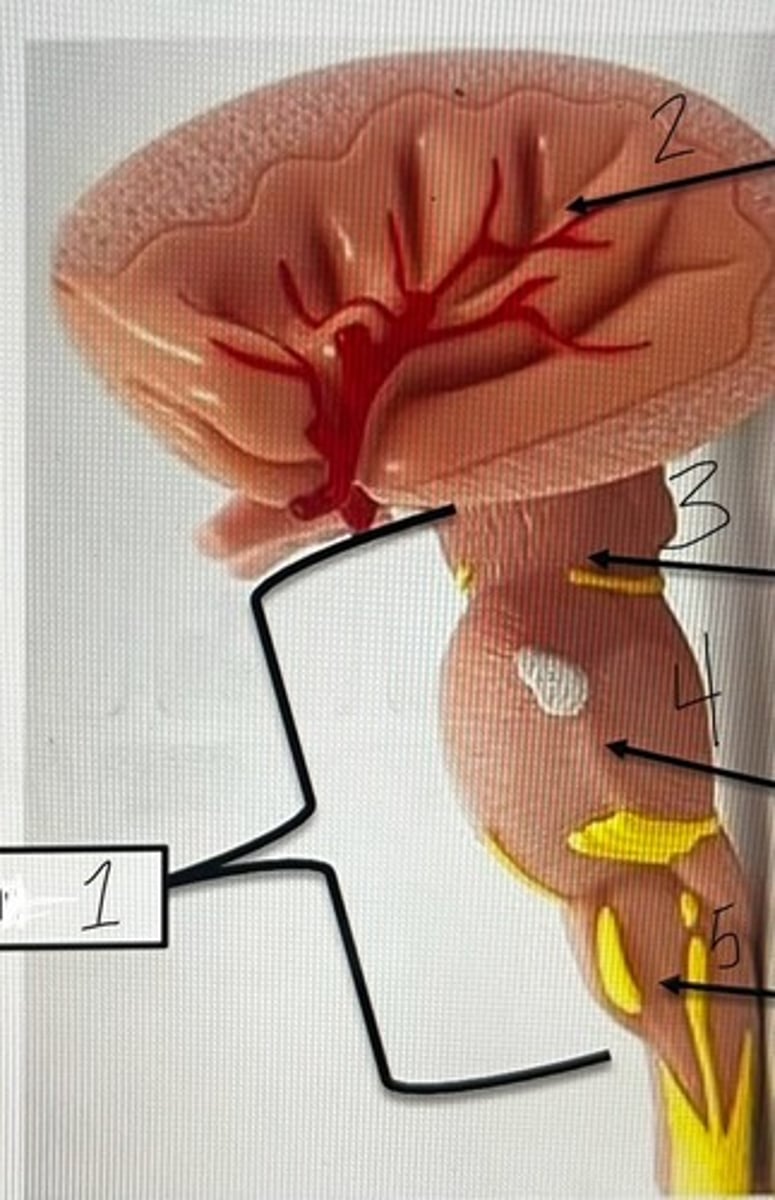
longitudinal fissure
What is this deep crack/groove dividing the right and left hemisphere?
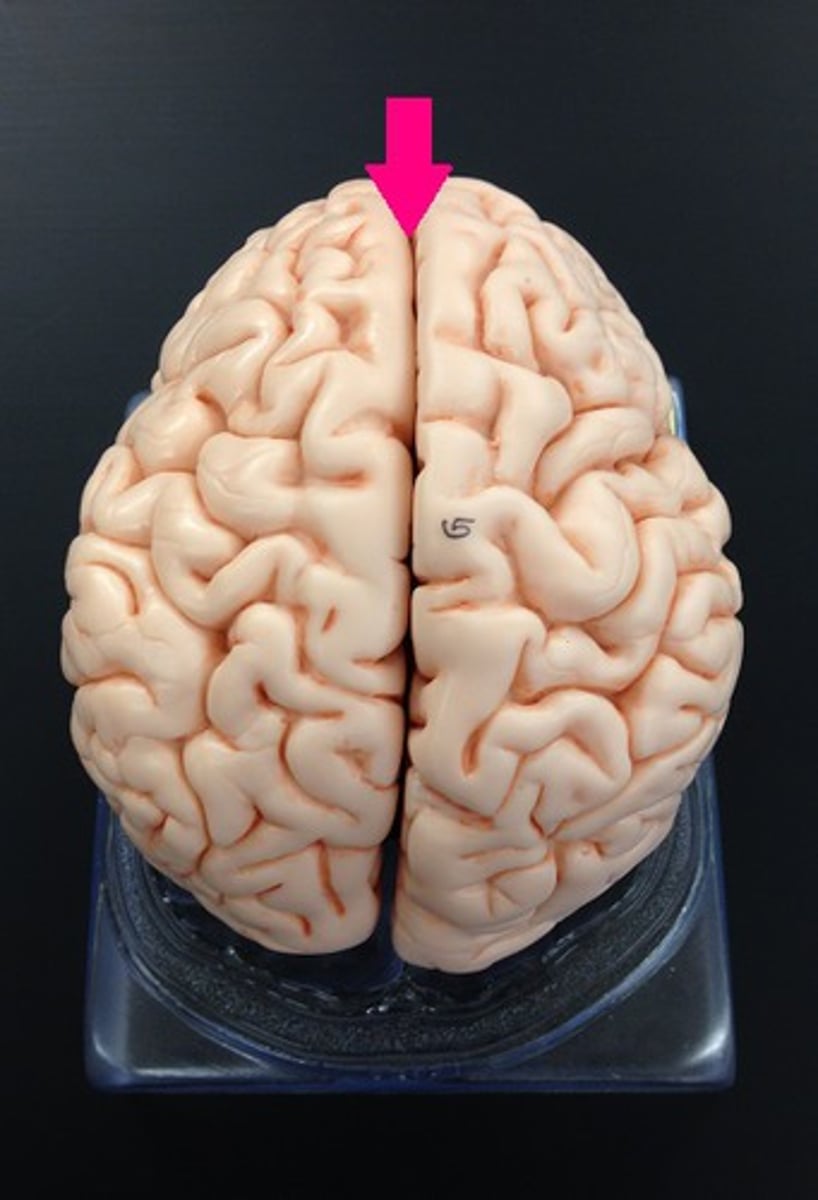
right cerebral hemisphere
According to the model, what does #1 represent?
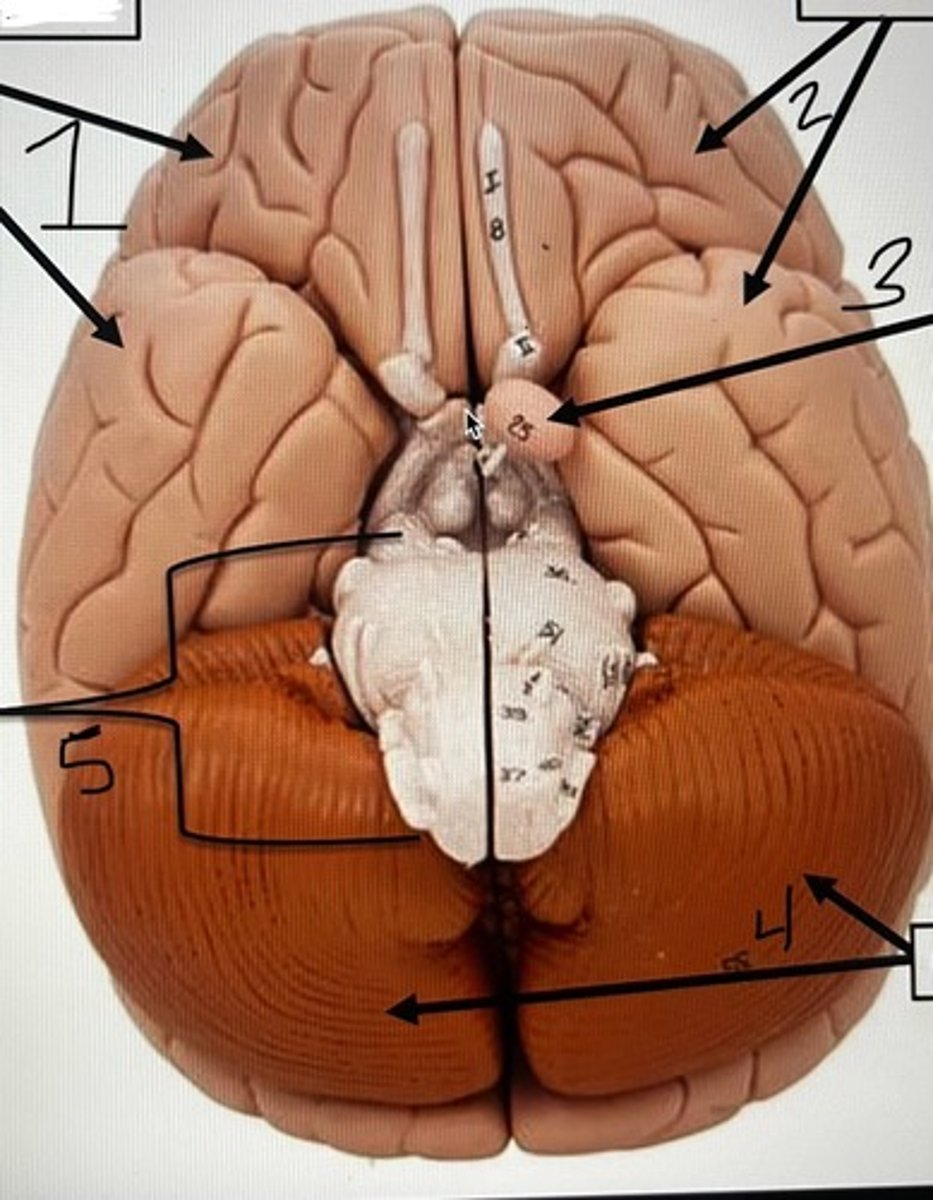
left cerebral hemisphere
According to the model, what does #2 represent?
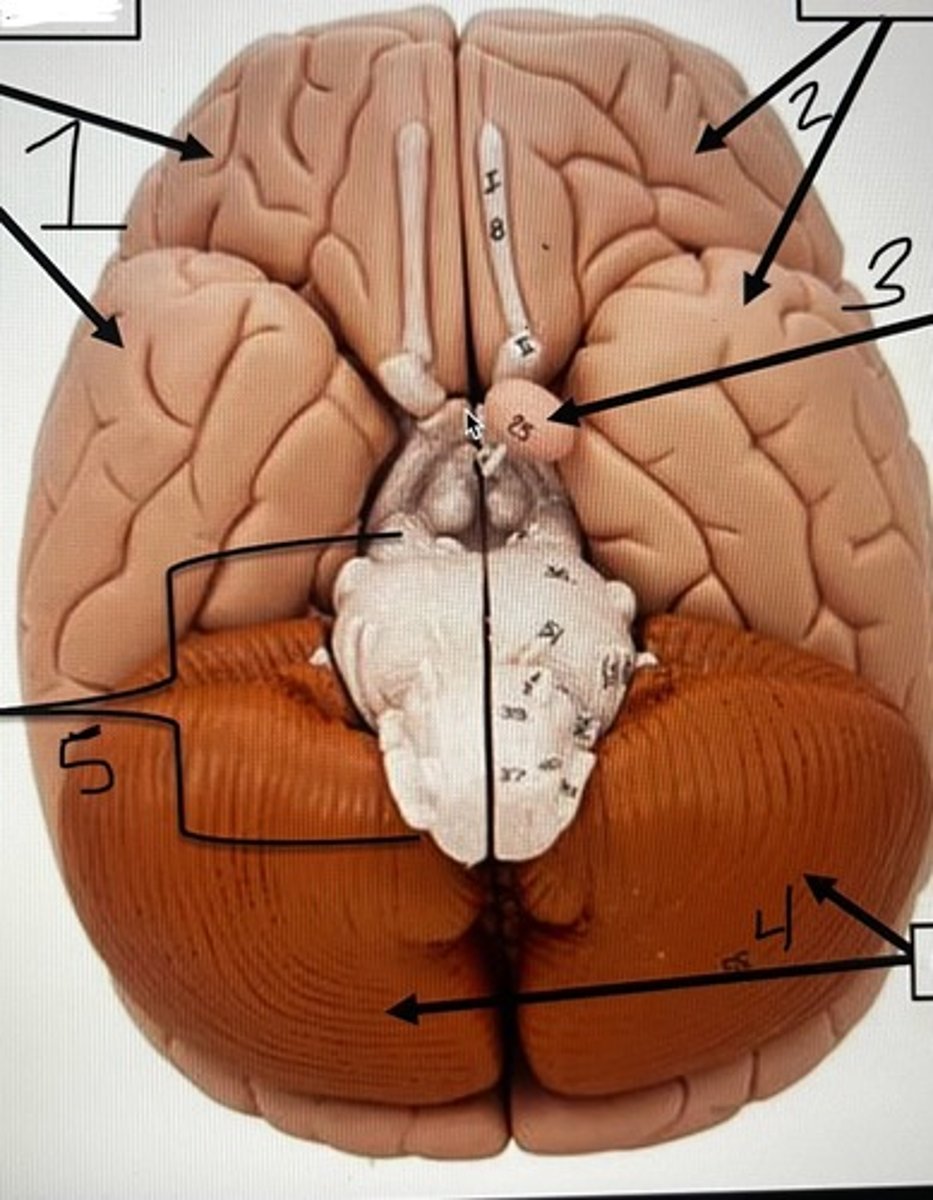
pituitary gland
According to the model, what does #3 represent?
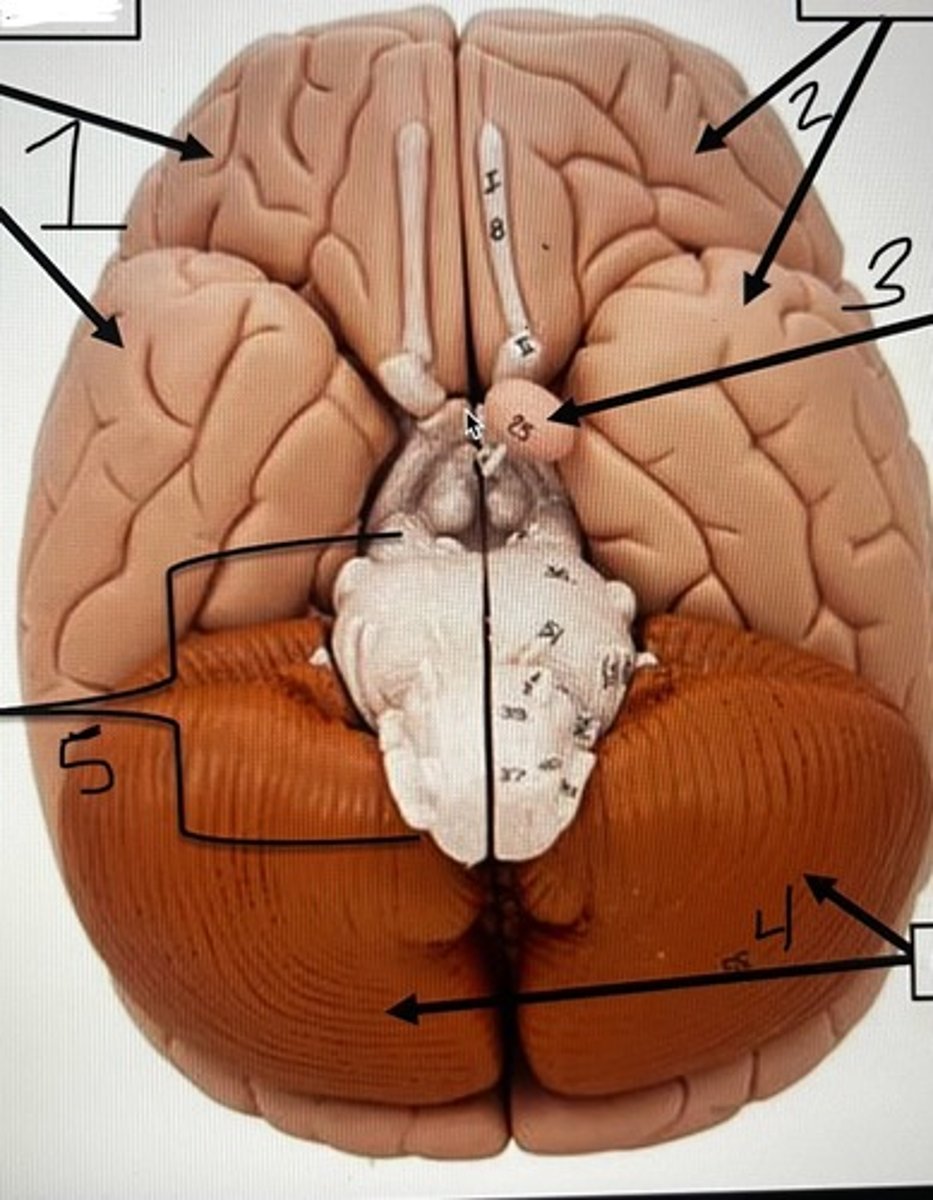
cerebellum
According to the model, what does #4 represent?
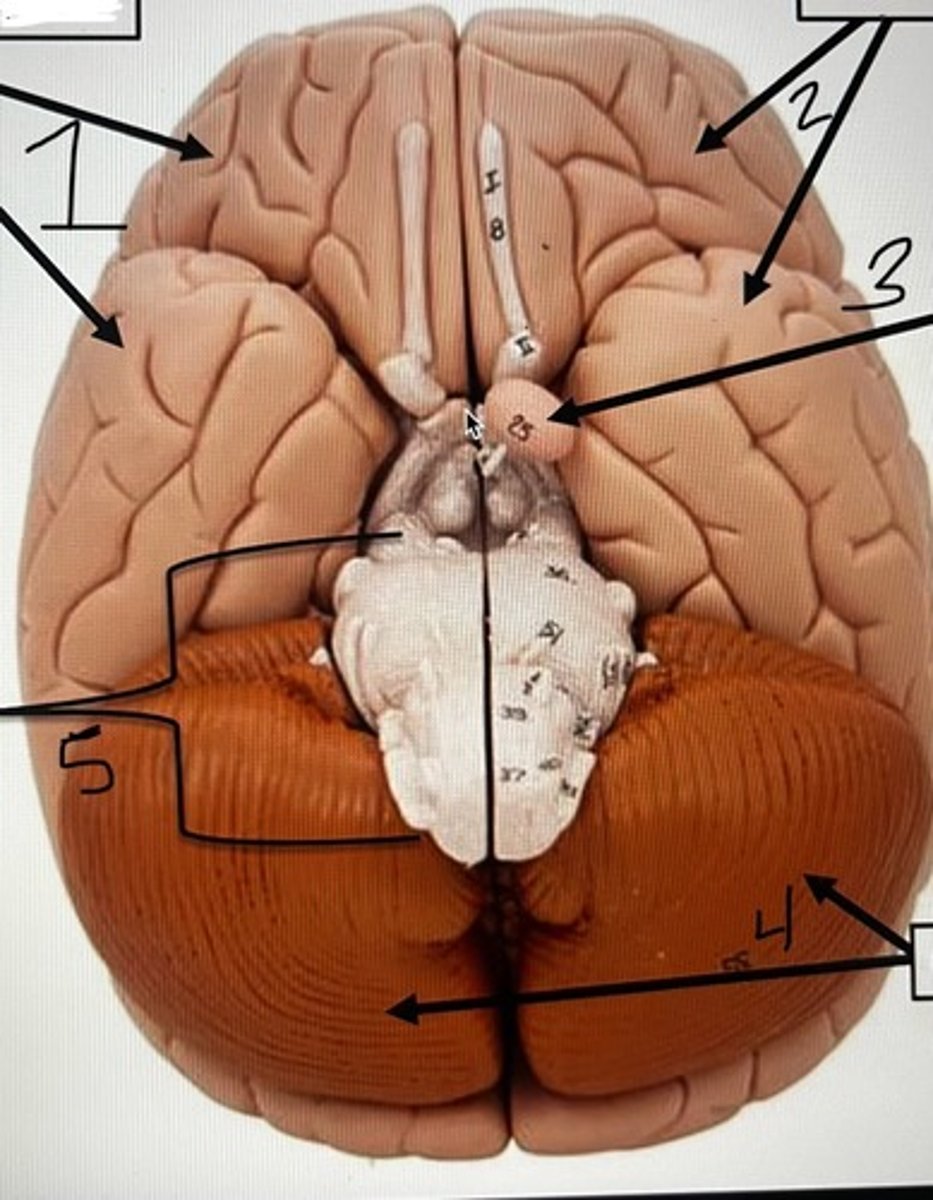
brainstem
According to the model, what does #5 represent?
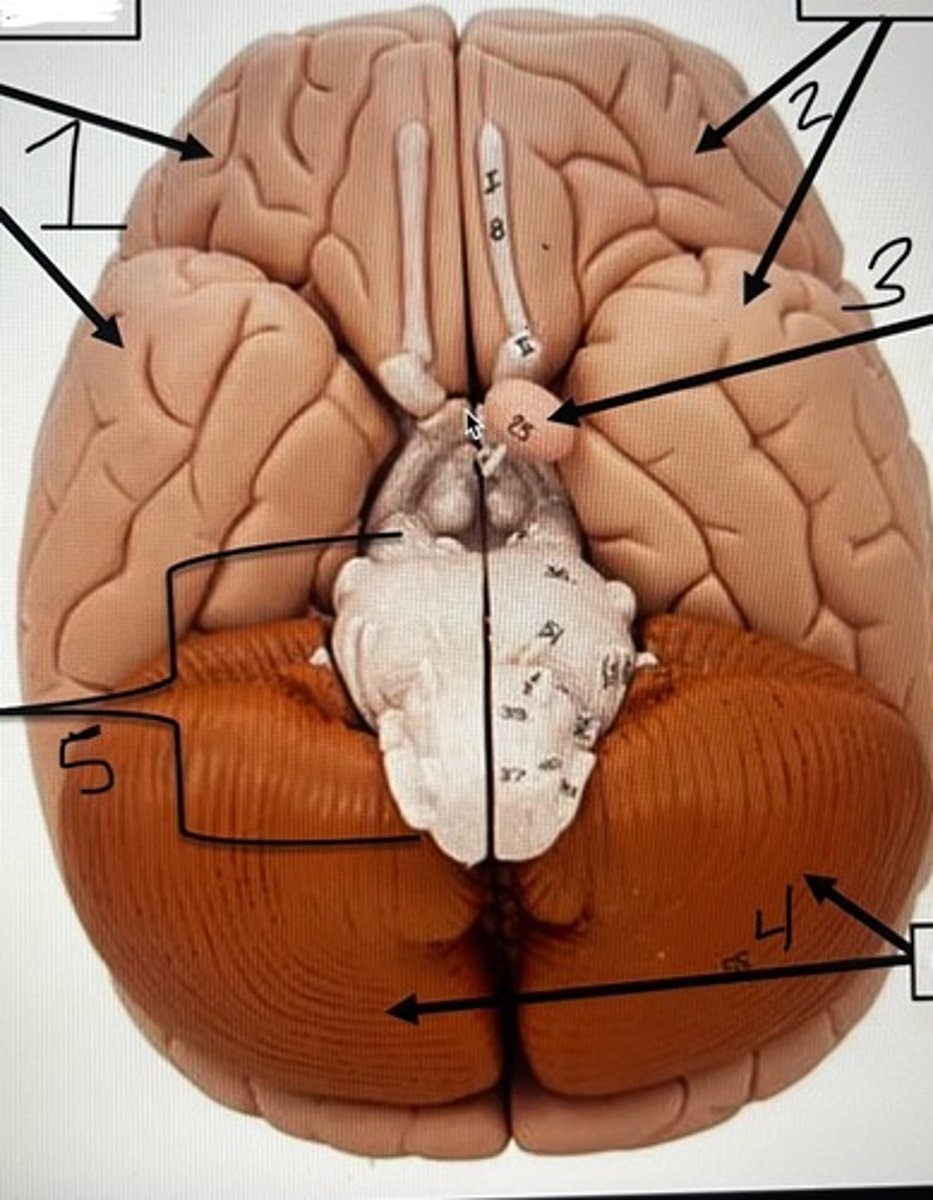
spinal nerve
According to the model, what does #1 represent?

gray matter
According to the model, what does #2 represent?

posterior horn
According to the model, what does #3 represent?

central canal
According to the model, what does #4 represent?

posterior root
According to the model, what does #5 represent?

posterior root ganglion
According to the model, what does #6 represent?

anterior root
According to the model, what does #7 represent?

anterior horn
According to the model, what does #8 represent?

white matter
According to the model, what does #9 represent?

free nerve ending
According to the model, what does #1 represent?
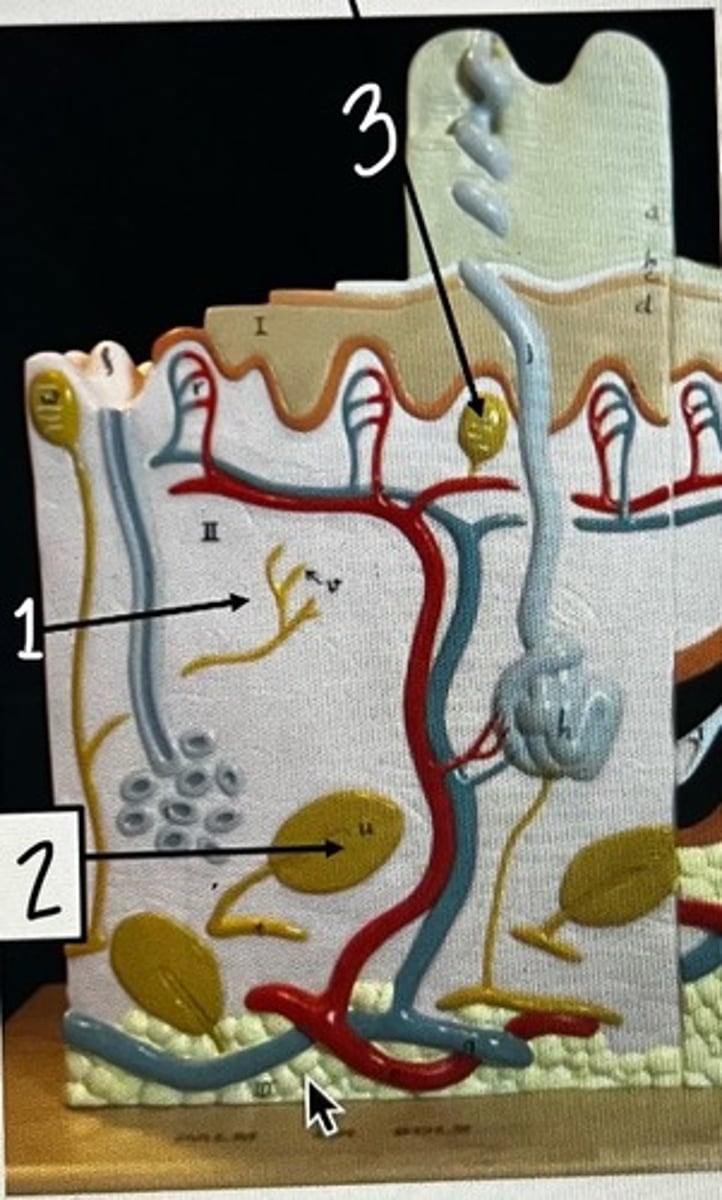
lamellated corpuscle
According to the model, what does #2 represent?
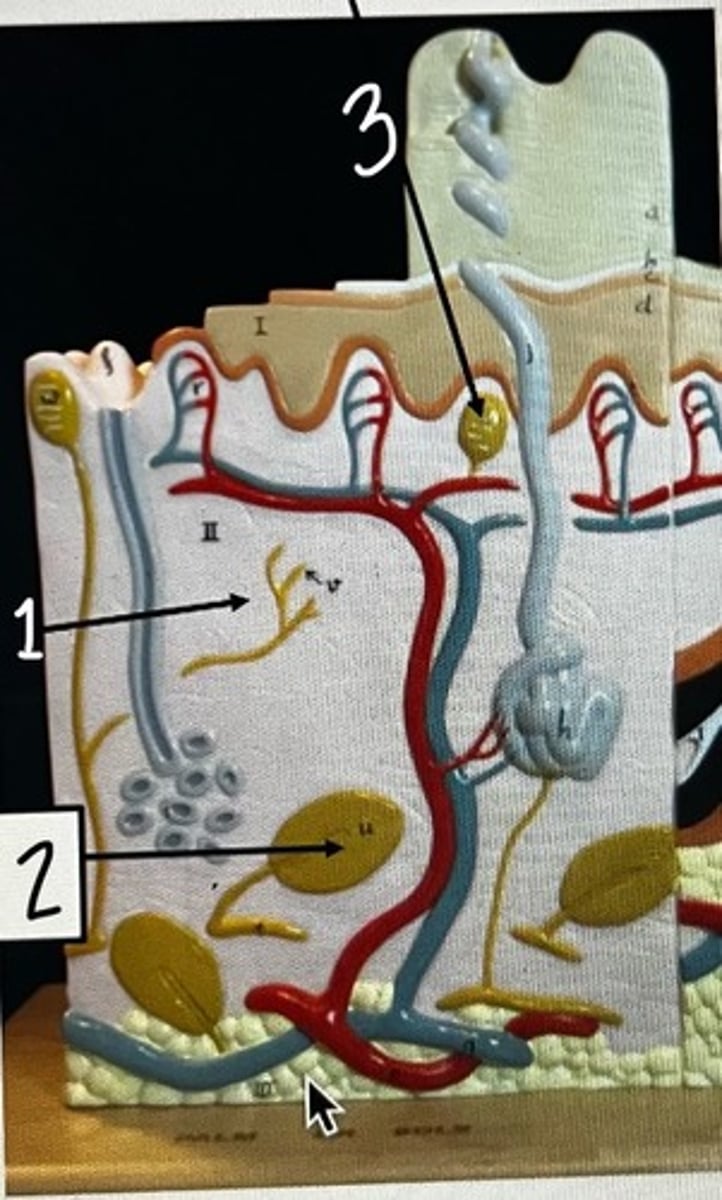
tactile corpuscle
According to the model, what does #3 represent?
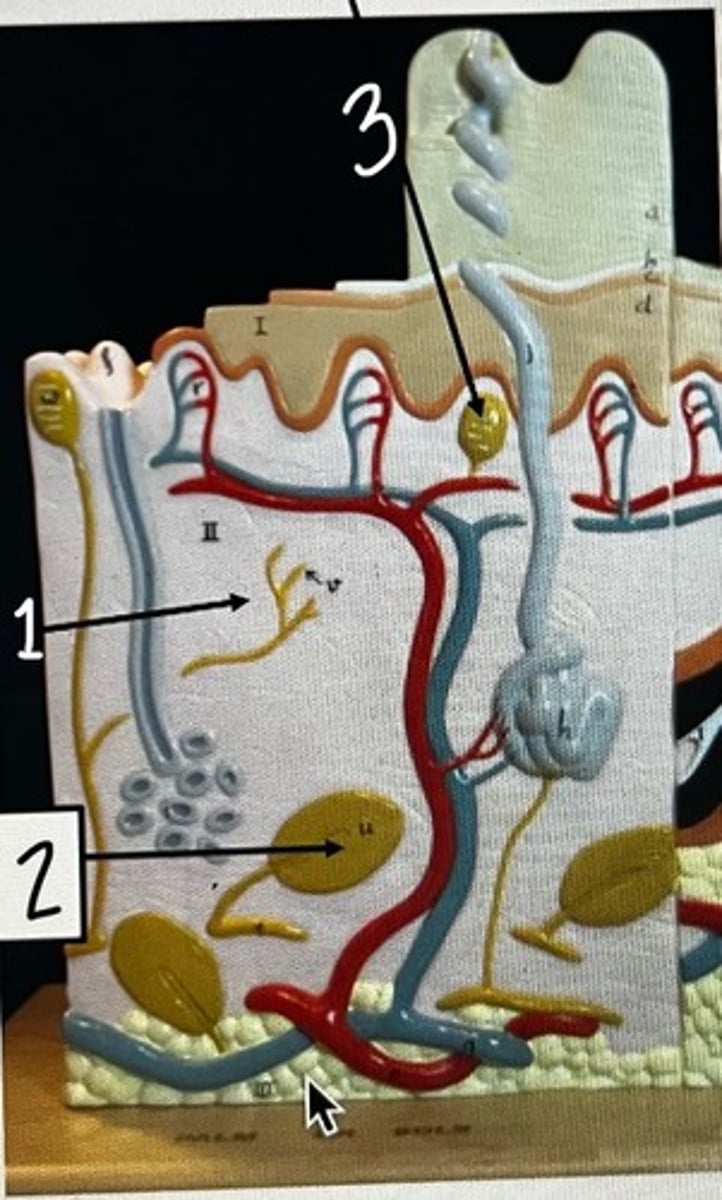
root hair plexus
According to the model, what does #1 represent?
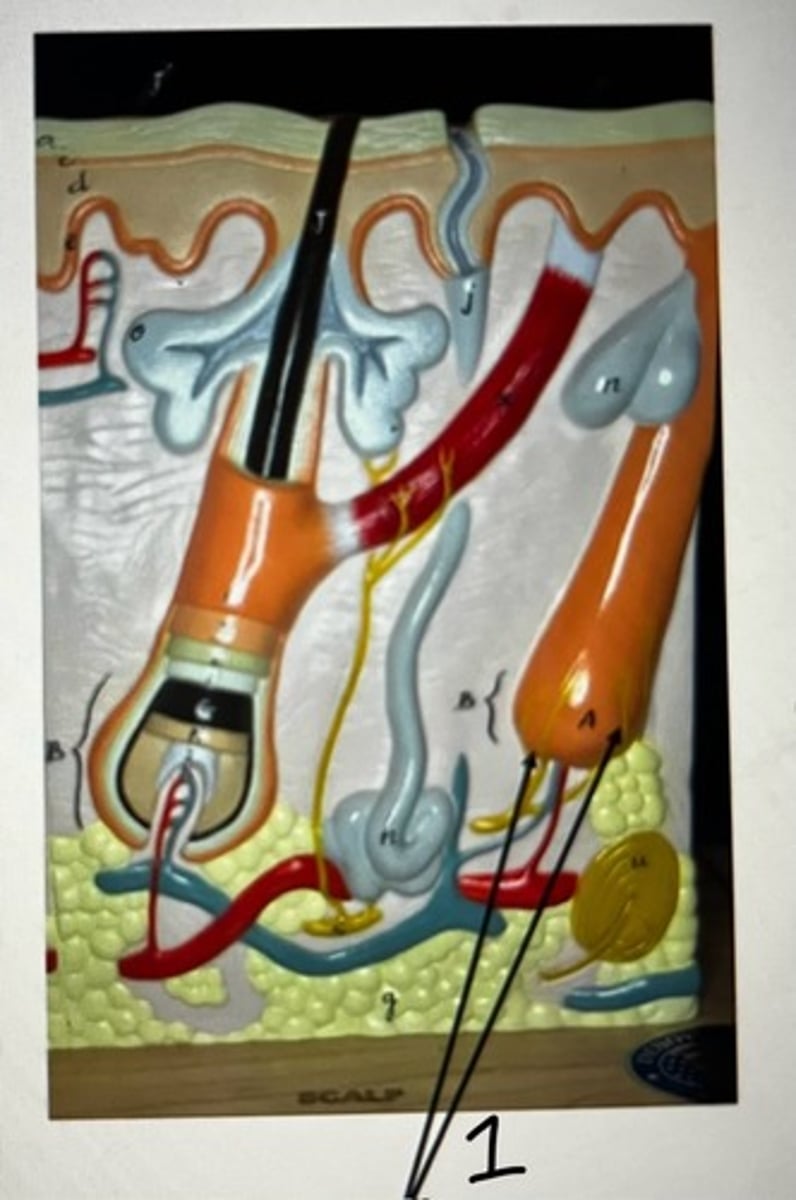
lacrimal gland
According to the model, what does #1 represent?
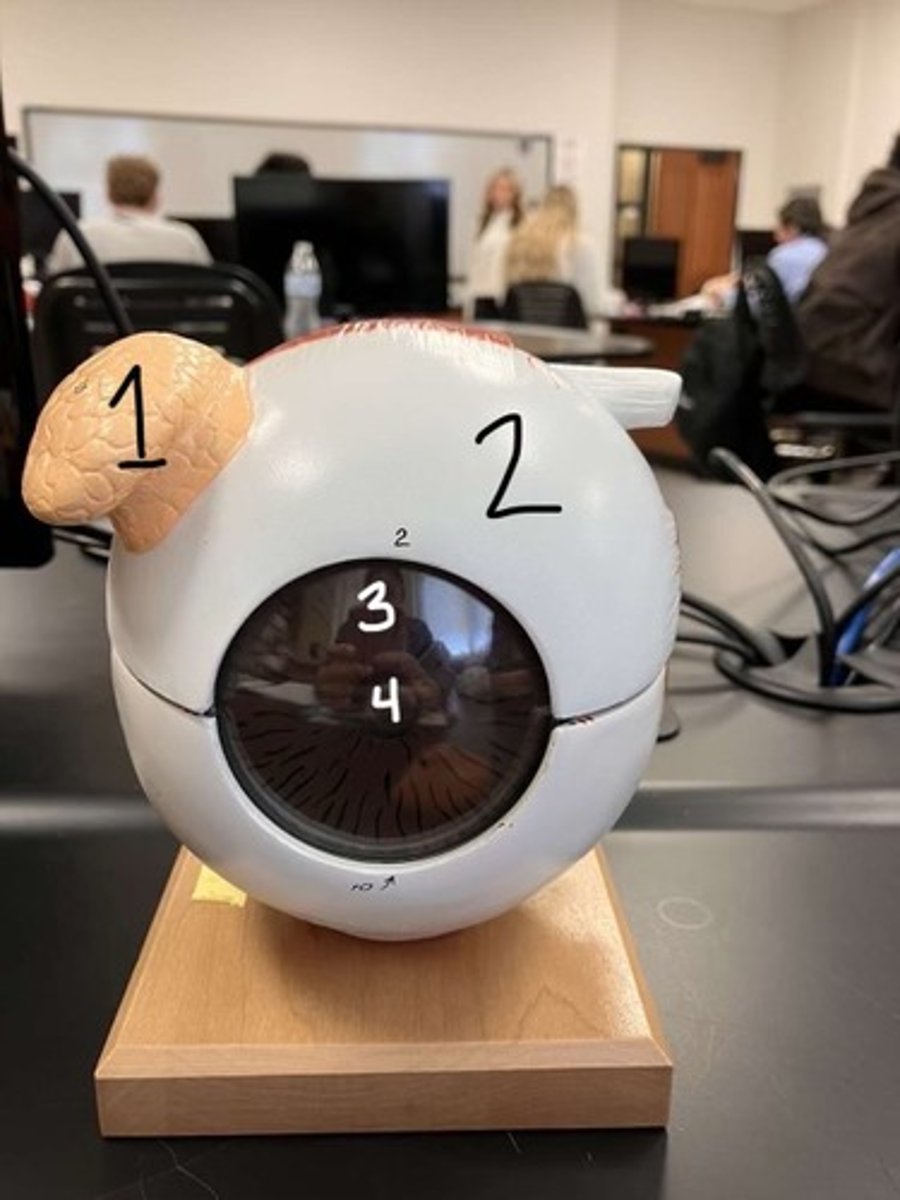
sclera
According to the model, what does #2 represent?
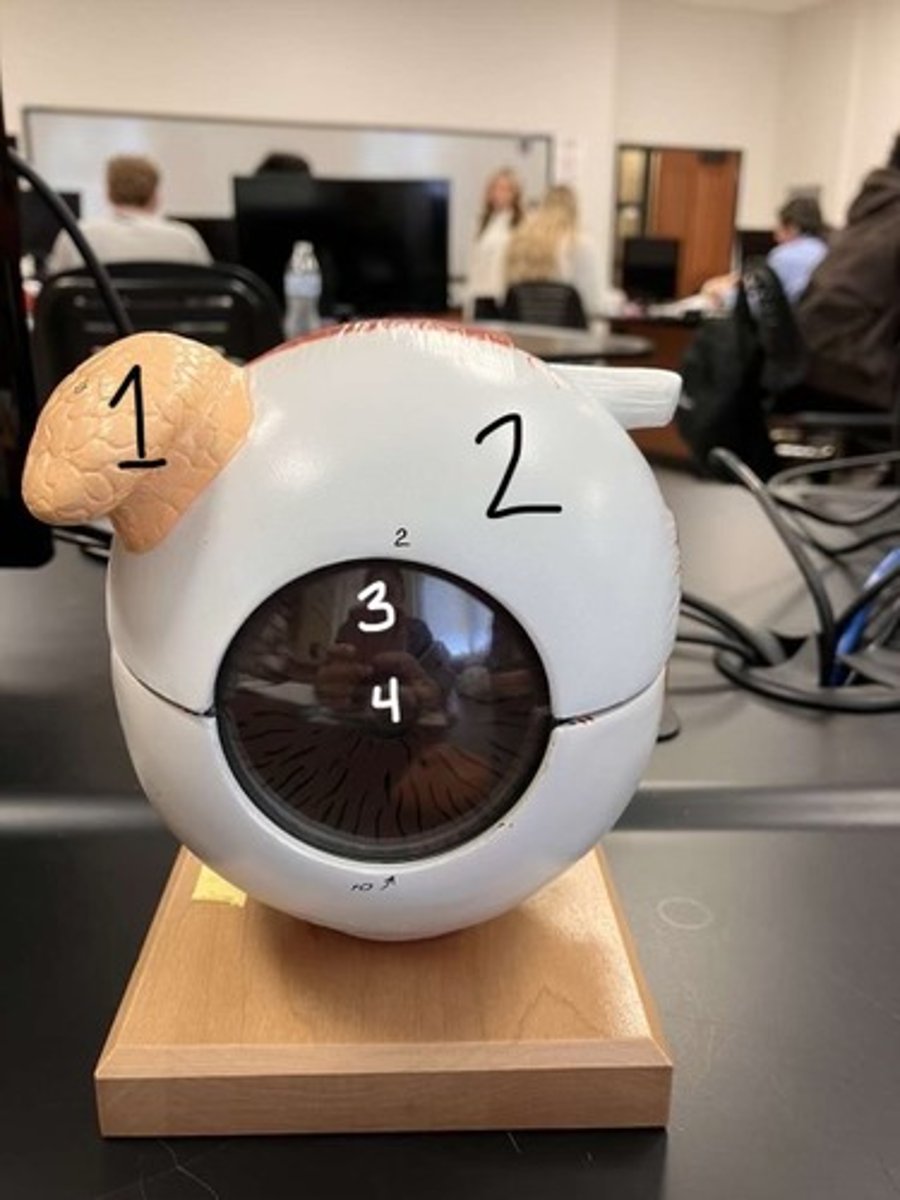
iris
According to the model, what does #3 represent?
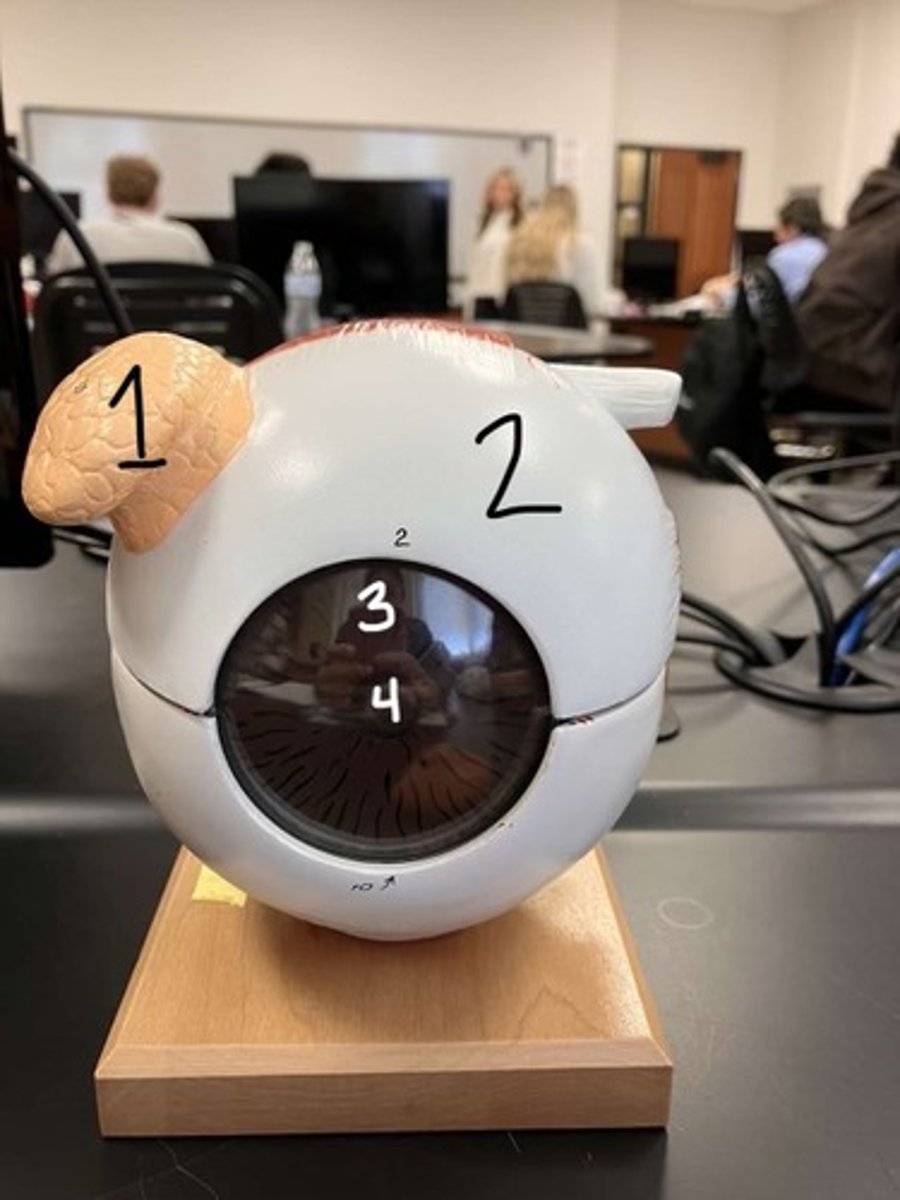
pupil
According to the model, what does #4 represent?
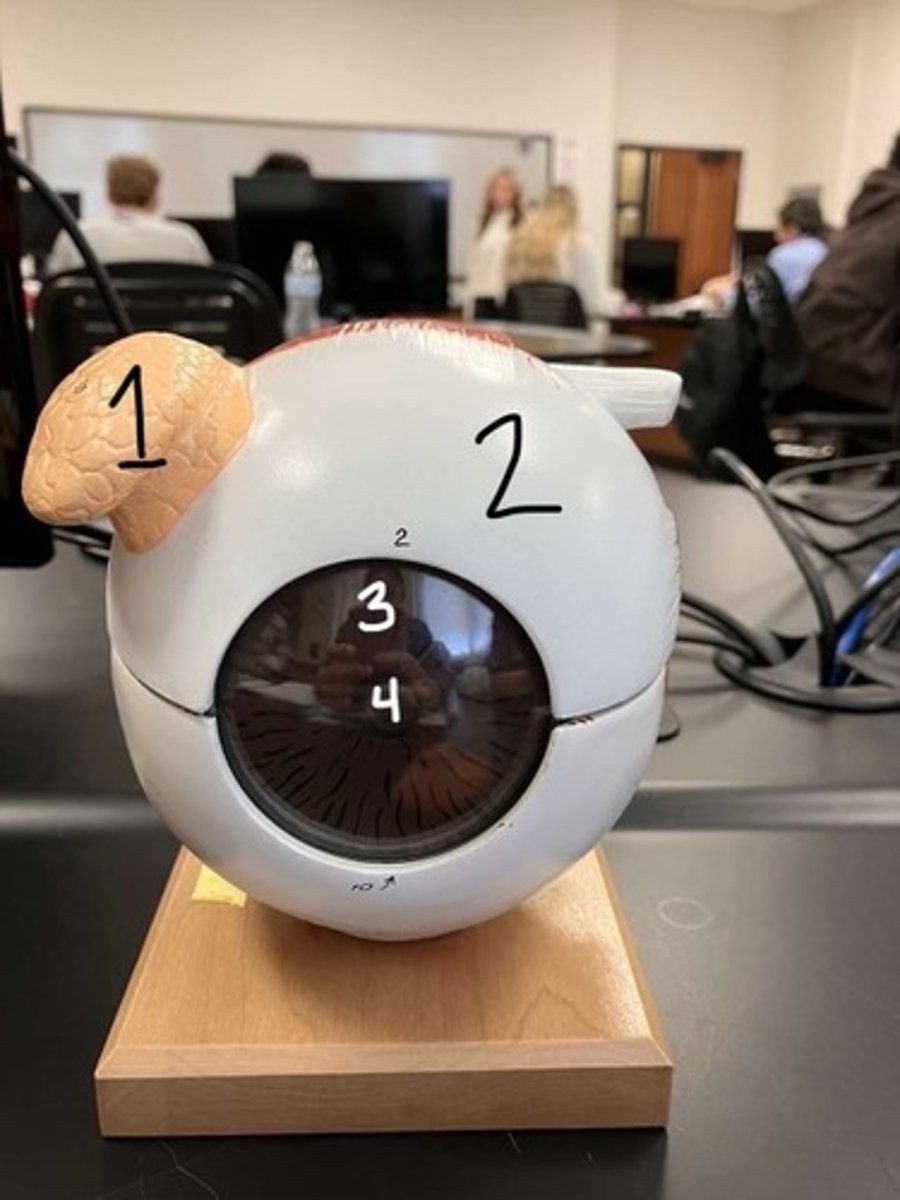
cornea
According to the model, what does #1 represent?

pupil
According to the model, what does #2 represent?
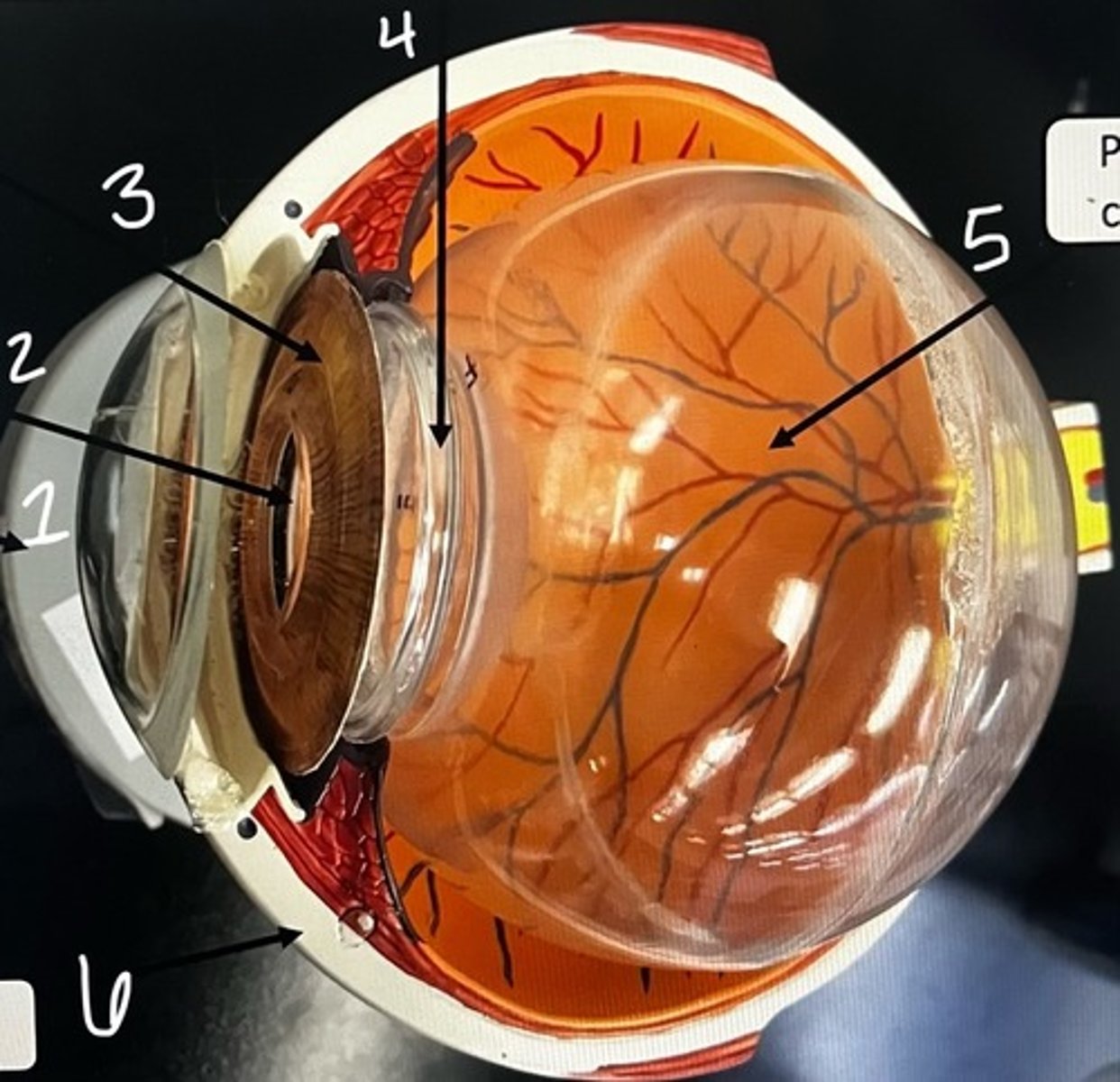
iris
According to the model, what does #3 represent?
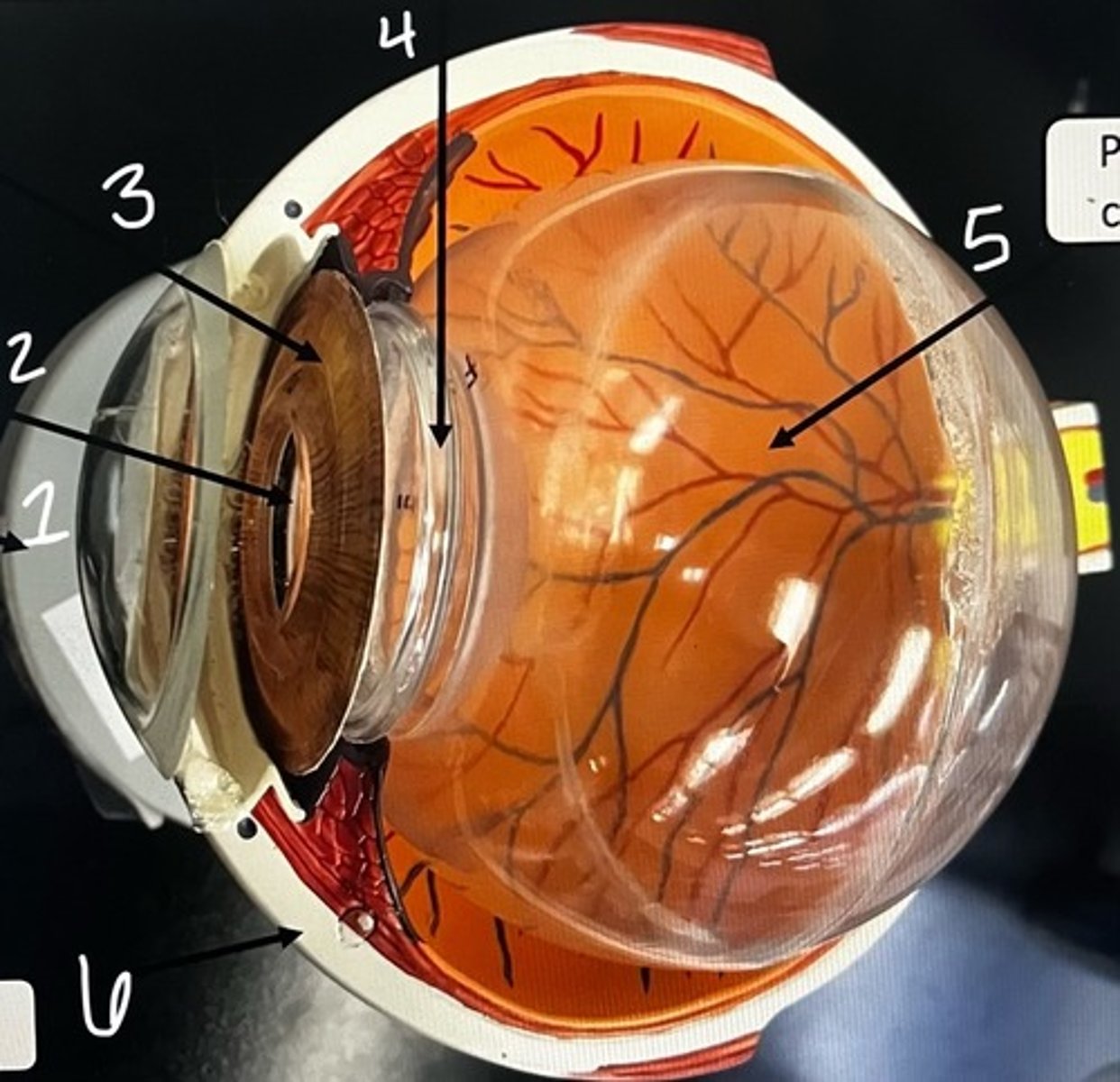
lens
According to the model, what does #4 represent?

posterior chamber
According to the model, what does #5 represent?
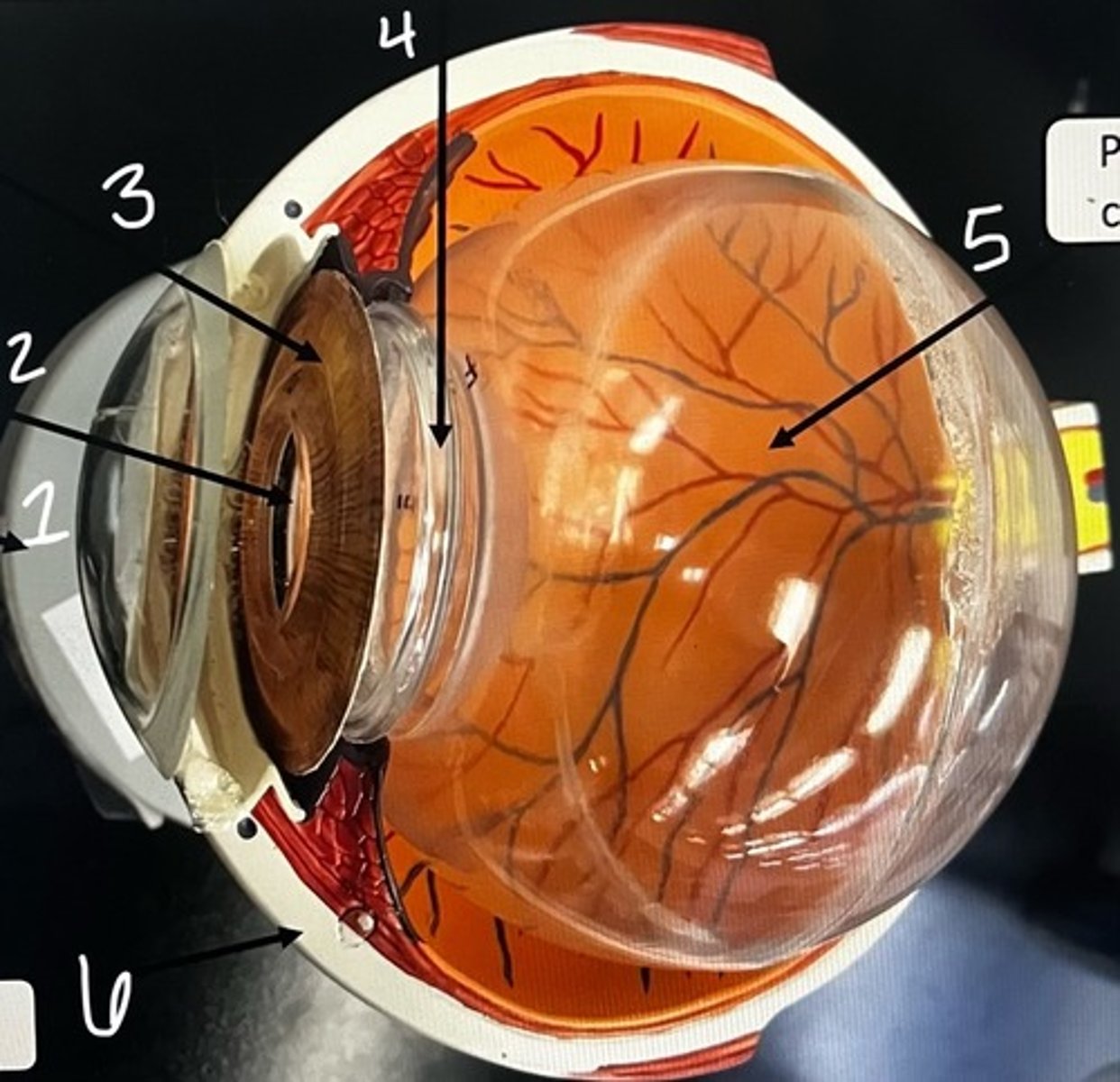
sclera
According to the model, what does #6 represent?
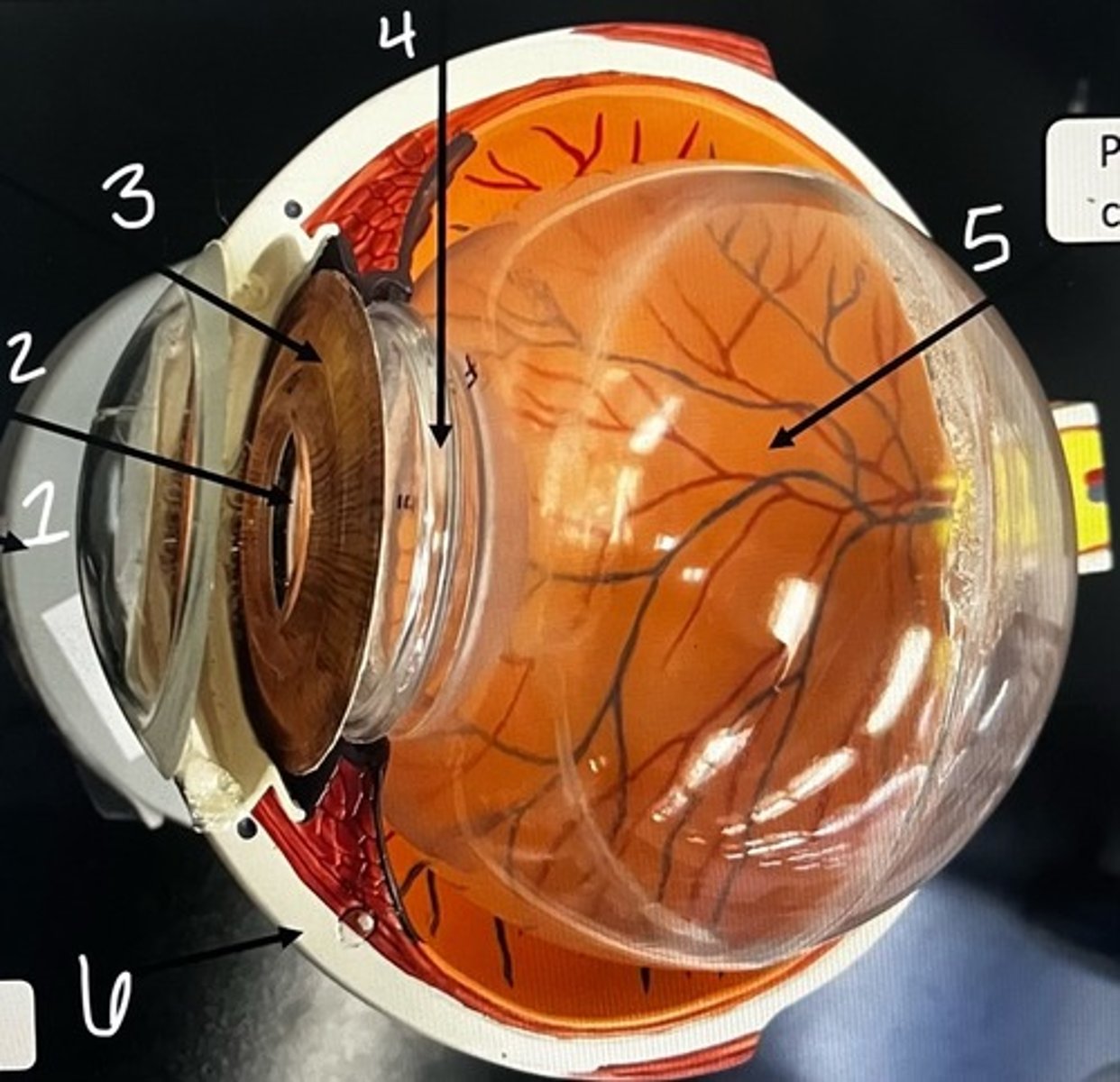
optic nerve
According to the model, what does the arrow represent?

olfactory
According to the model, what does #1 represent?
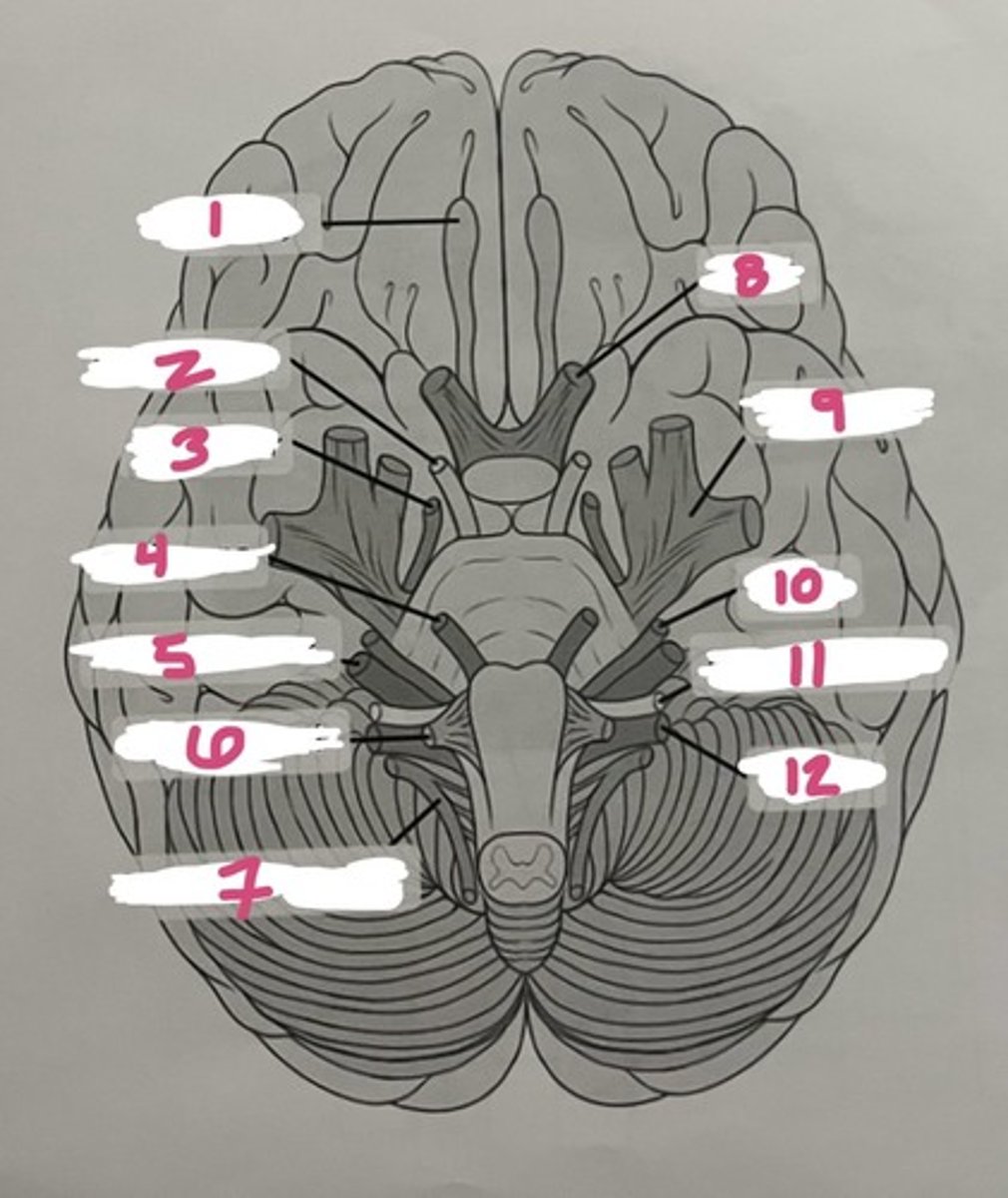
I
What is the roman numeral for olfactory?
oculomotor
According to the model, what does #2 represent?
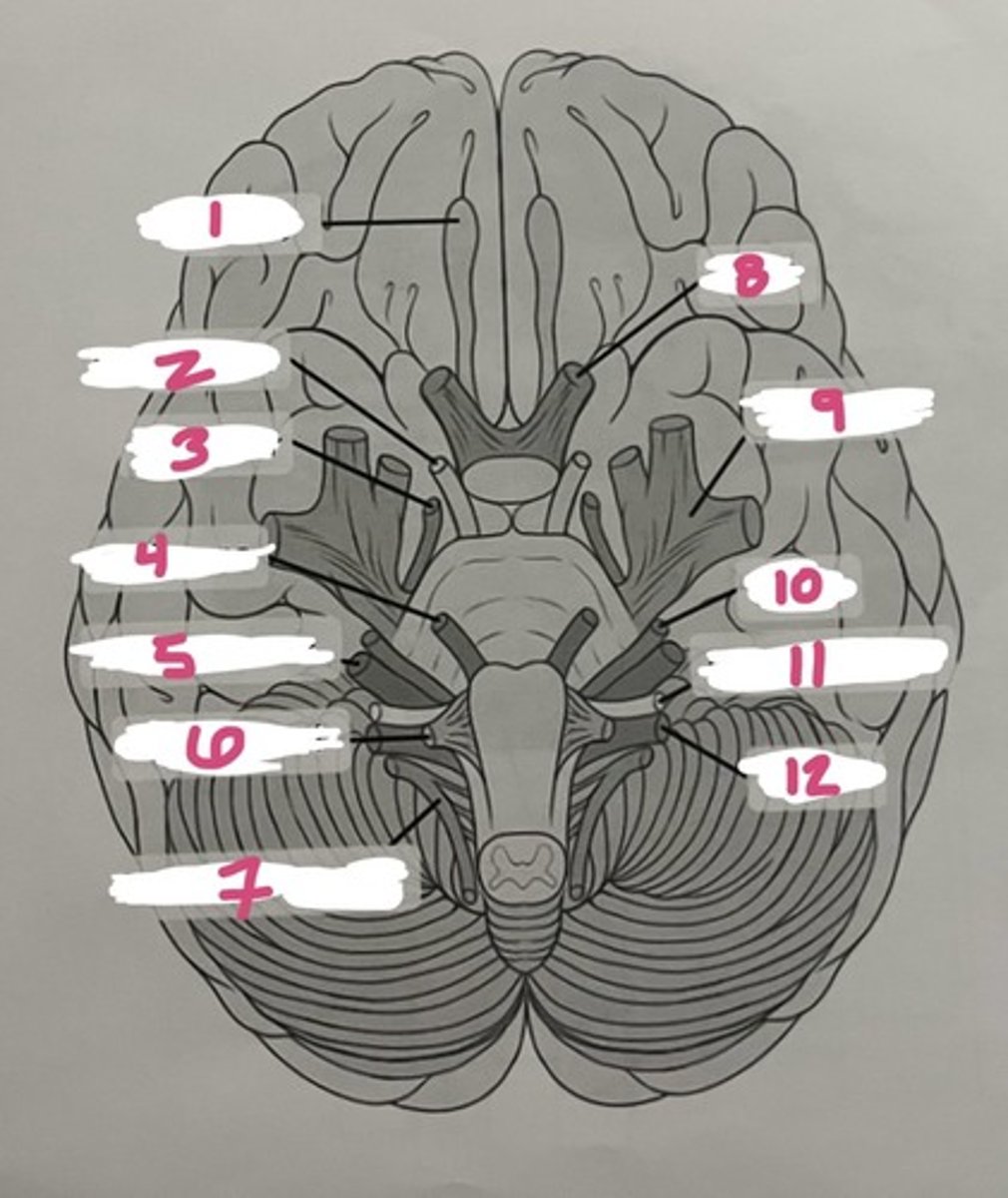
III
What is the roman numeral for oculomotor?
trochlear
According to the model, what does #3 represent?
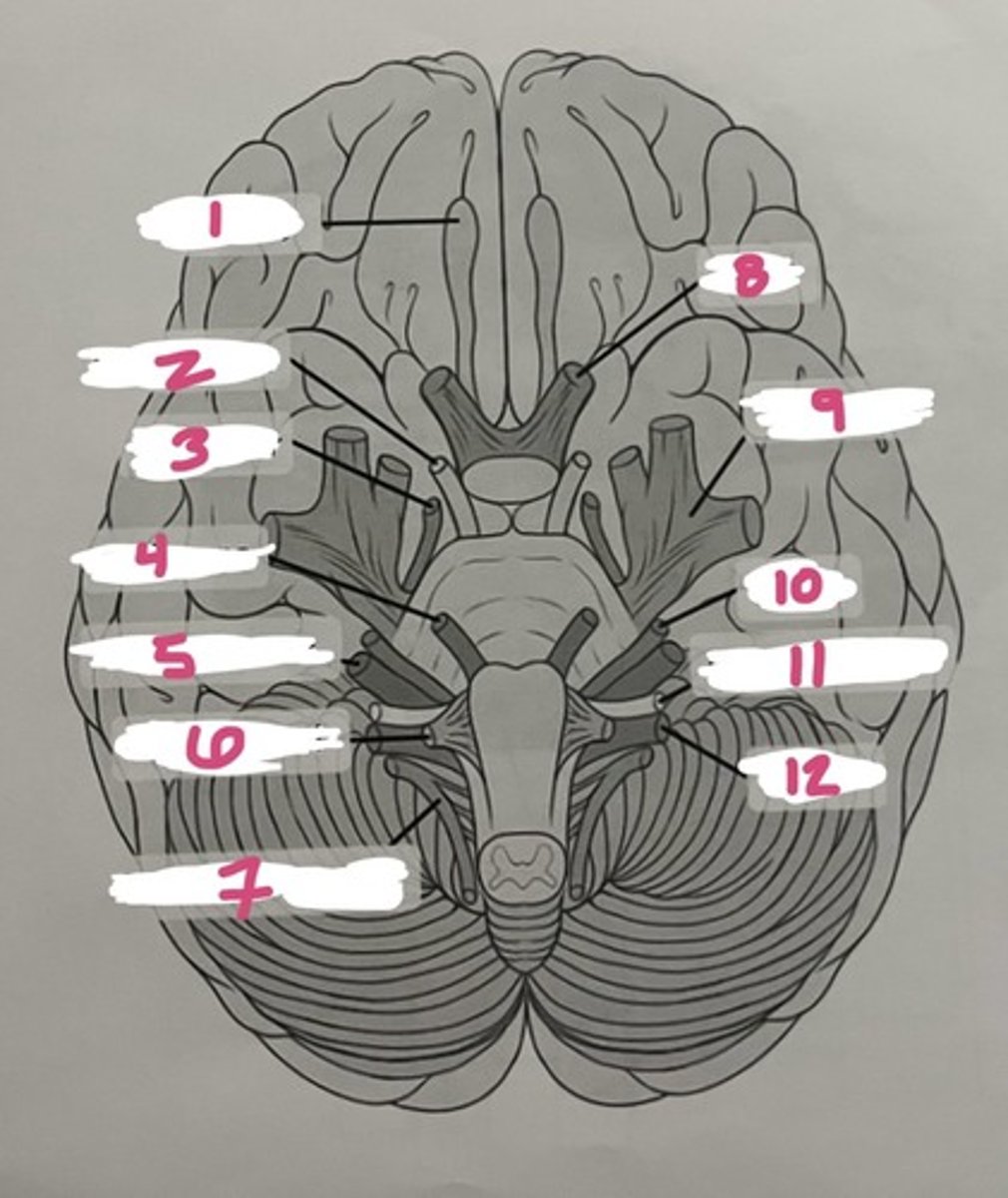
IV
What is the roman numeral for trochlear?
abducens
According to the model, what does #4 represent?
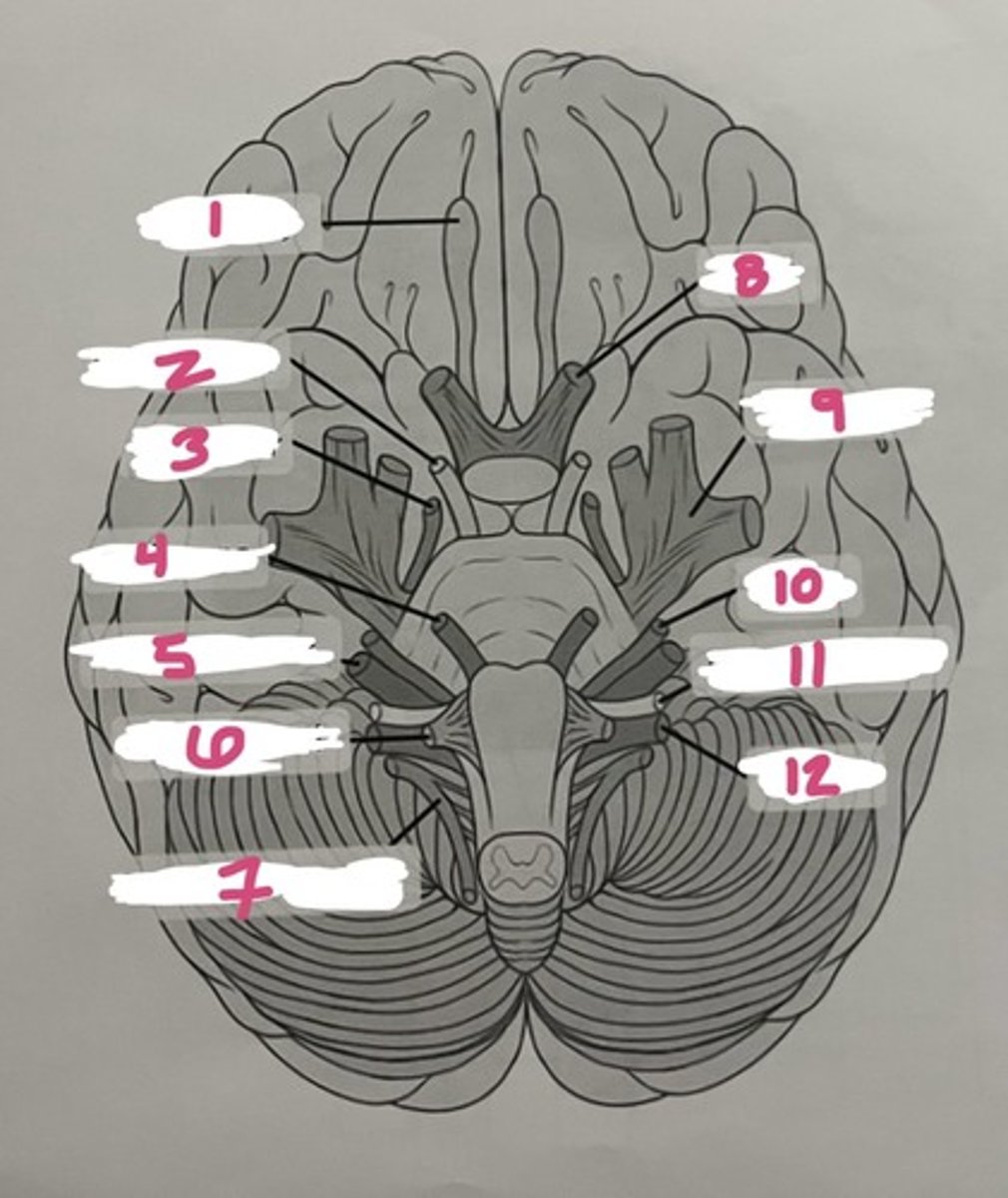
VI
What is the roman numeral for abducens?
vestibulocochlear
According to the model, what does #5 represent?
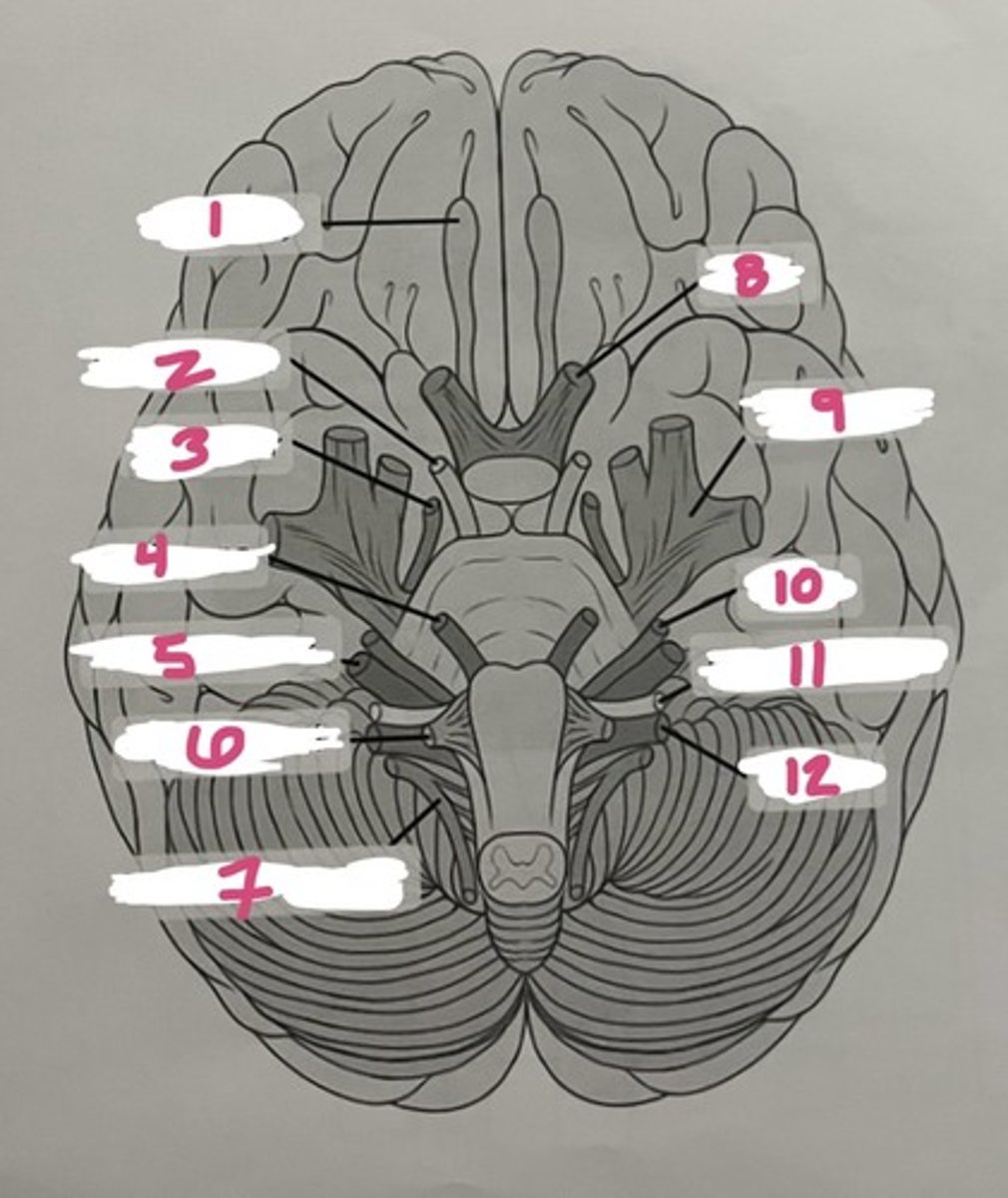
VIII
What is the roman numeral for vestibulocochlear?
hypoglossal
According to the model, what does #6 represent?
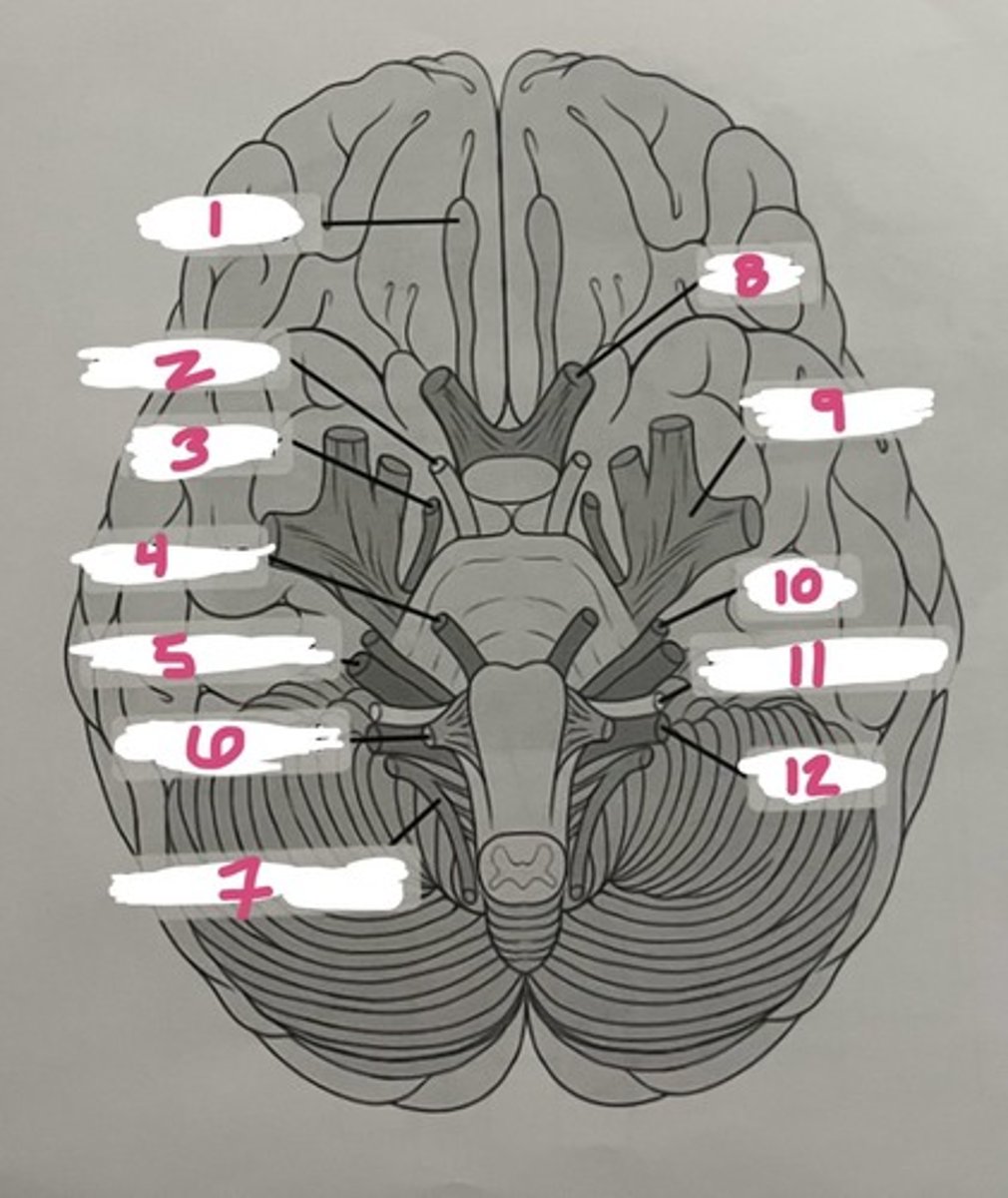
XII
What is the roman numeral for hypoglossal?
spinal accessory
According to the model, what does #7 represent?
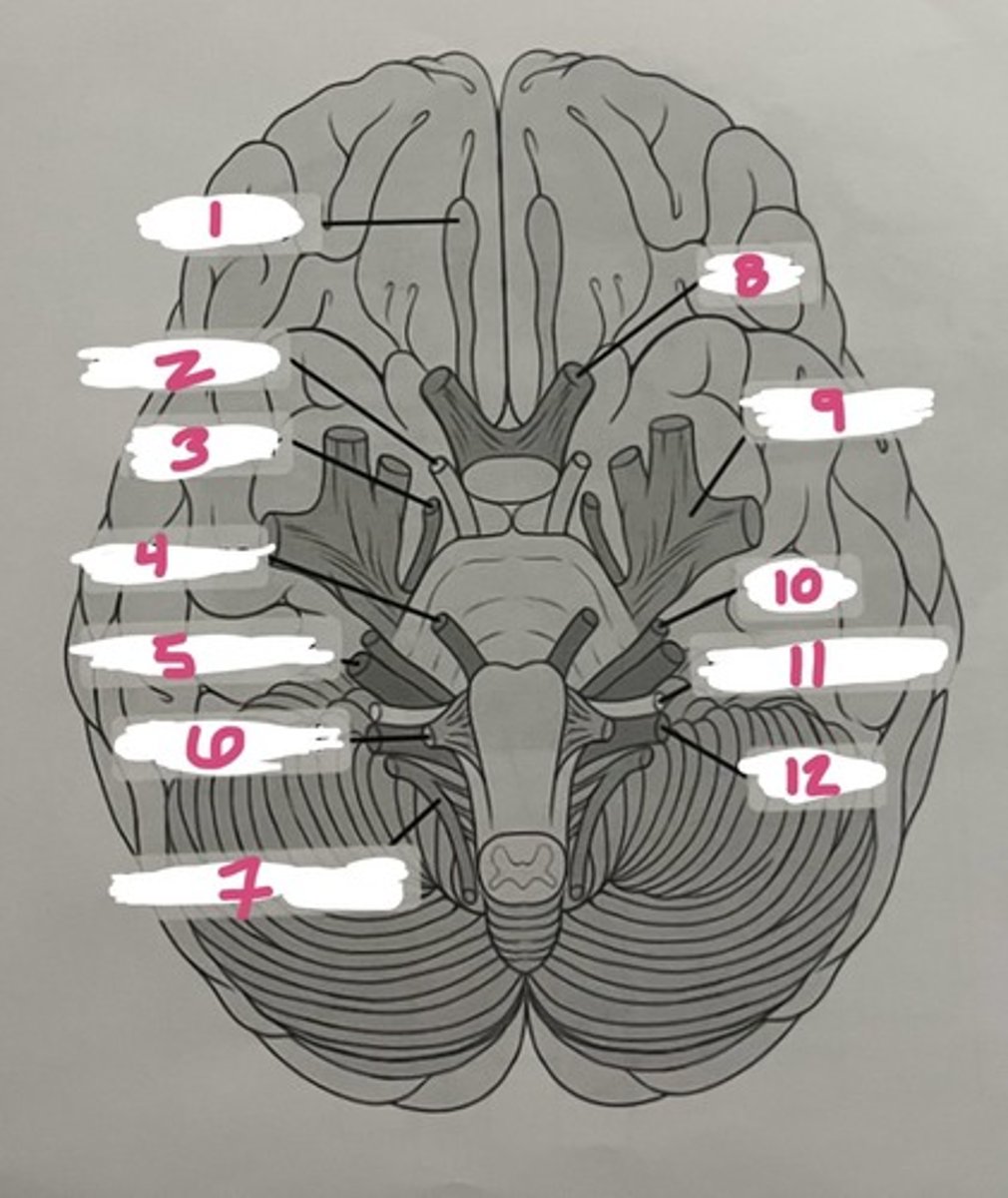
XI
What is the roman numeral for cranial accessory?
optic
According to the model, what does #8 represent?
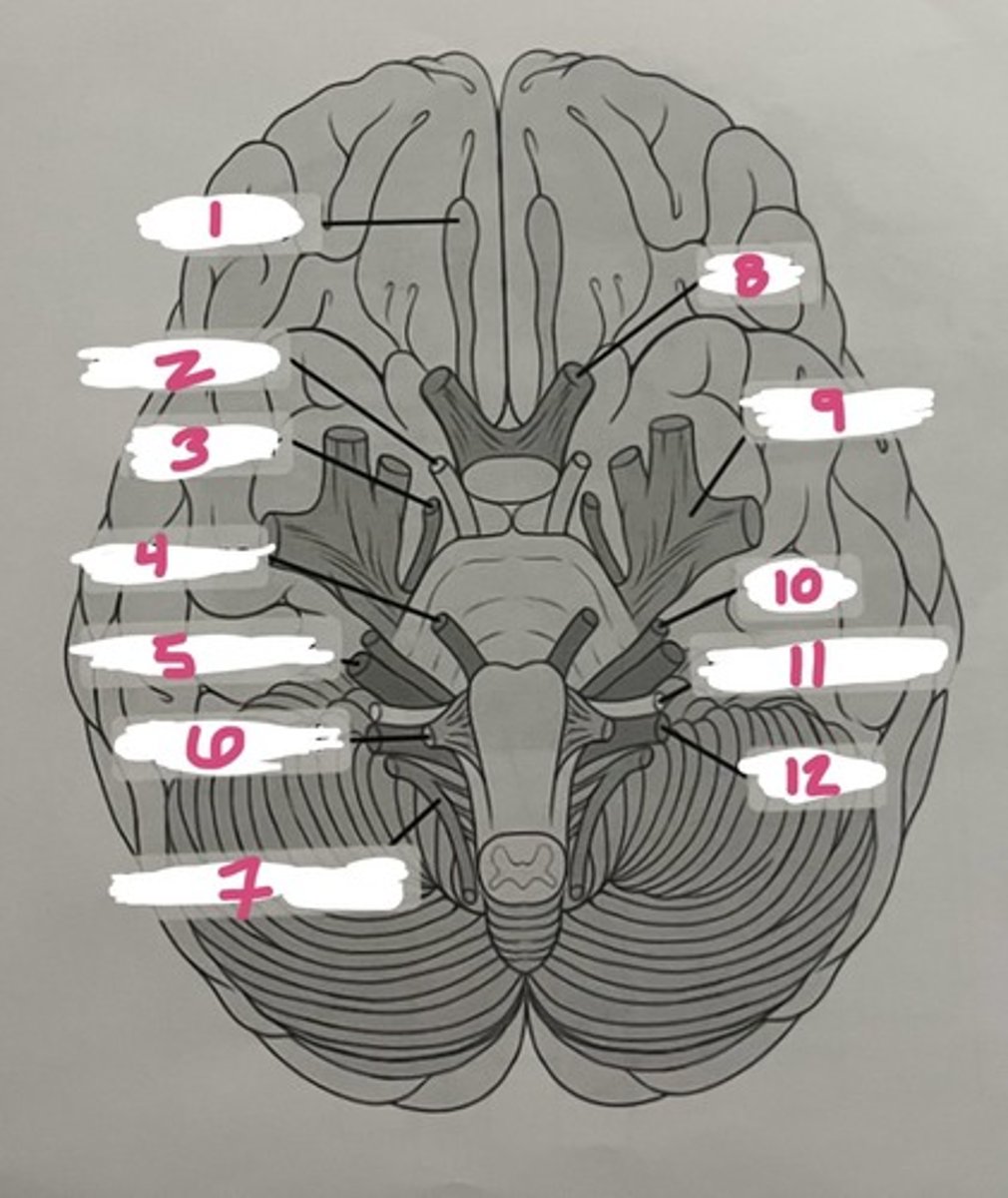
II
What is the roman numeral for optic?
trigeminal
According to the model, what does #9 represent?
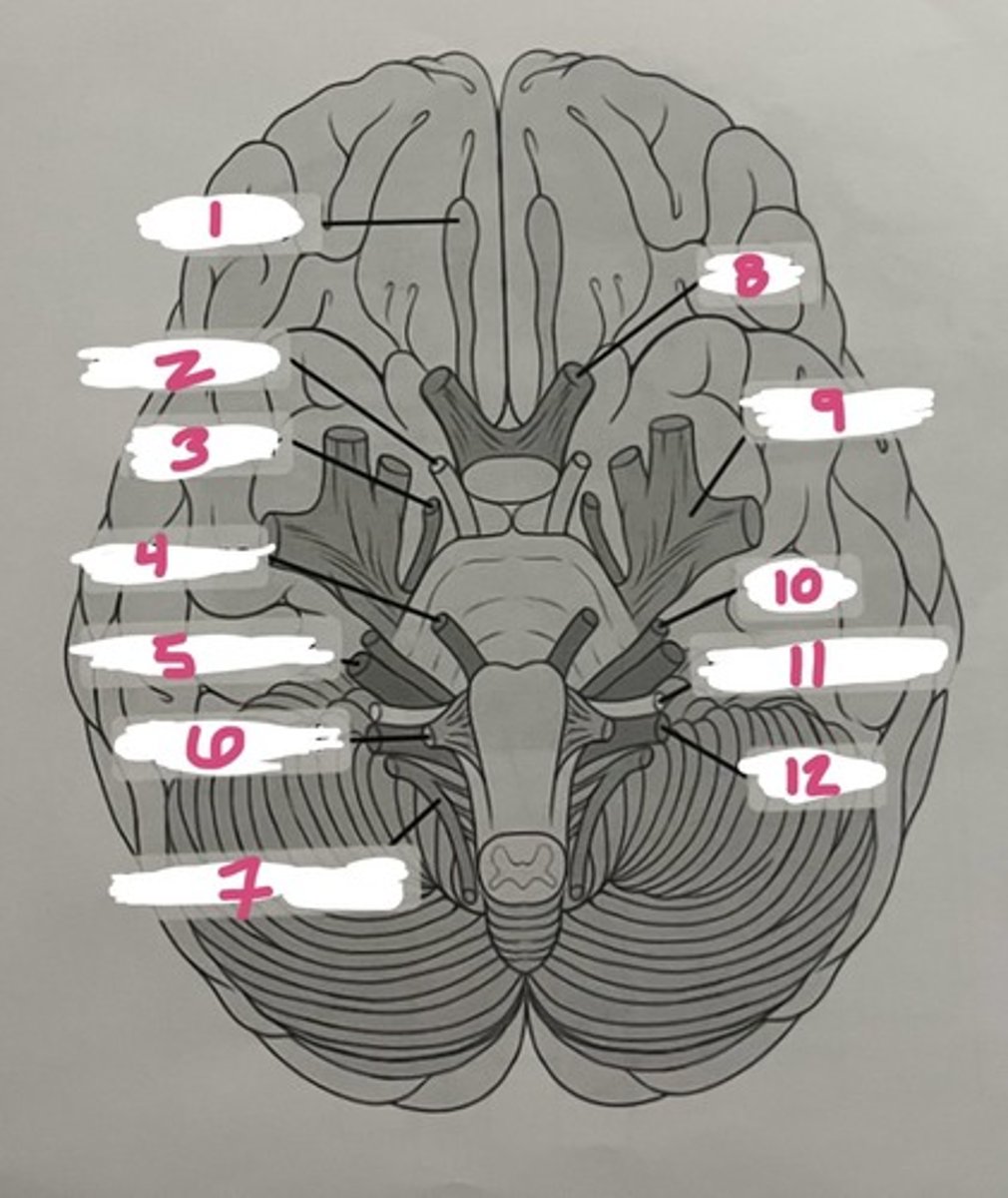
V
What is the roman numeral for trigeminal?
facial
According to the model, what does #10 represent?
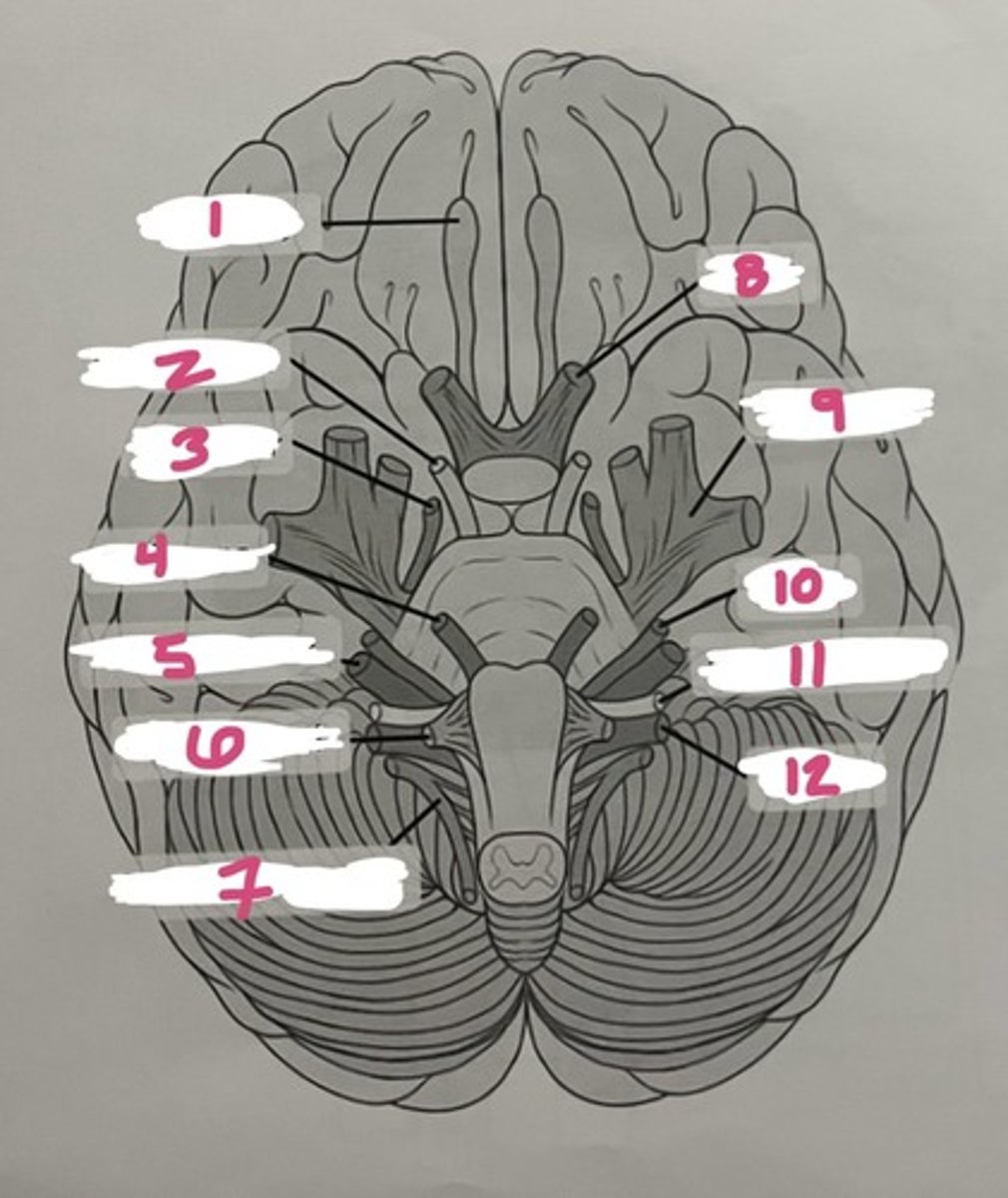
VII
What is the roman numeral for facial?
glossopharyngeal
According to the model, what does #11 represent?
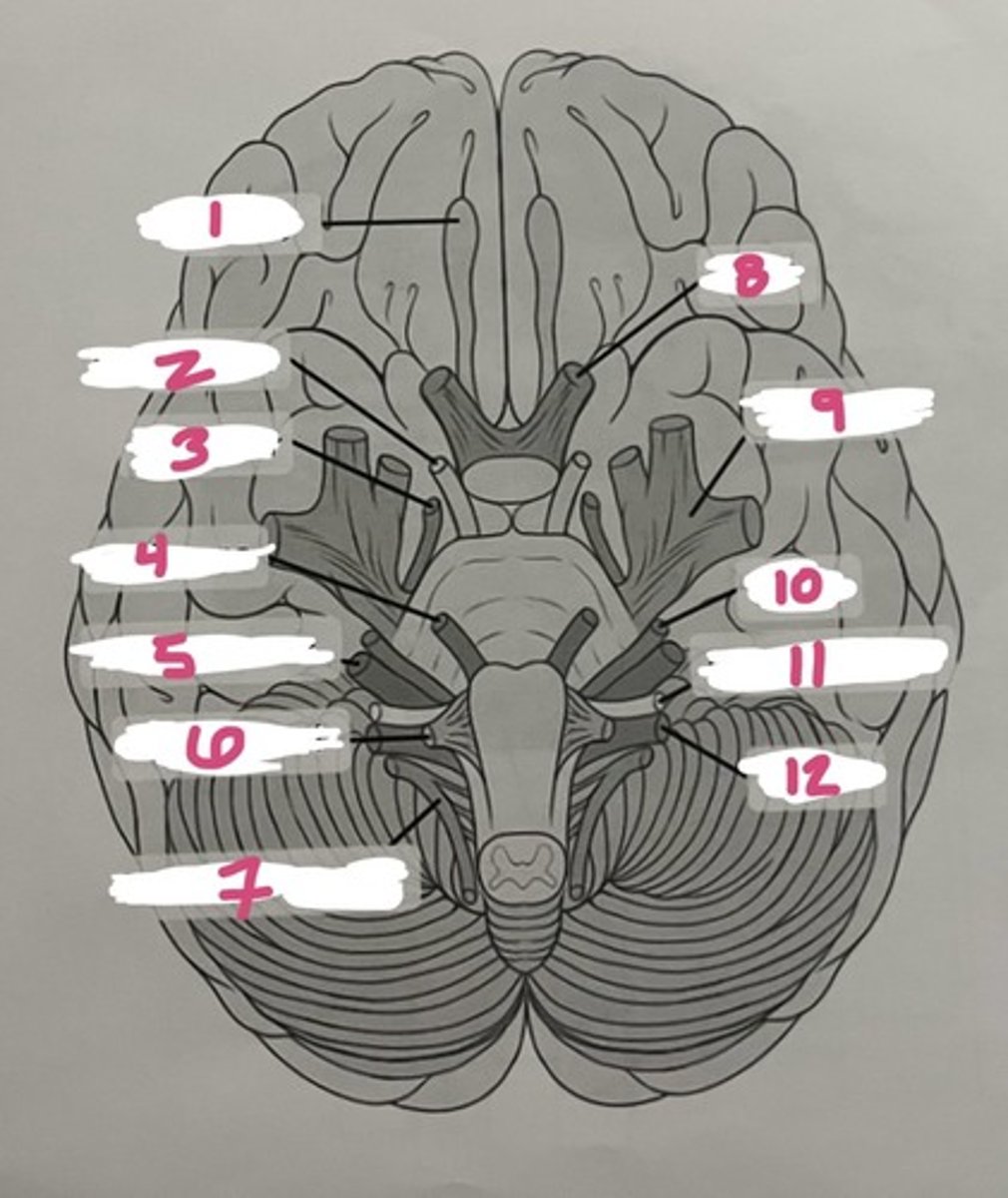
IX
What is the roman numeral for glossopharyngeal?
vagus
According to the model, what does #12 represent?
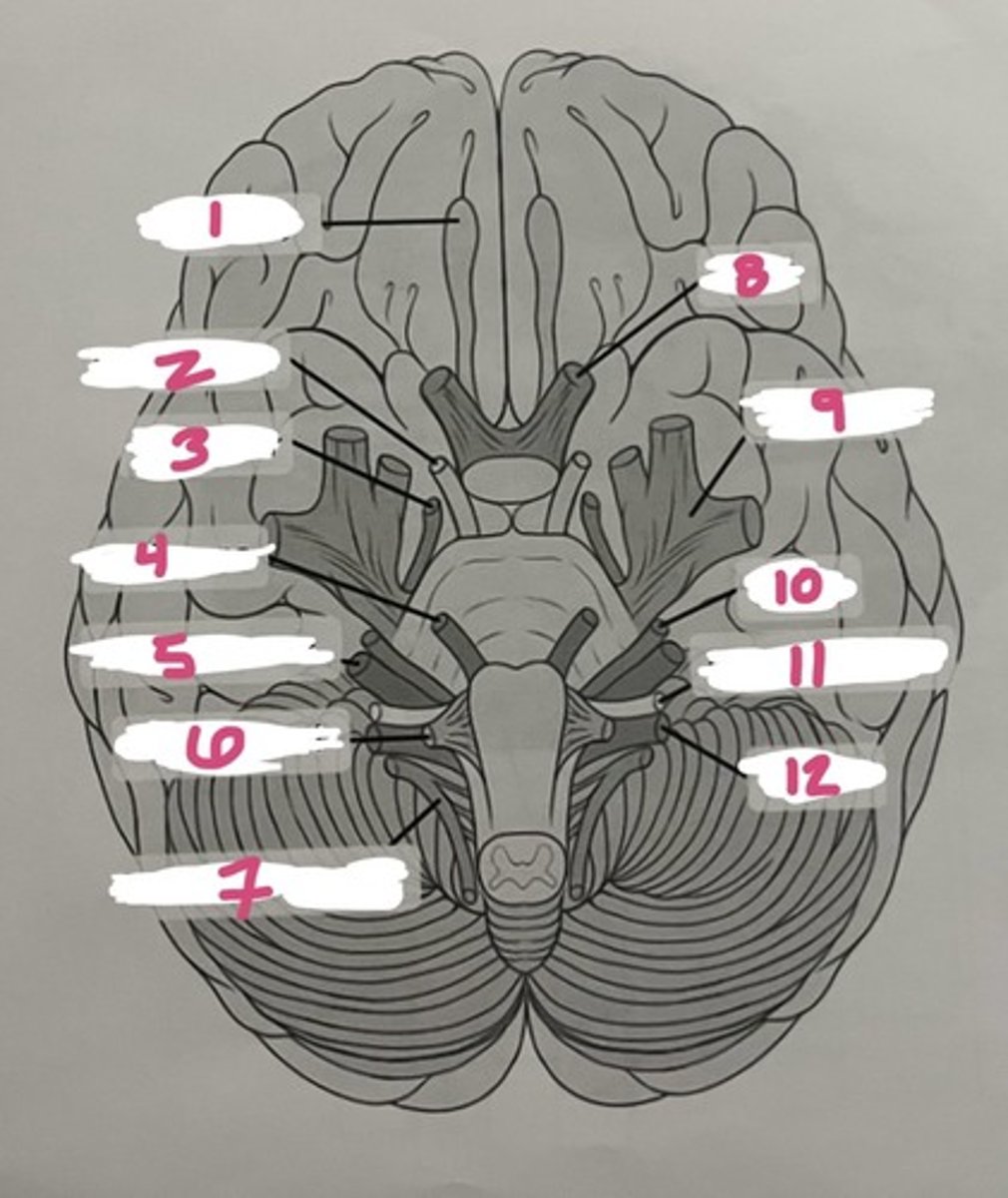
X
What is the roman numeral for vagus?
auricle/pinna
According to the model, what does #1 represent?
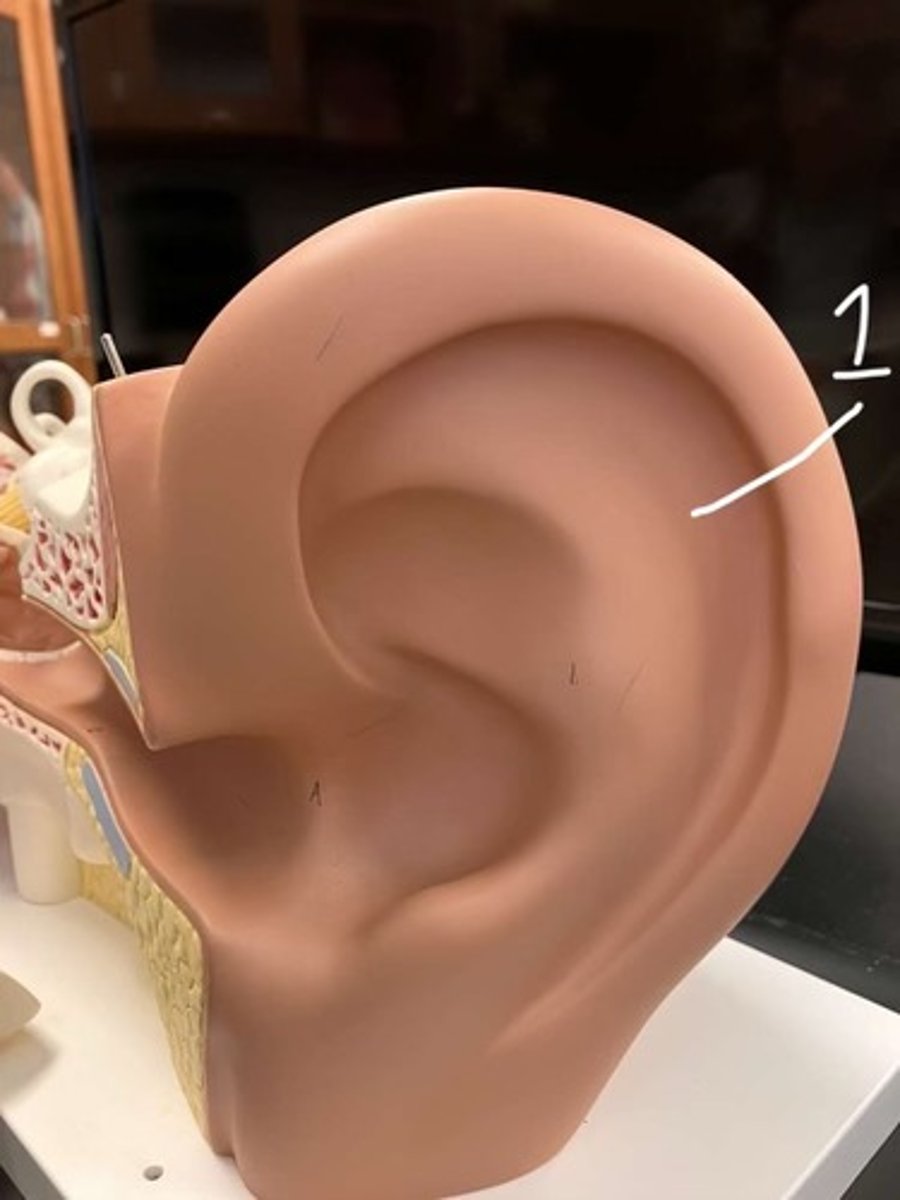
cochlea
According to the model, what does #1 represent?
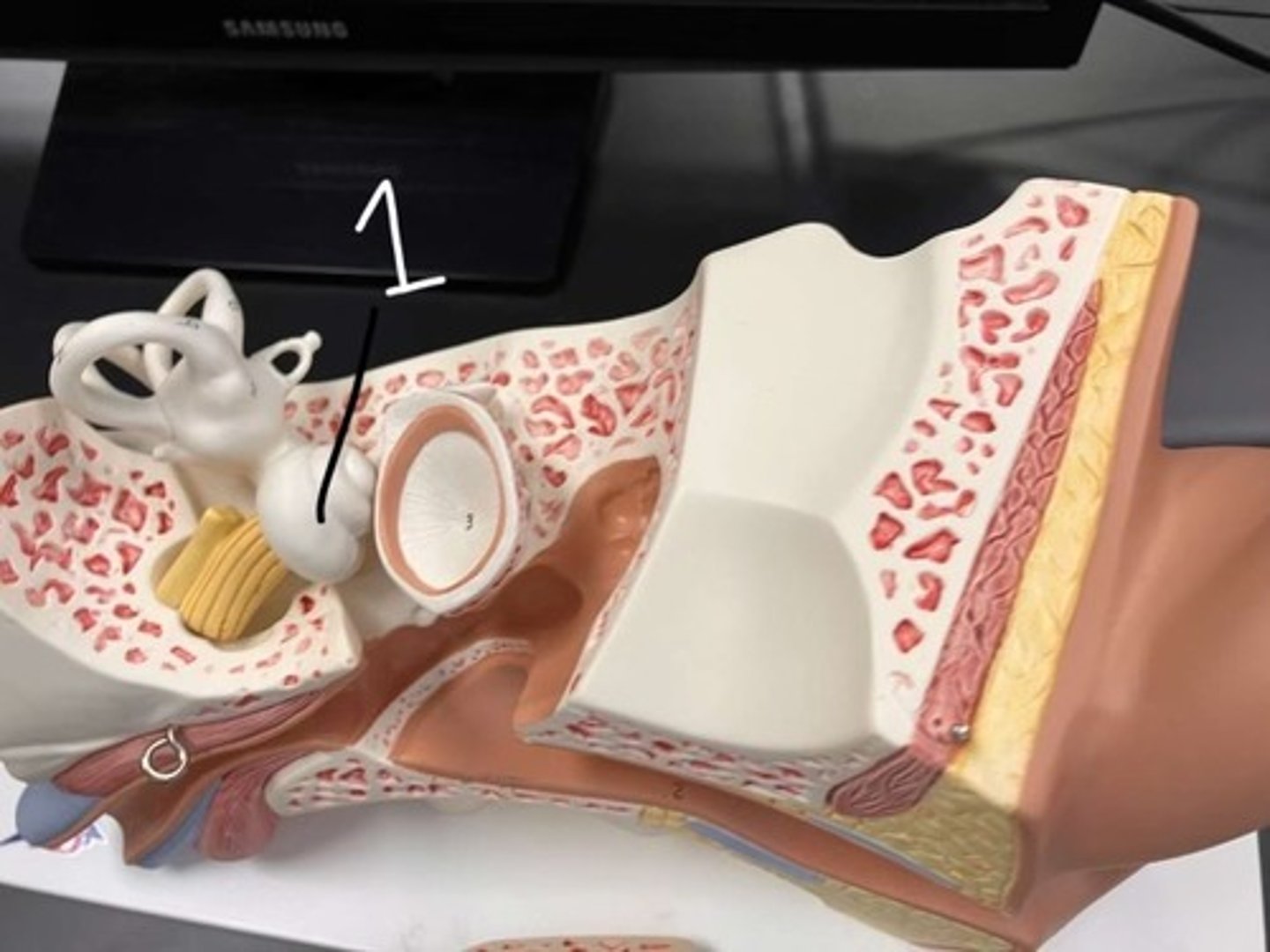
tympanic membrane
According to the model, what does #1 represent?
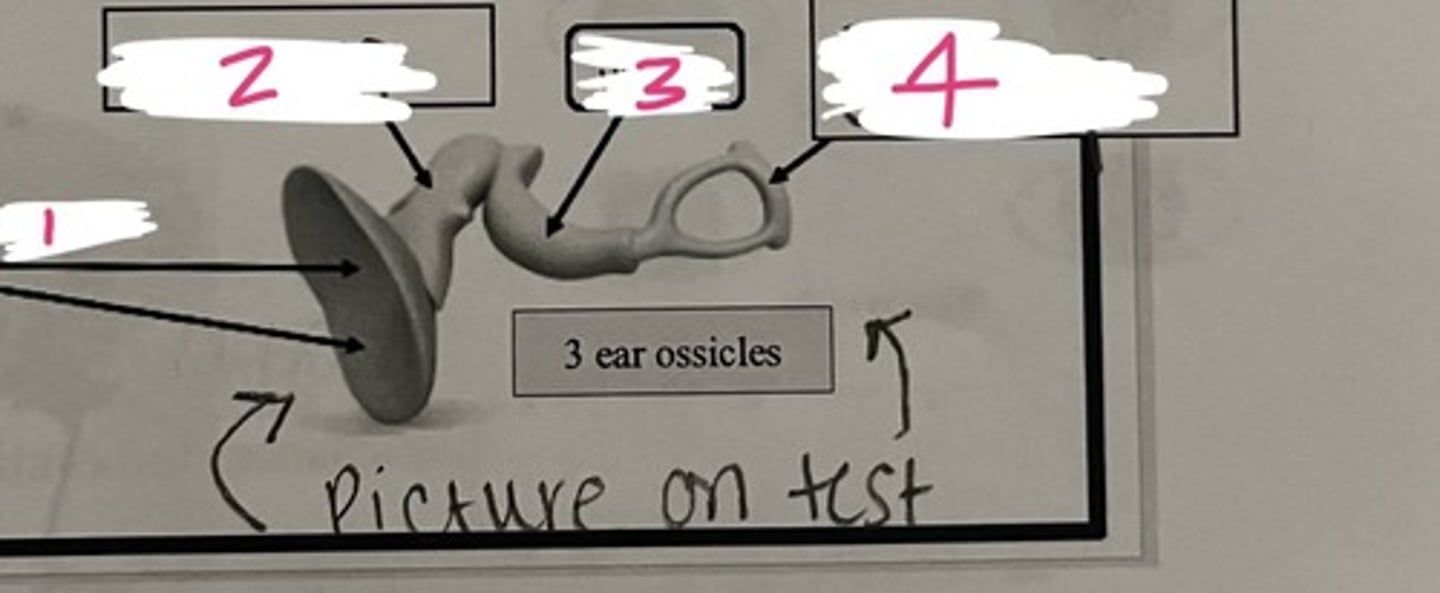
malleus
According to the model, what does #2 represent?
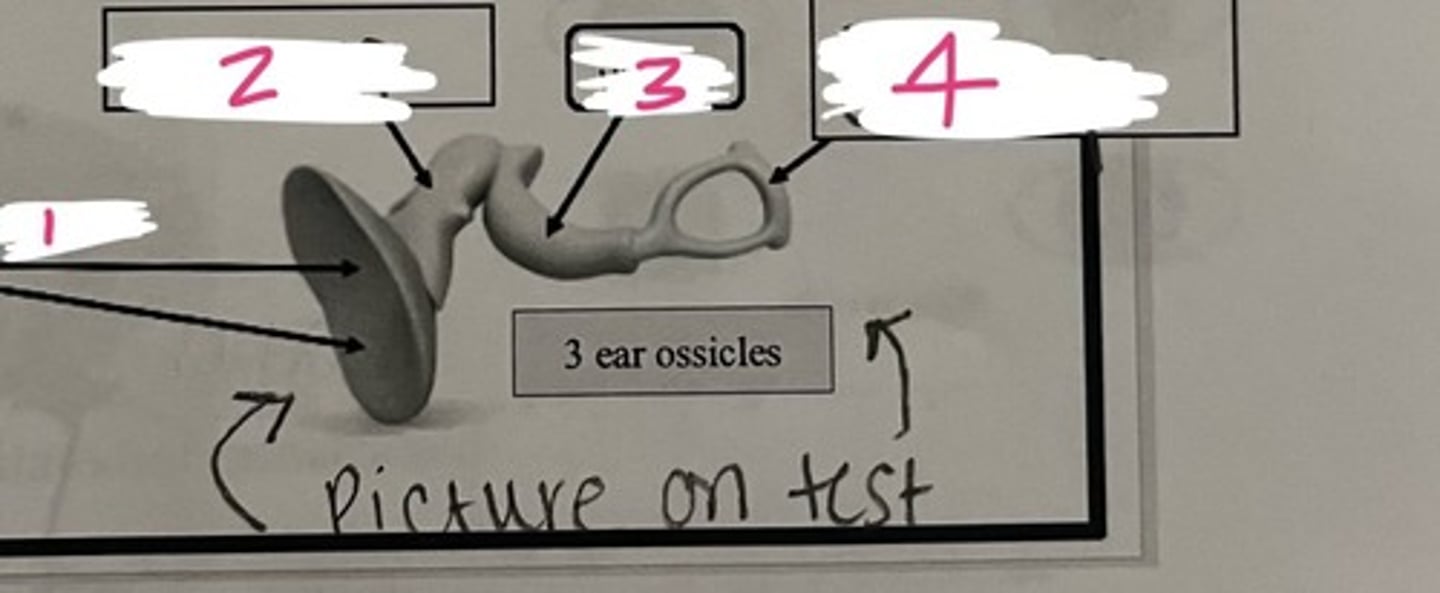
incus
According to the model, what does #3 represent?
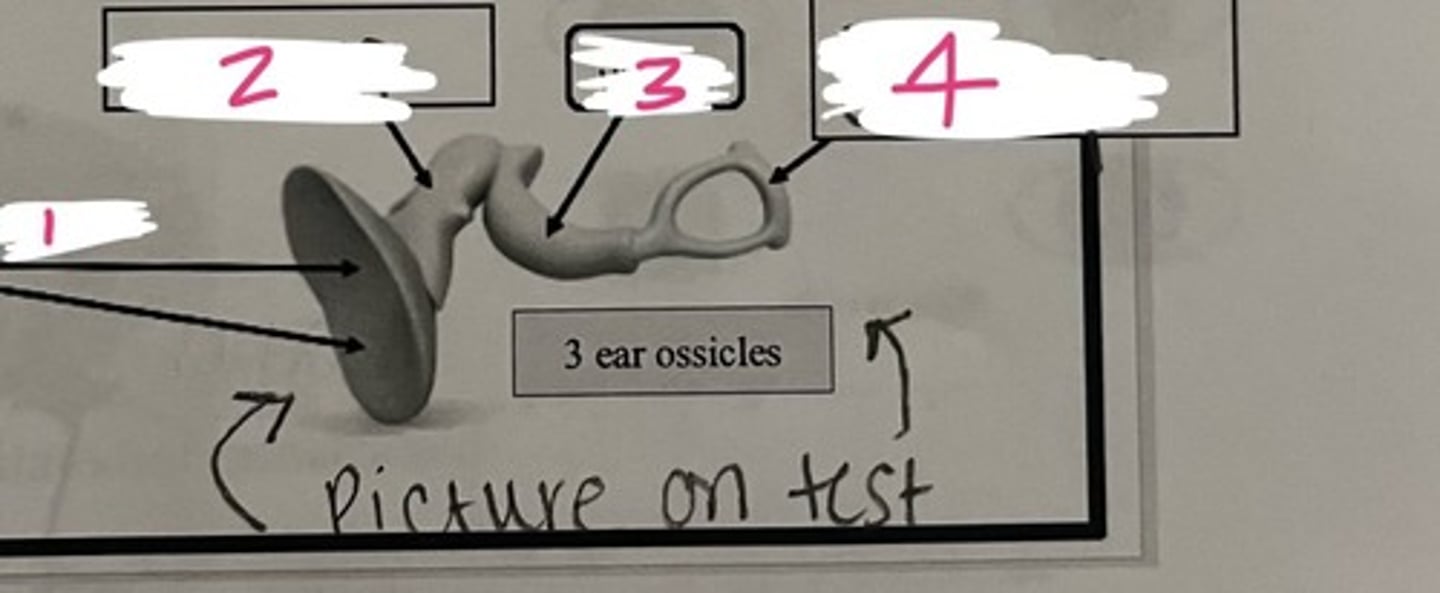
stapes
According to the model, what does #4 represent?
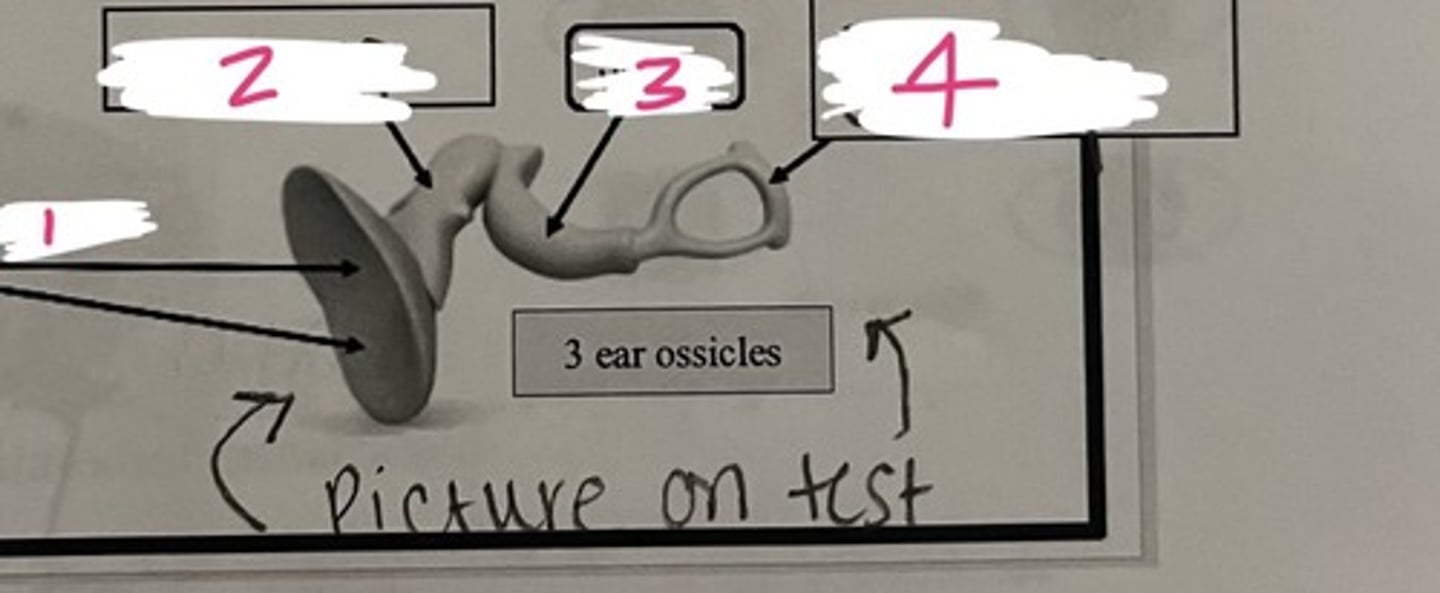
vestibulocochlear nerve
According to the model, what does #1 represent?
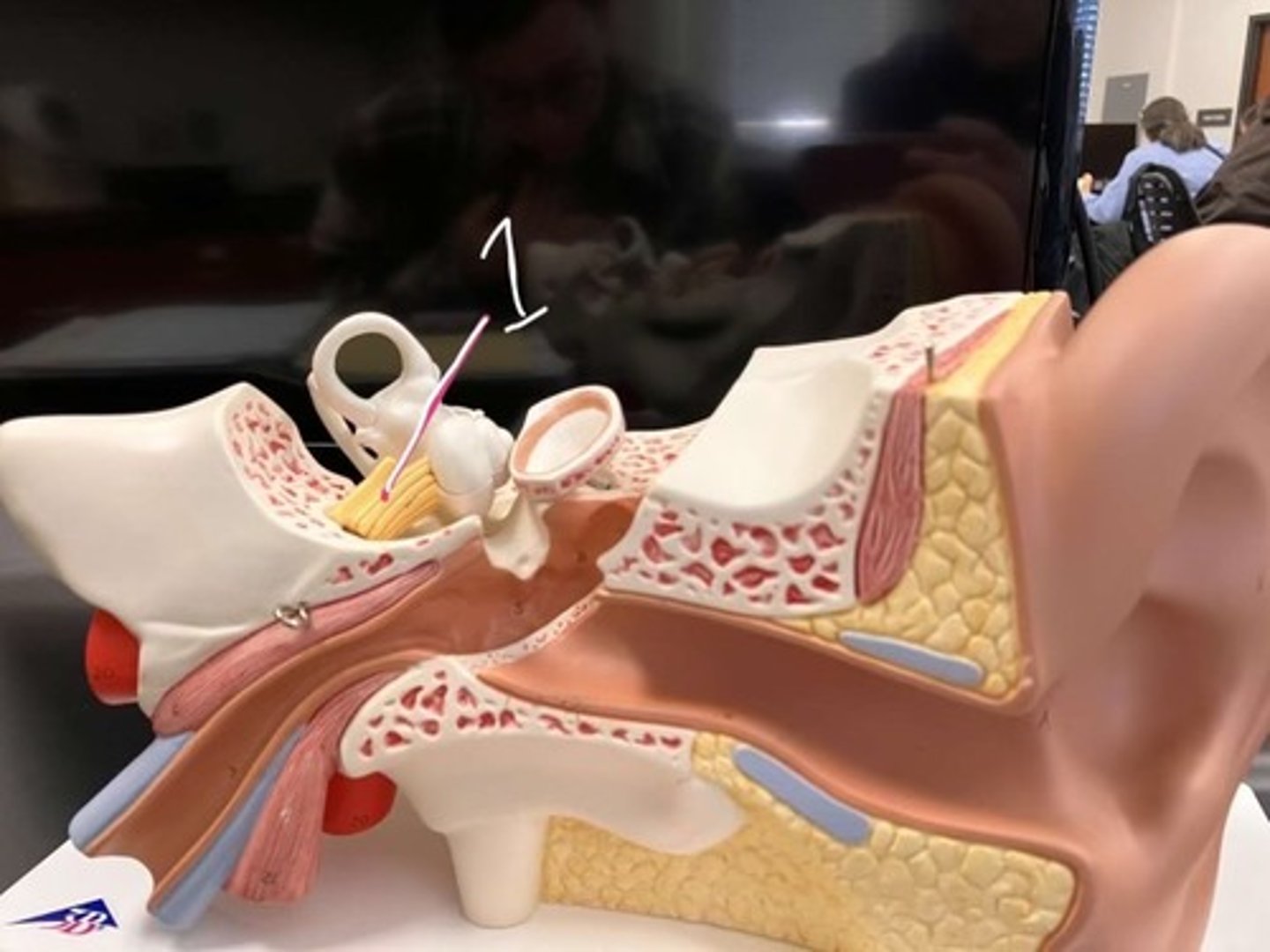
3rd ventricle
According to the model, what does #1 represent?
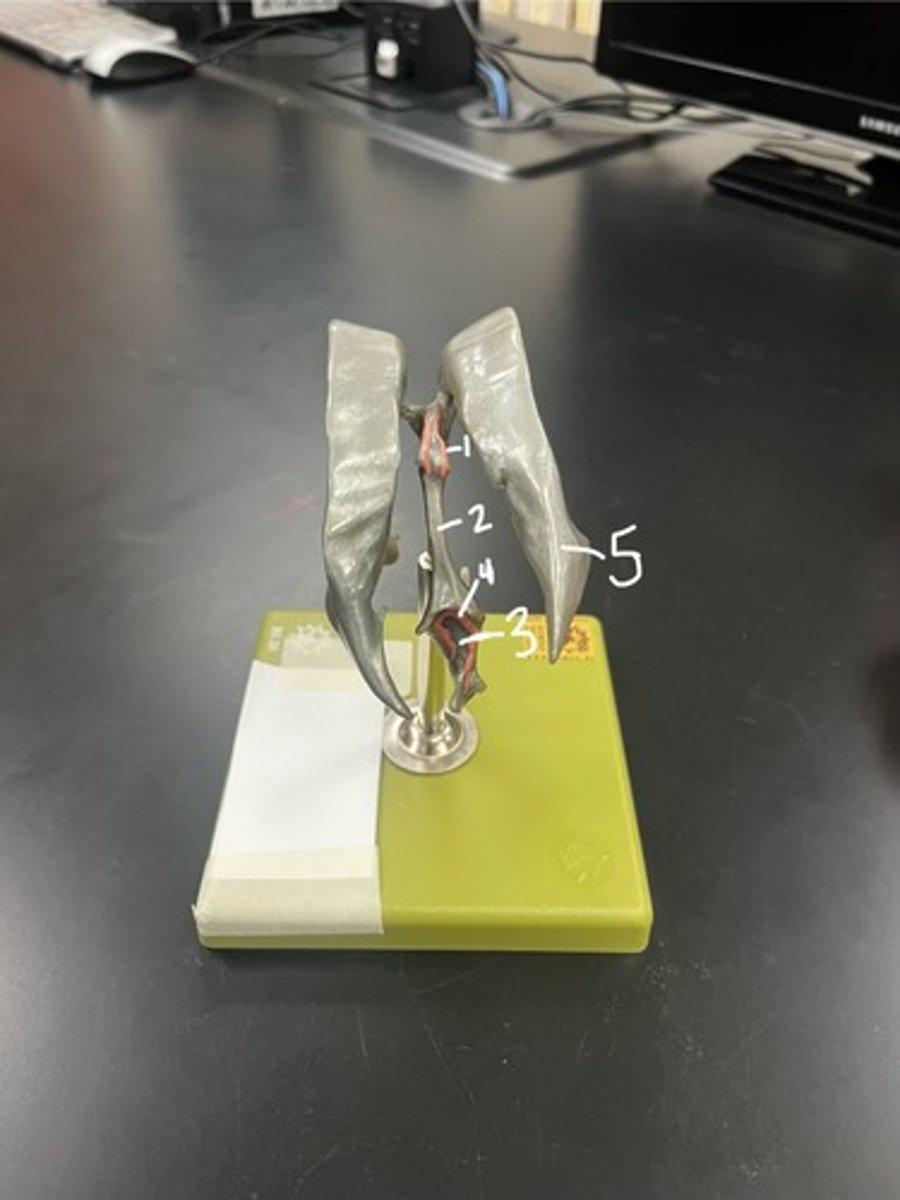
cerebral aqueduct
According to the model, what does #2 represent?
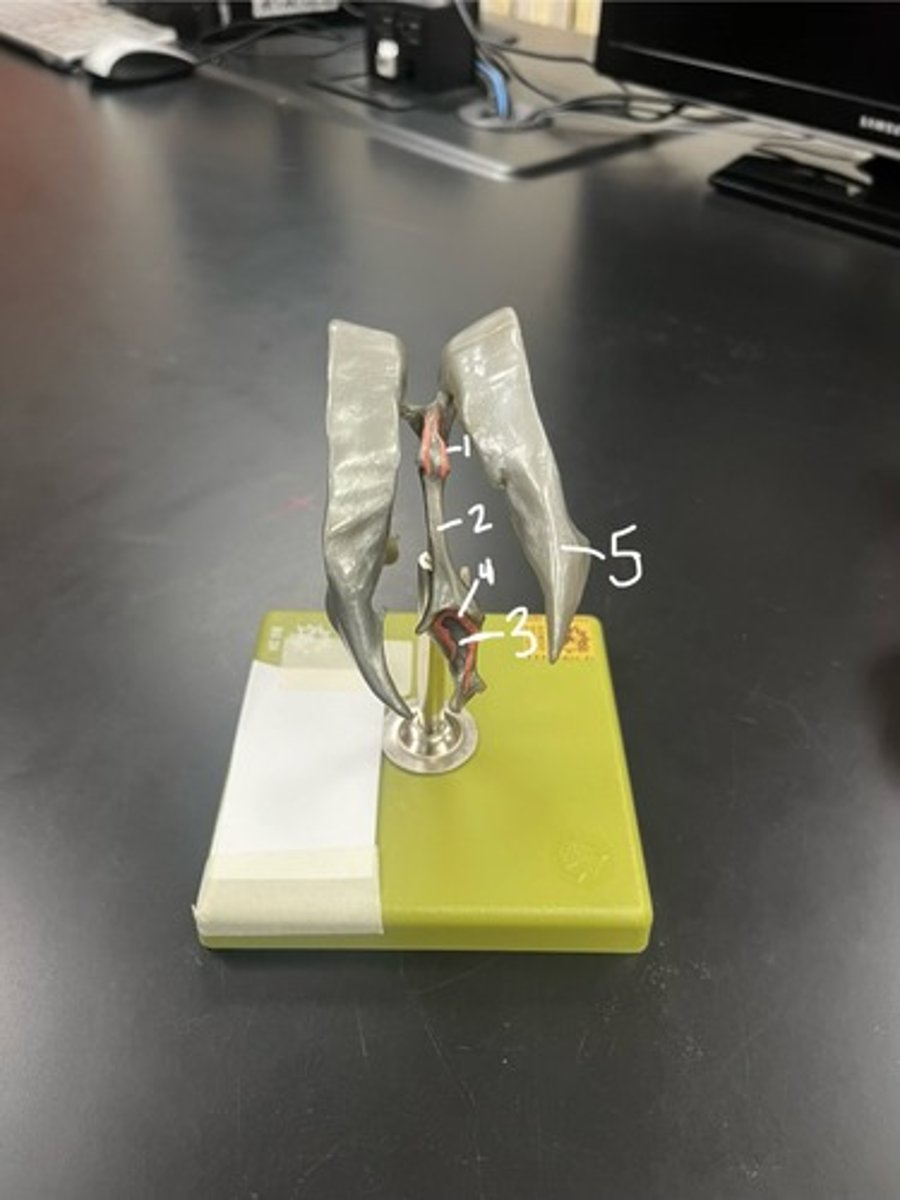
4th ventricle
According to the model, what does #3 represent?
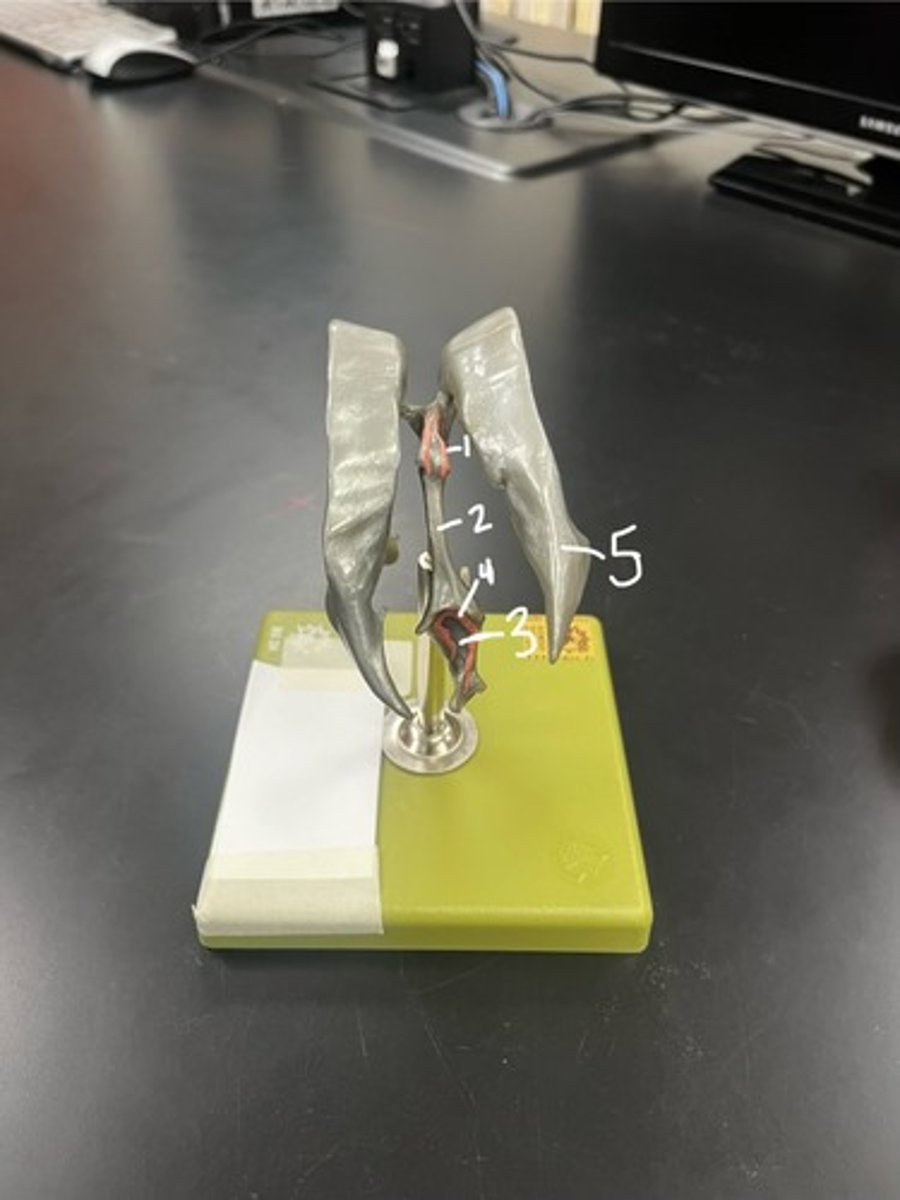
choroid plexus
According to the model, what does #4 represent? (pink areas)
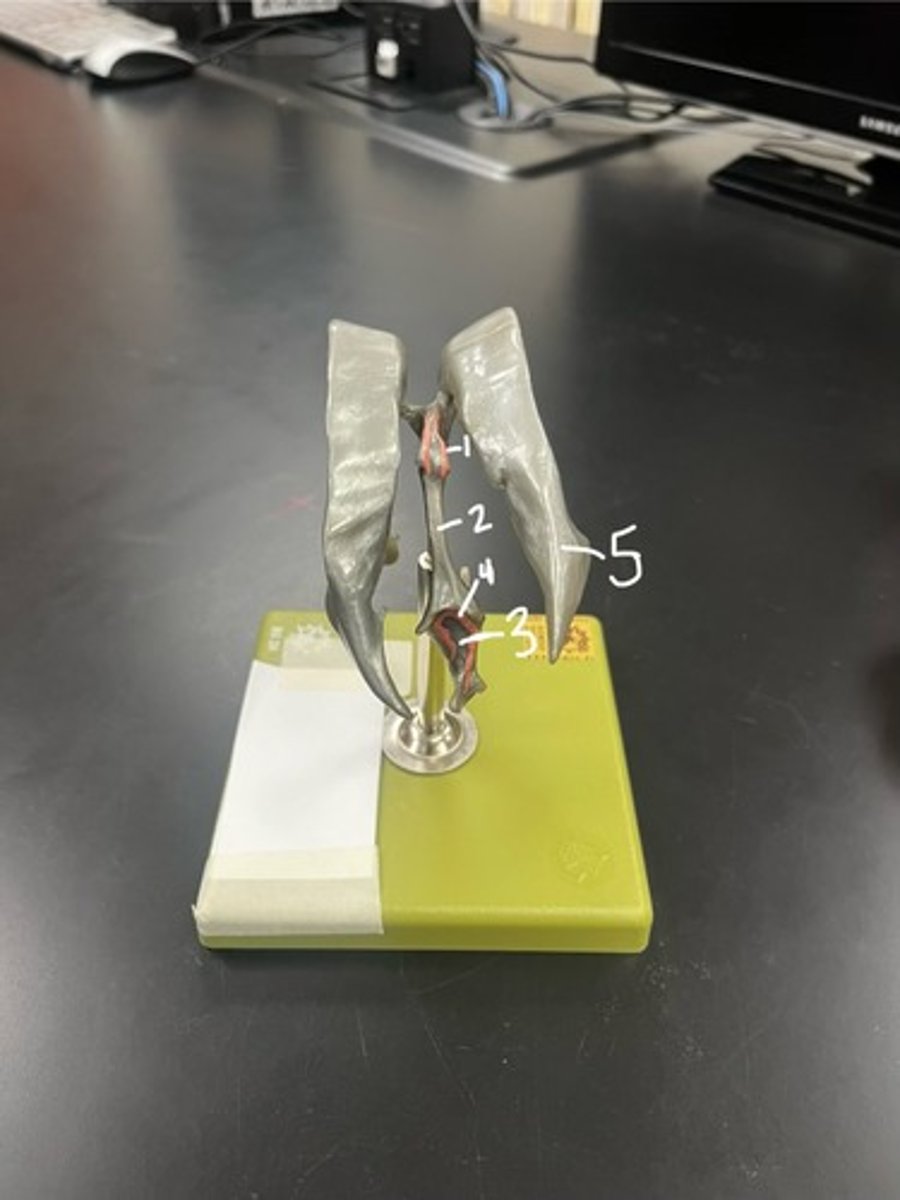
lateral ventricle
According to the model, what does #5 represent?
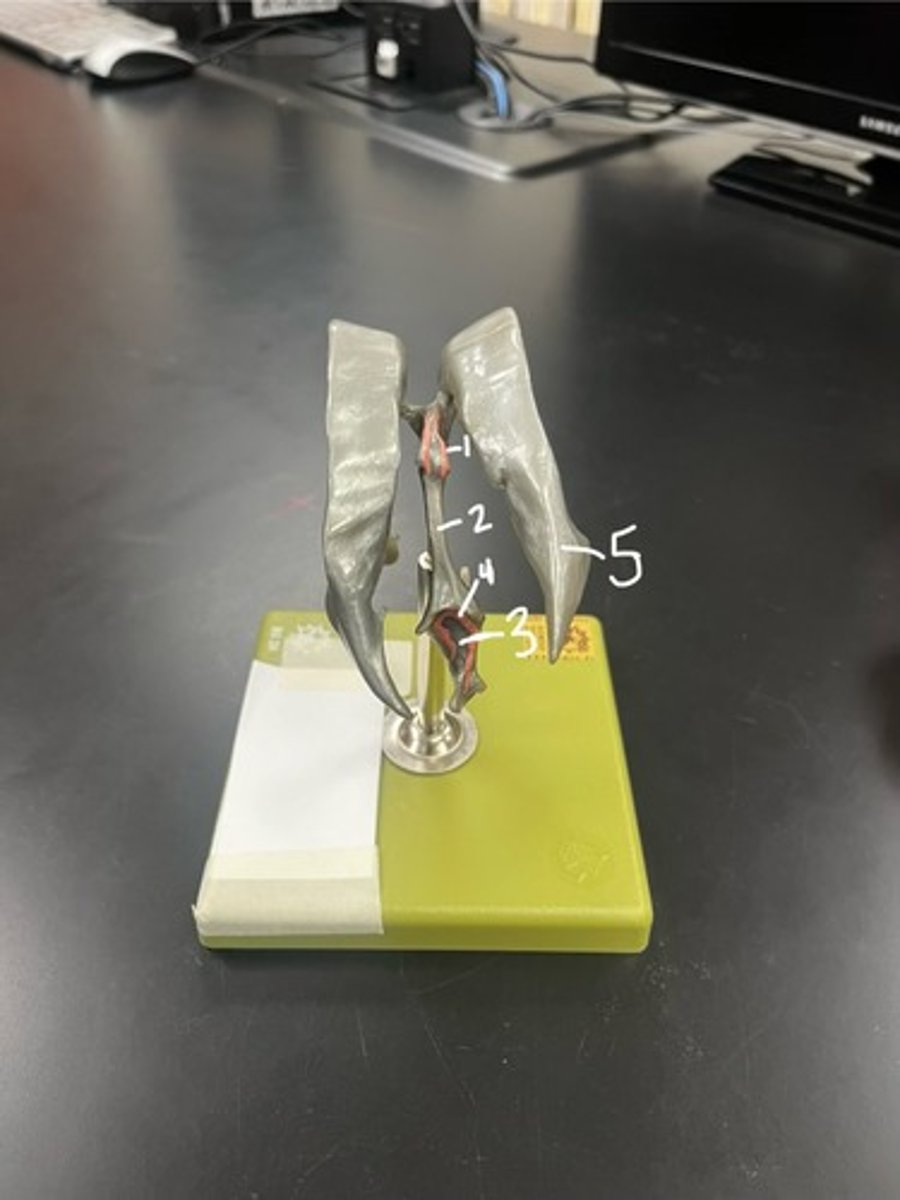
gyrus
According to the model, what does #1 represent?
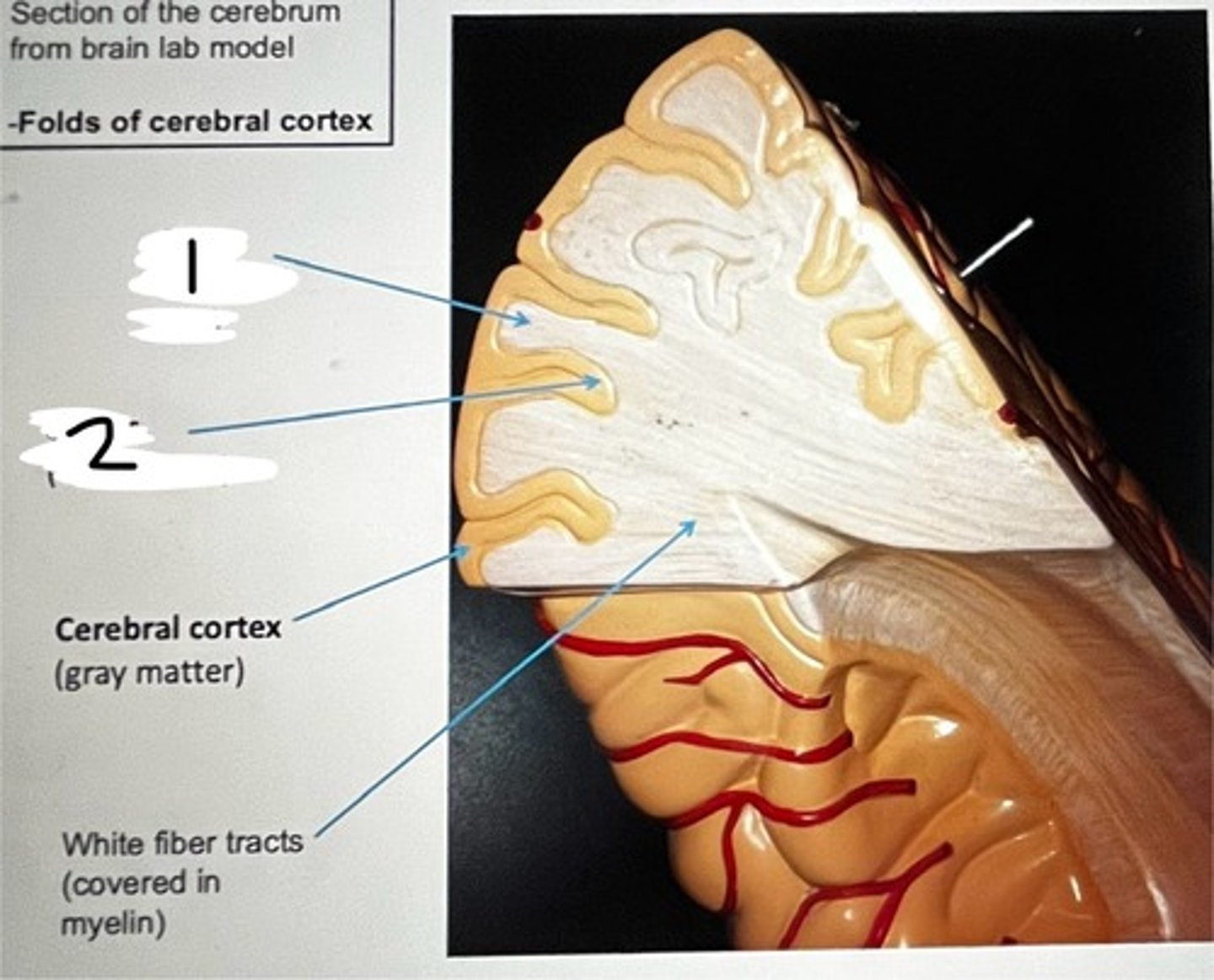
sulcus
According to the model, what does #2 represent?
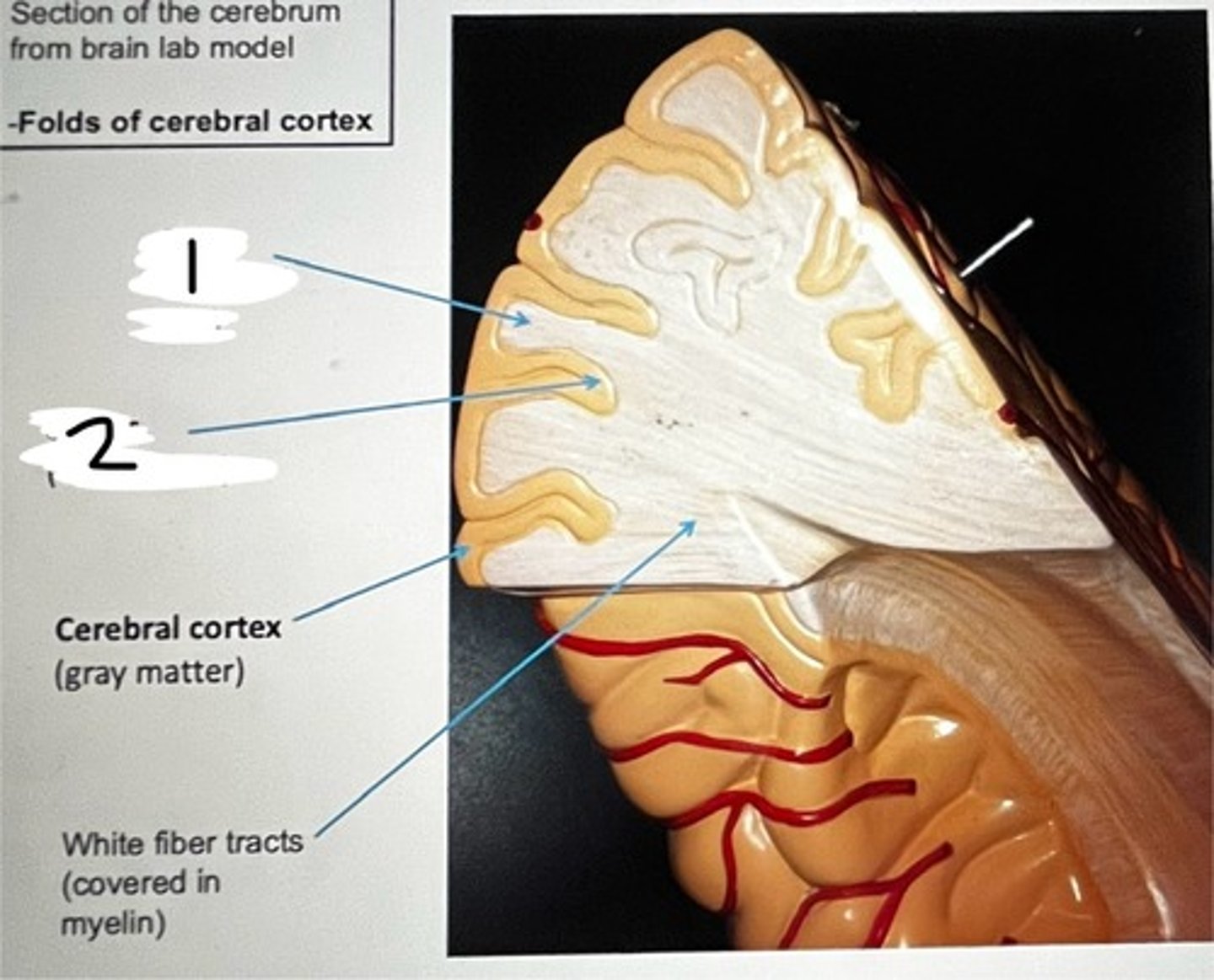
gyrus
According to the model, what does #1 represent?
